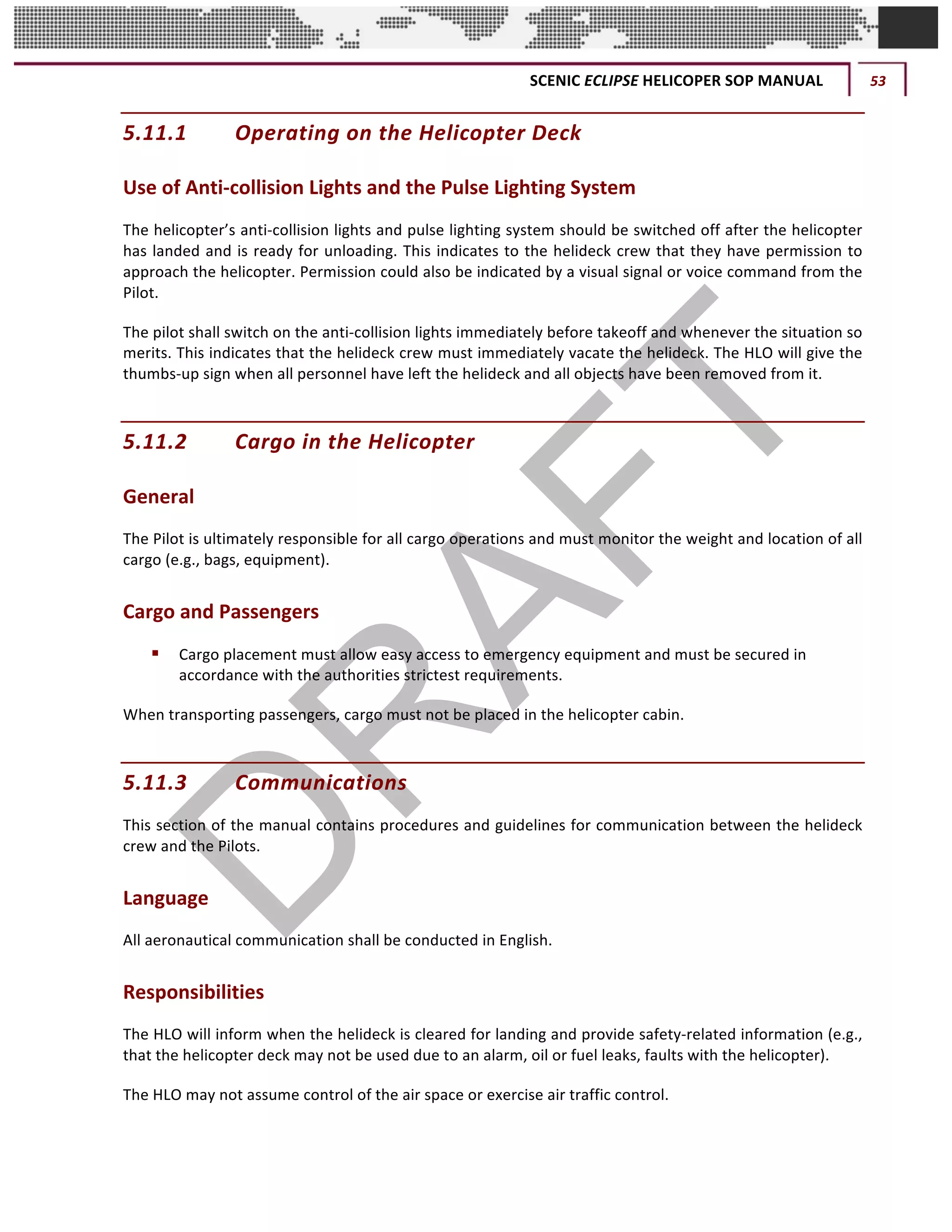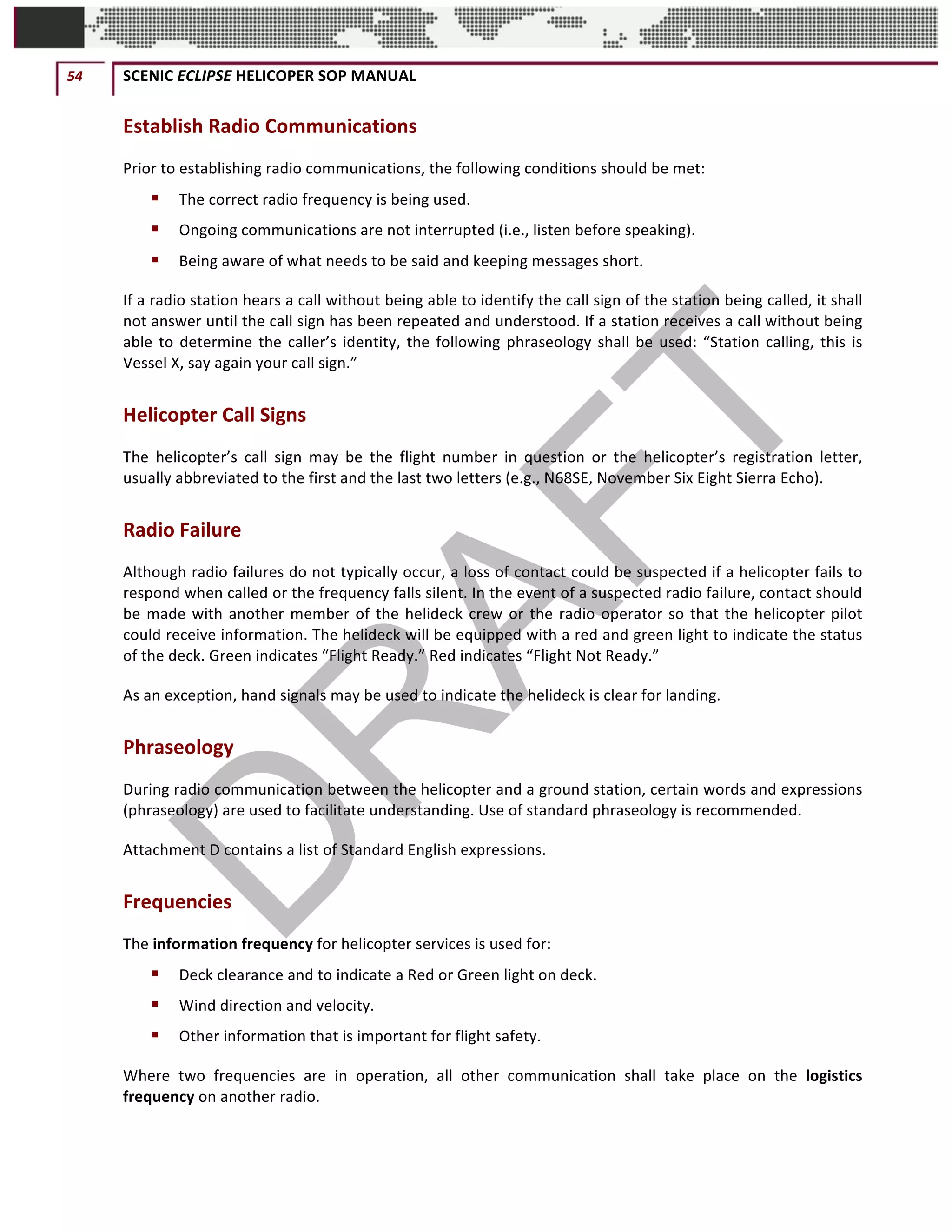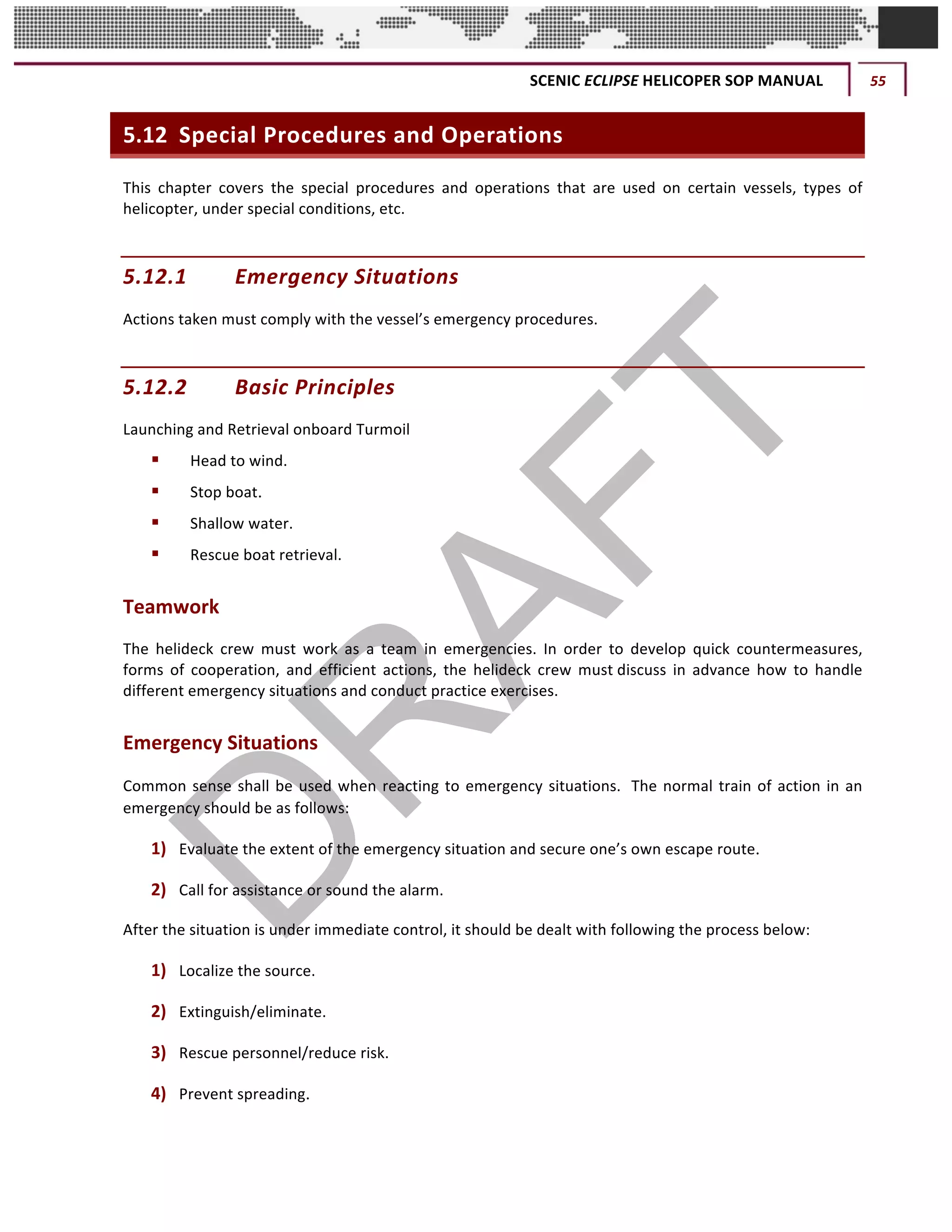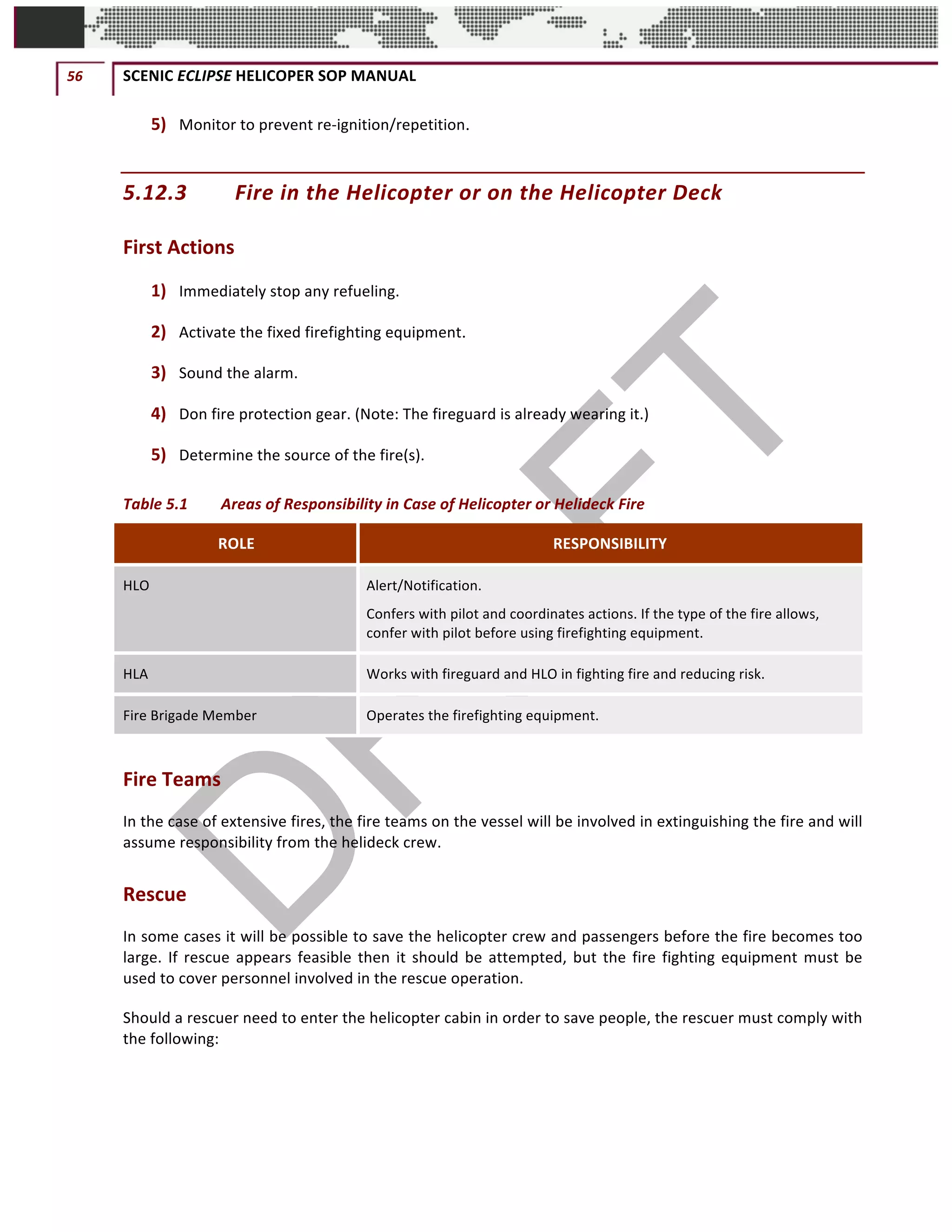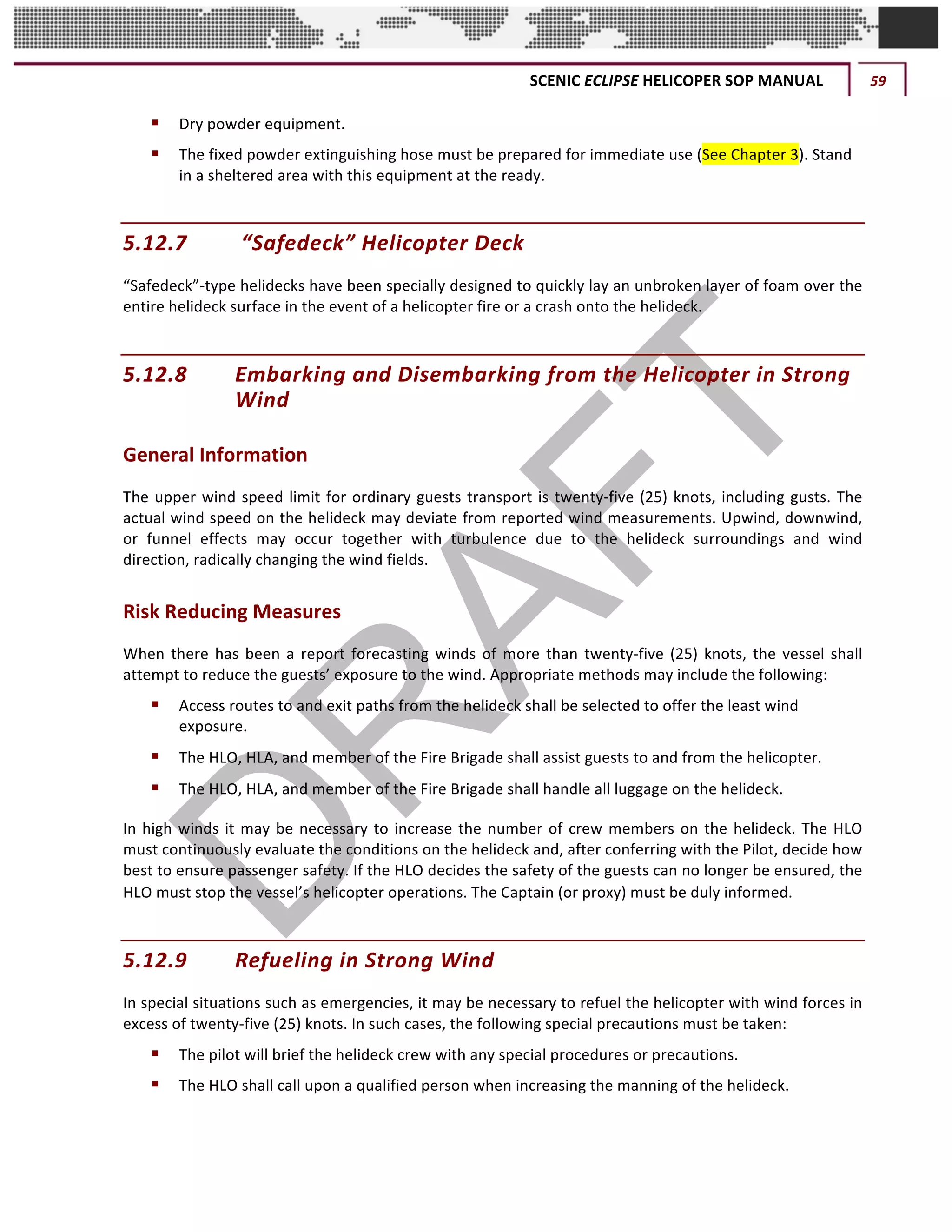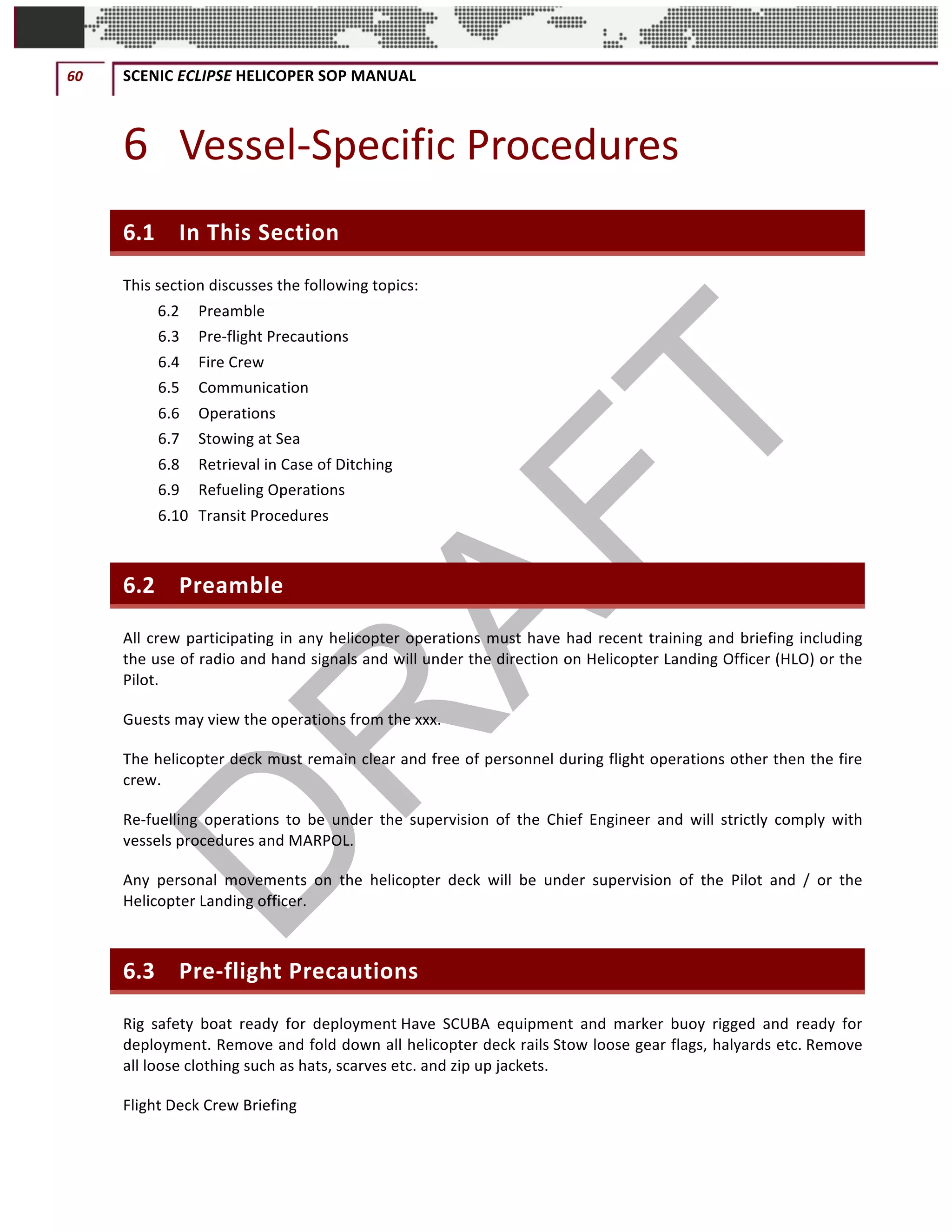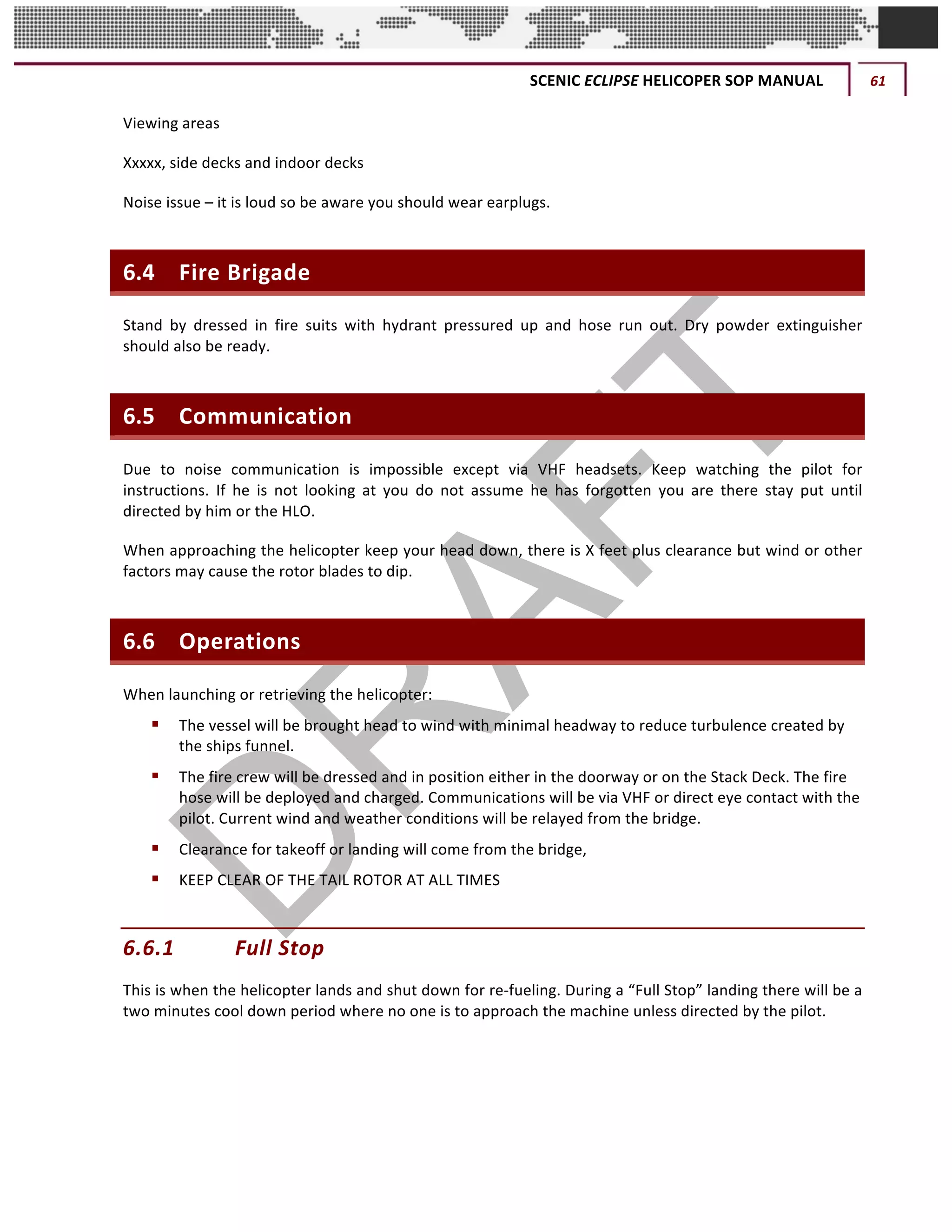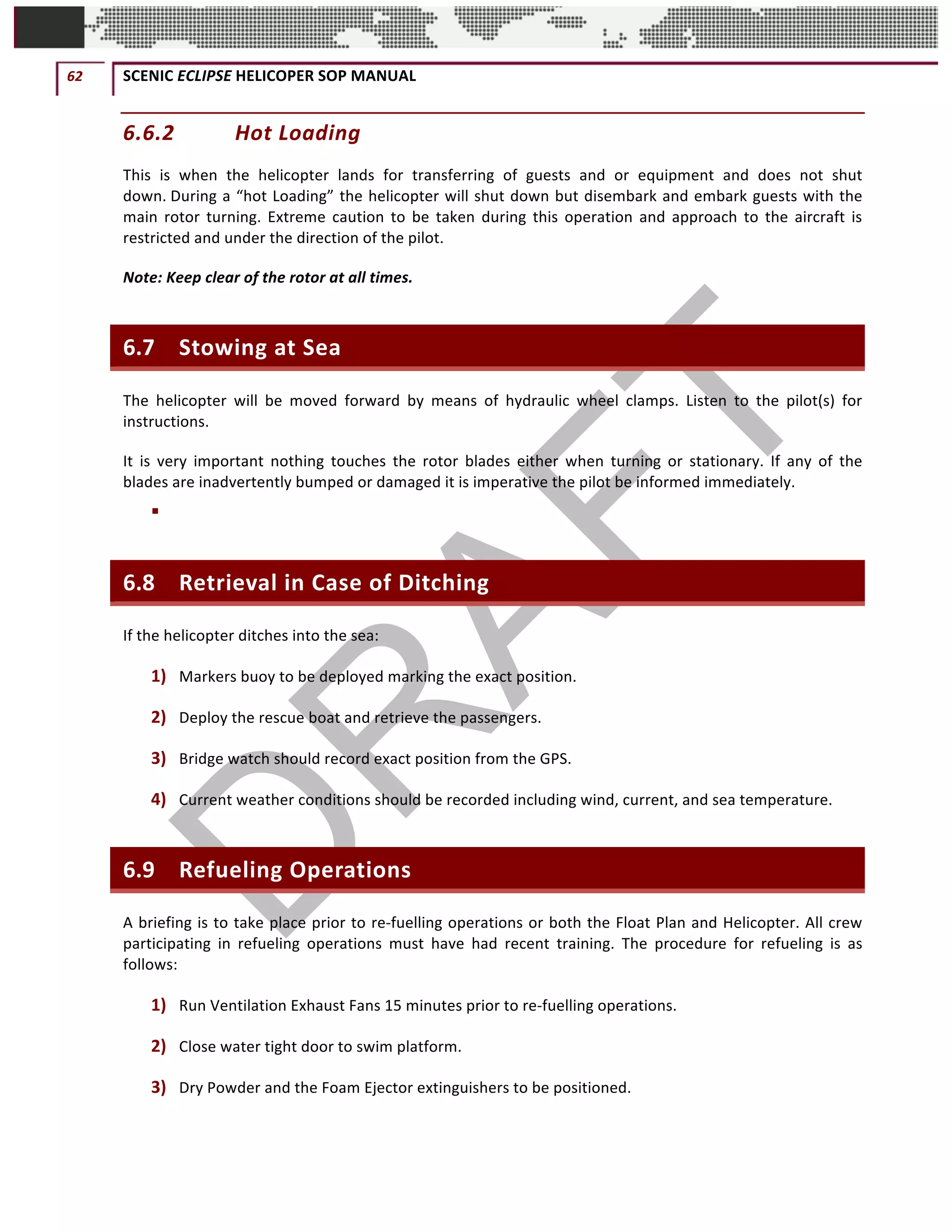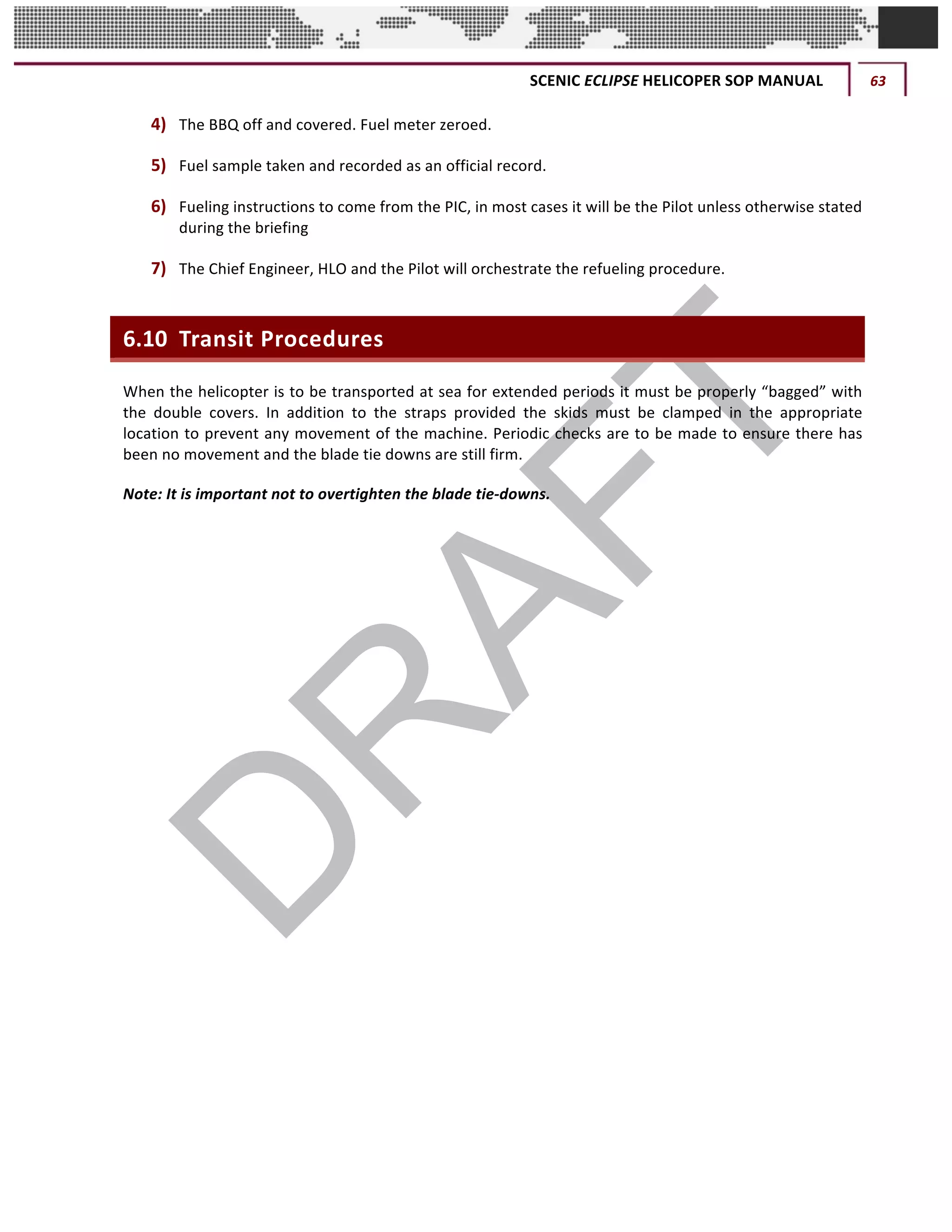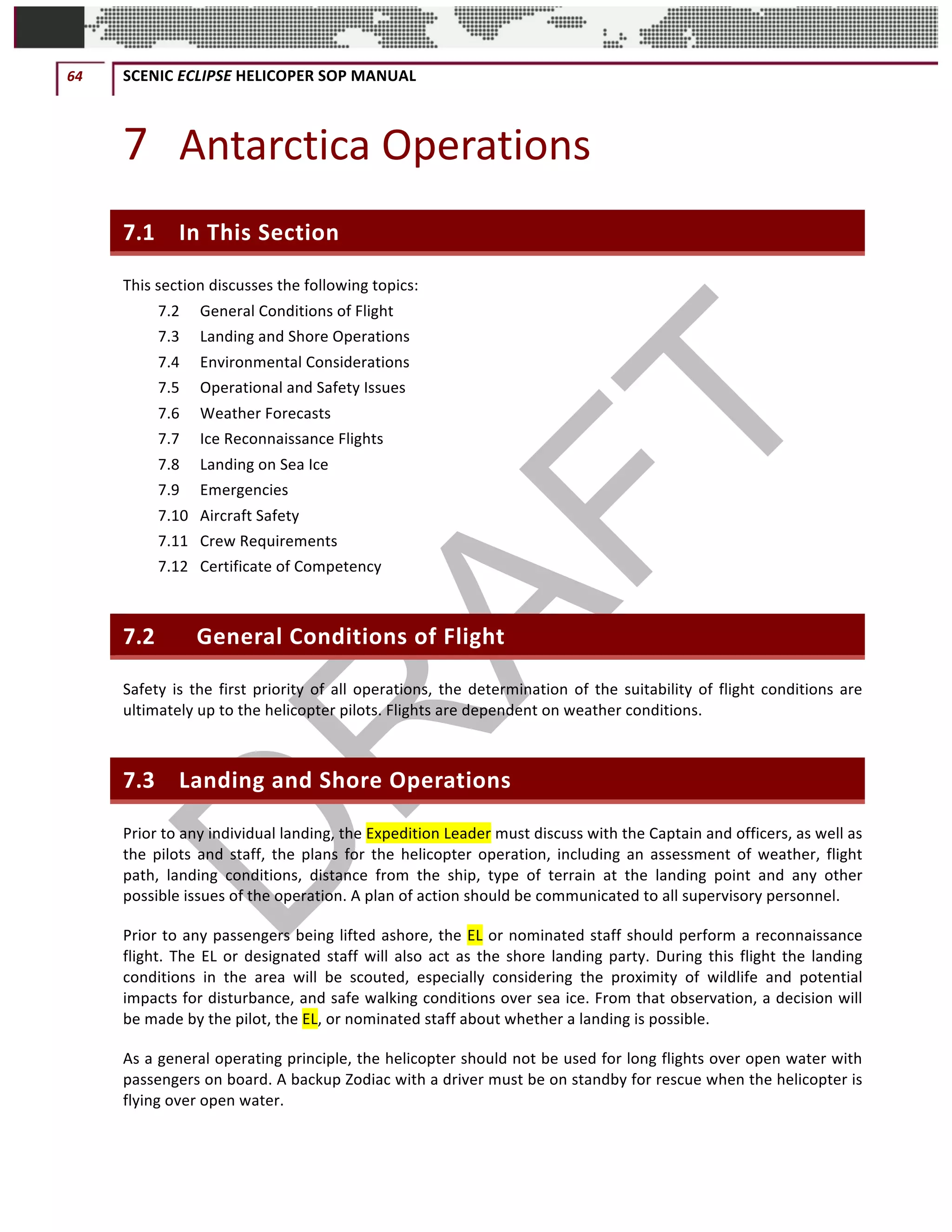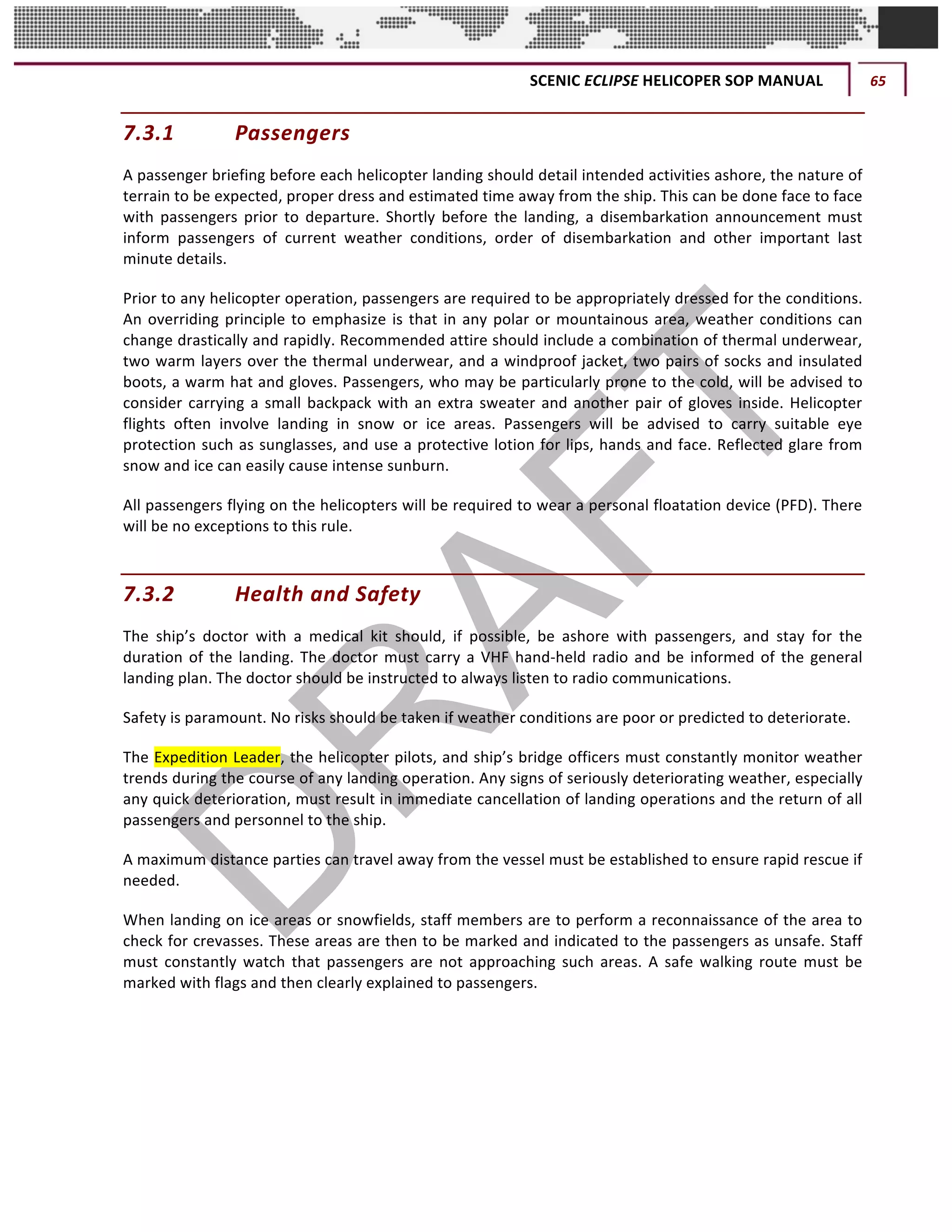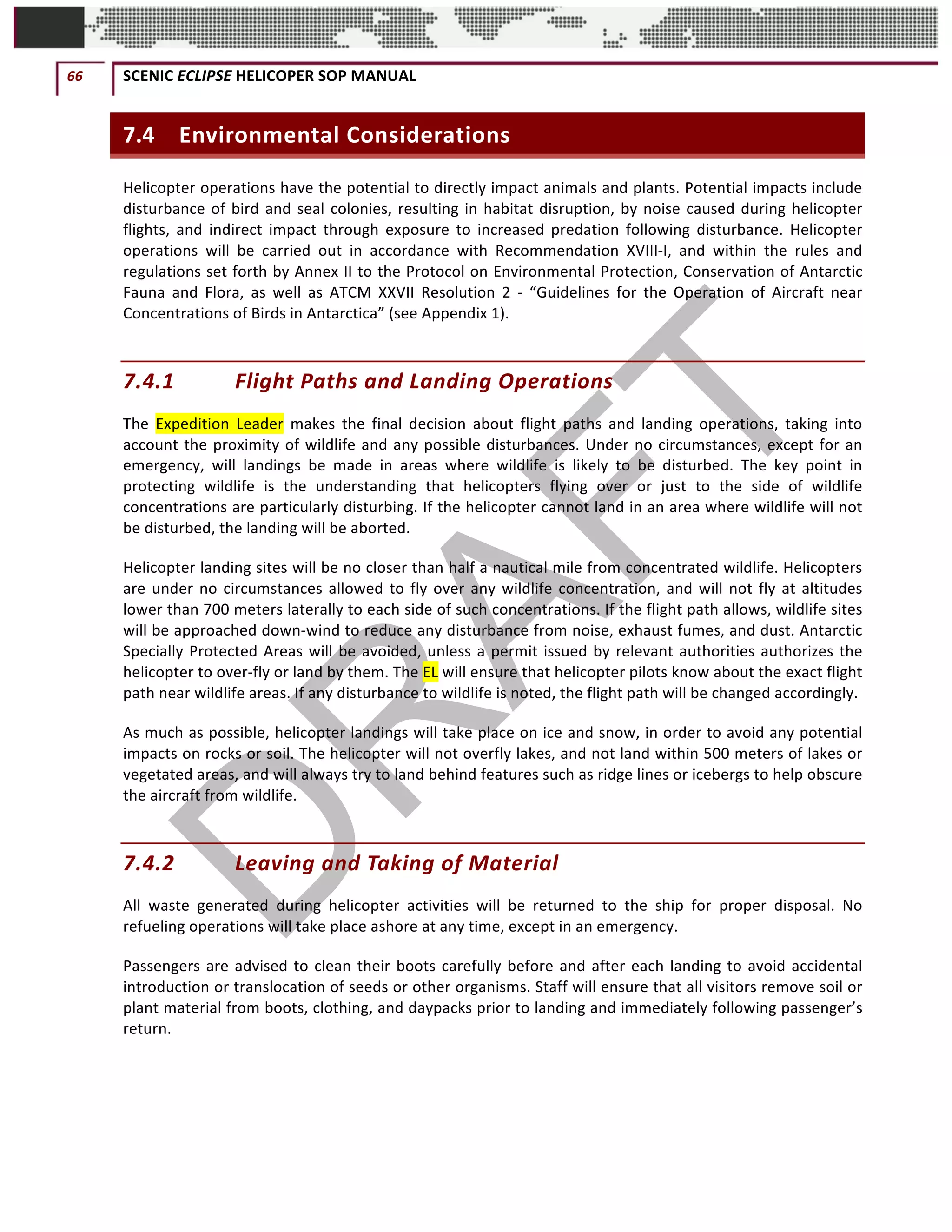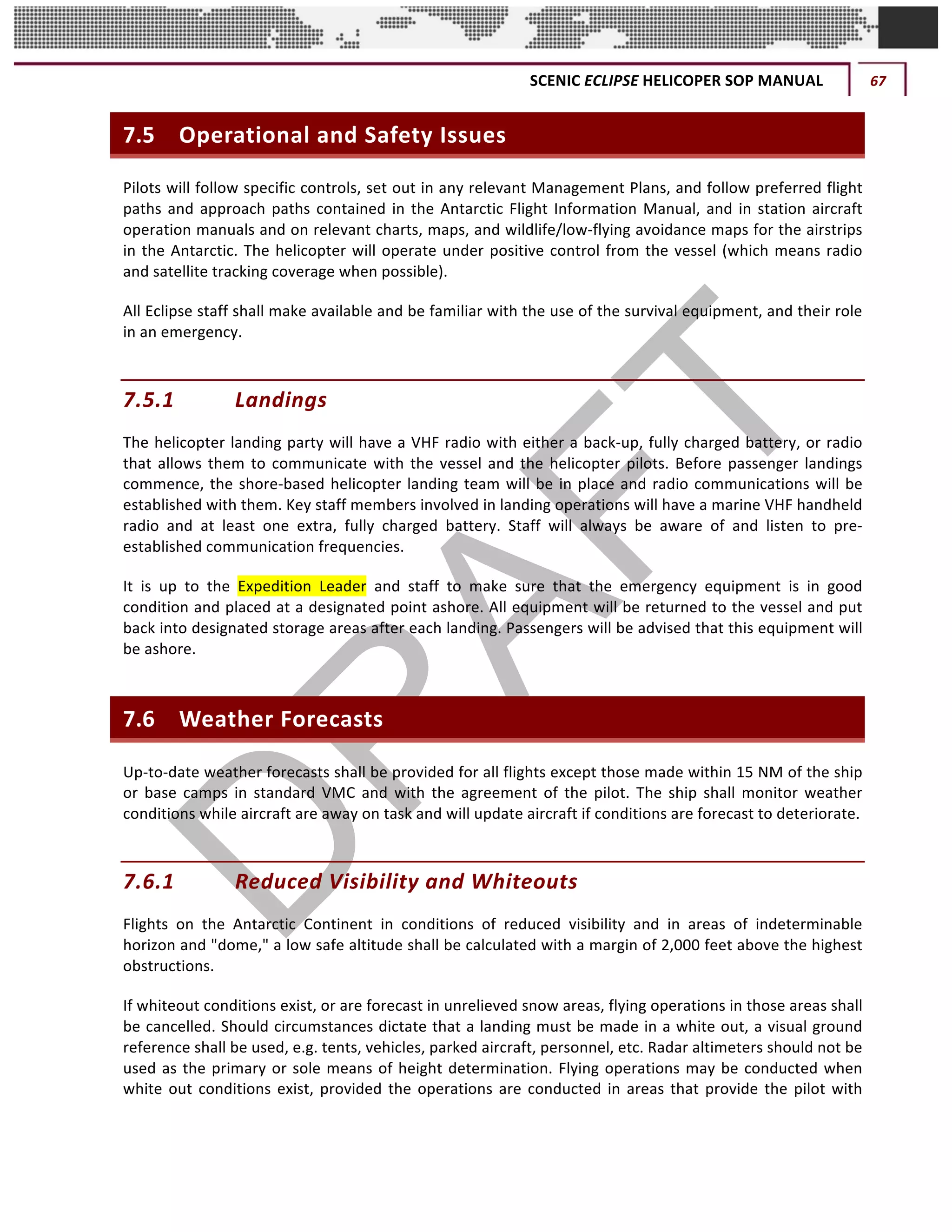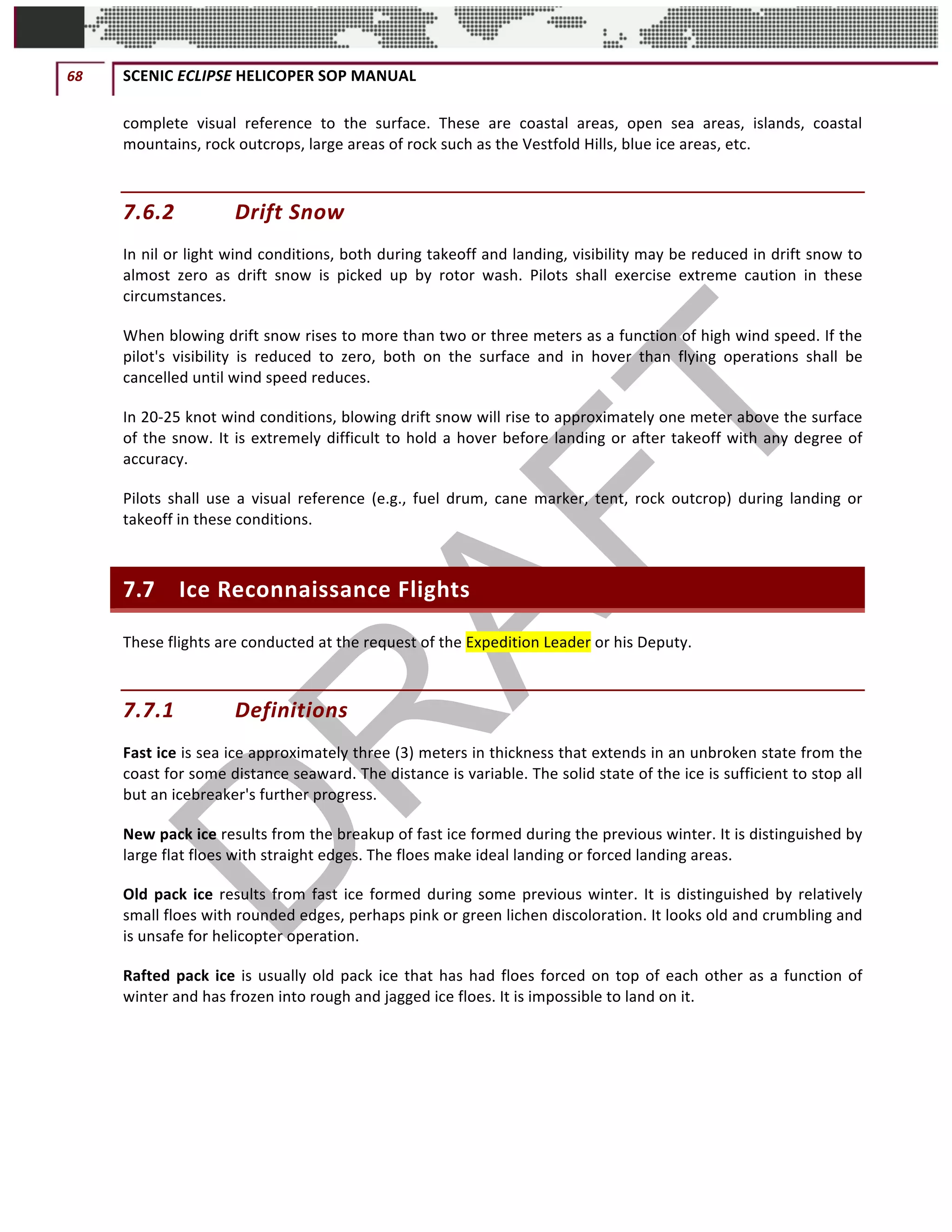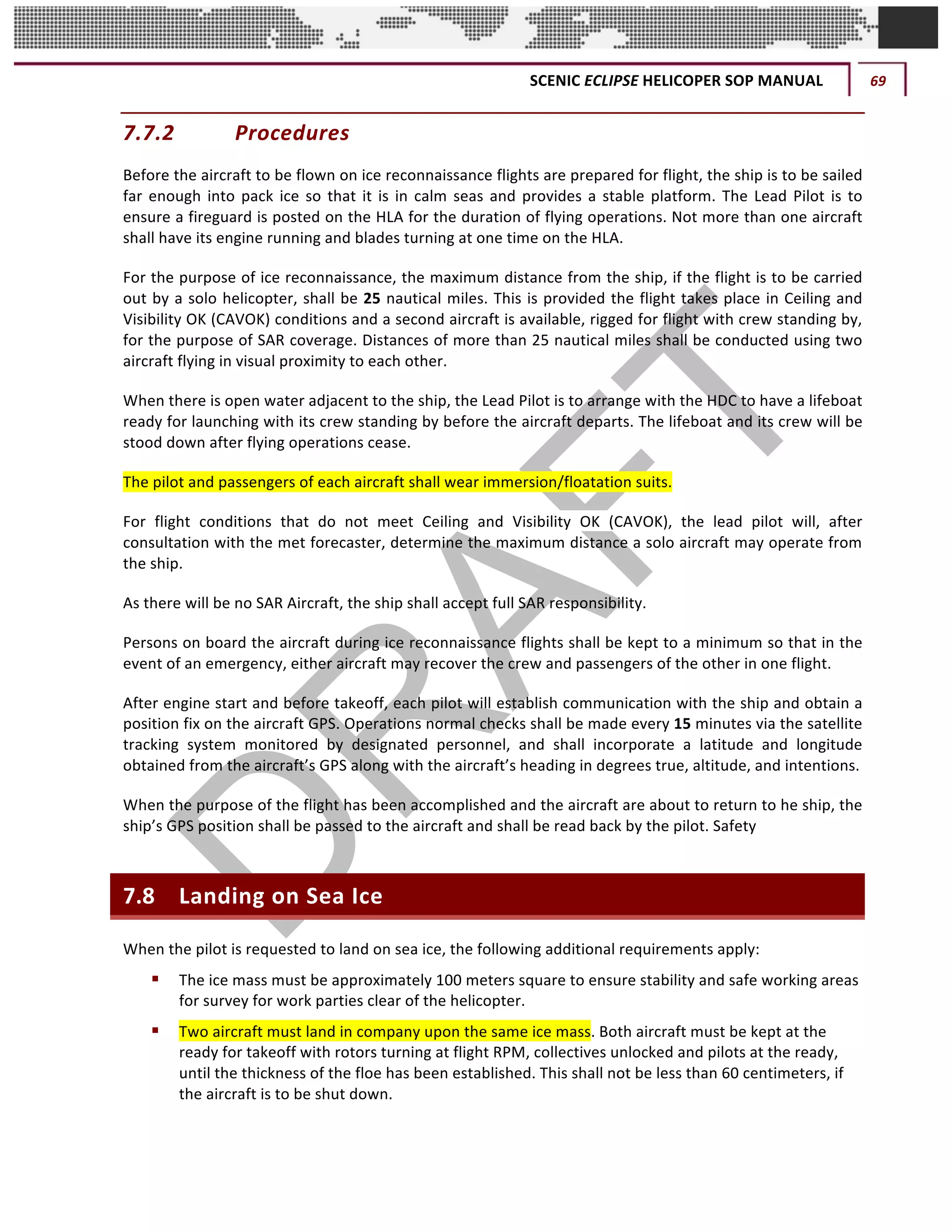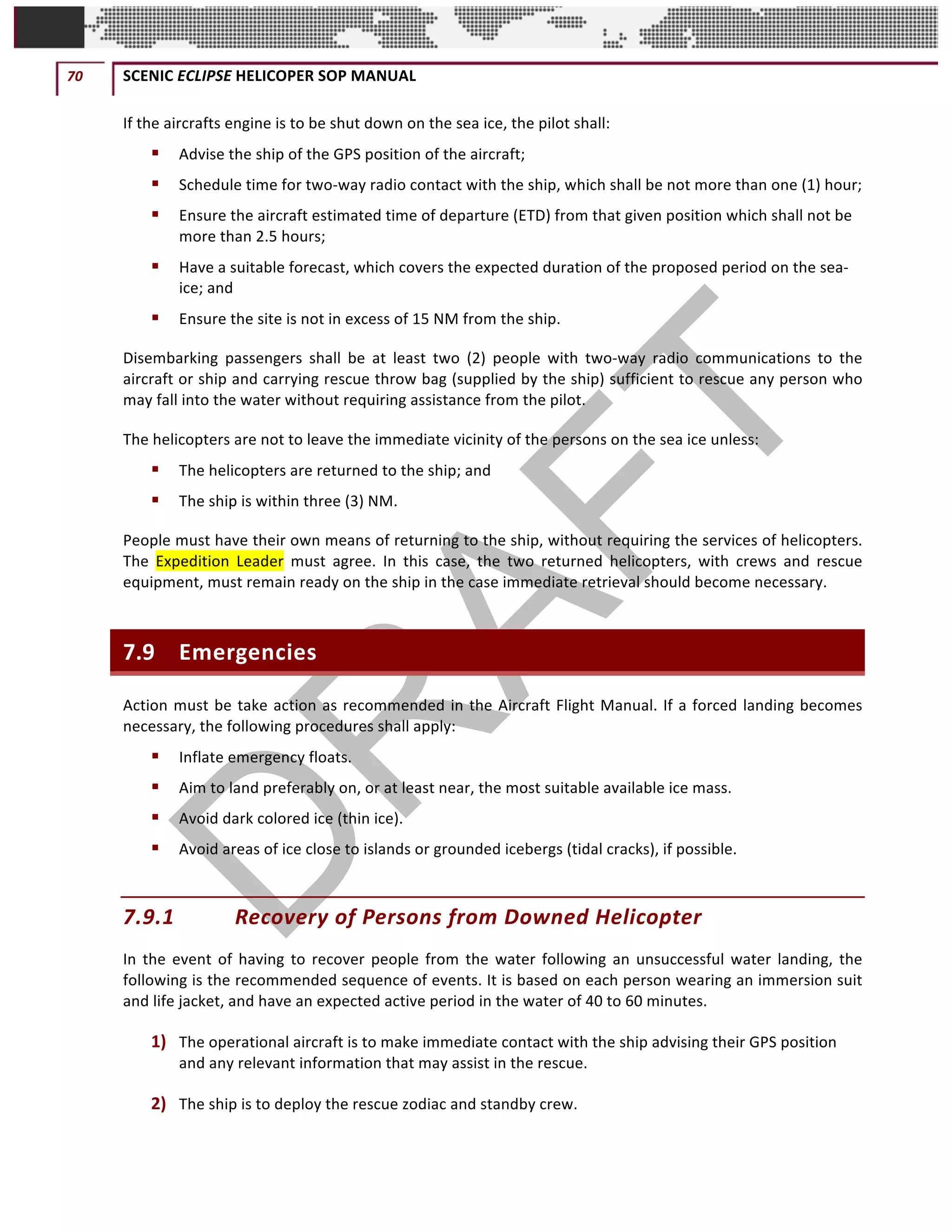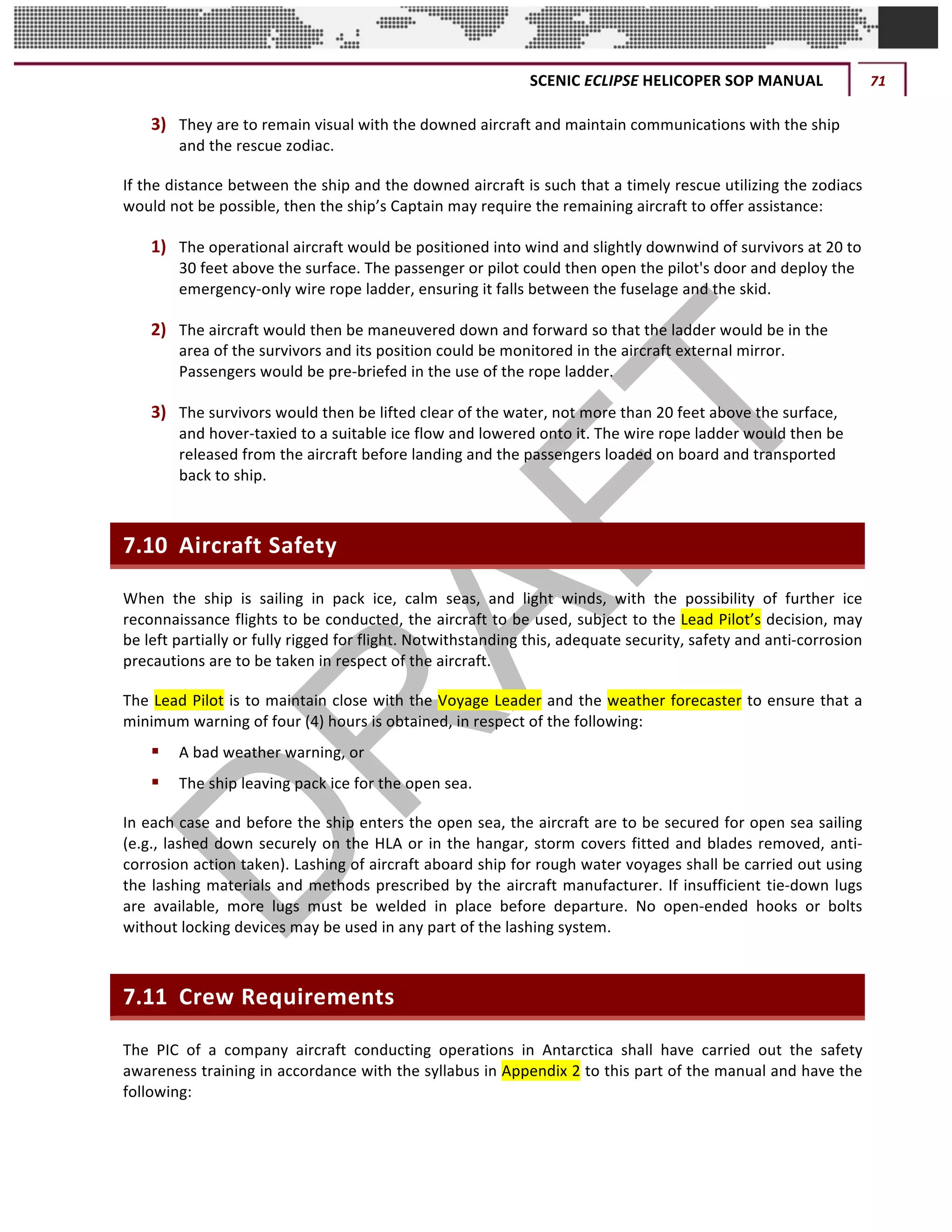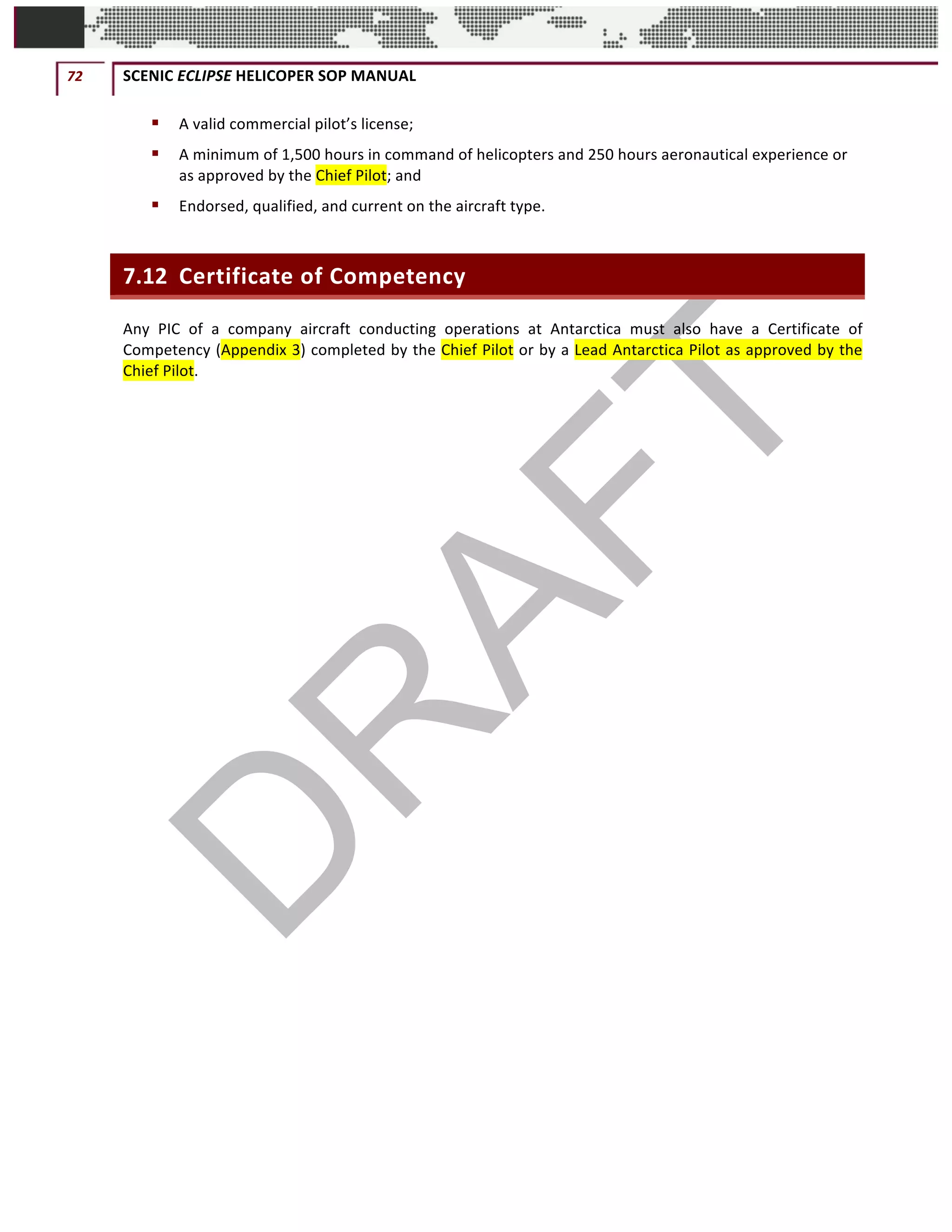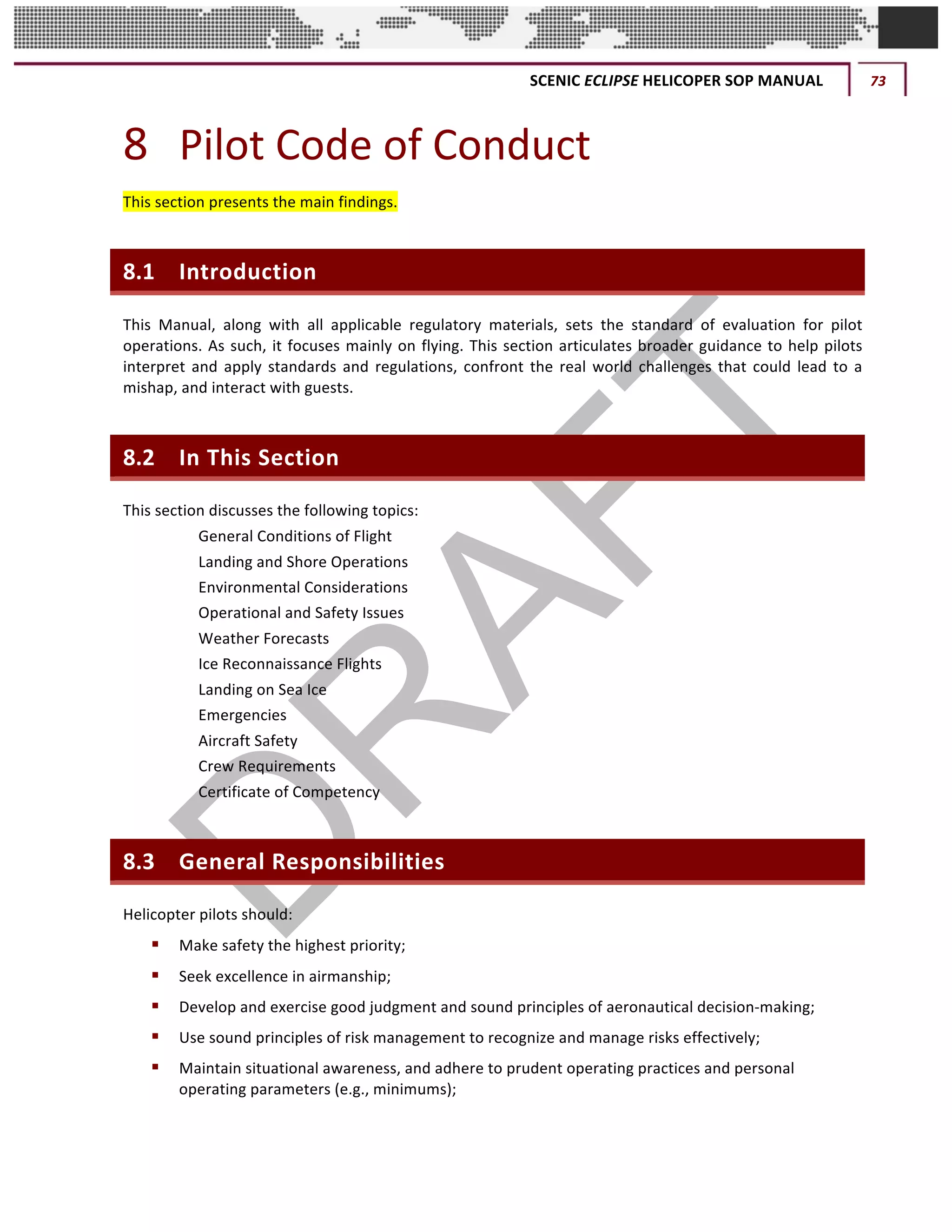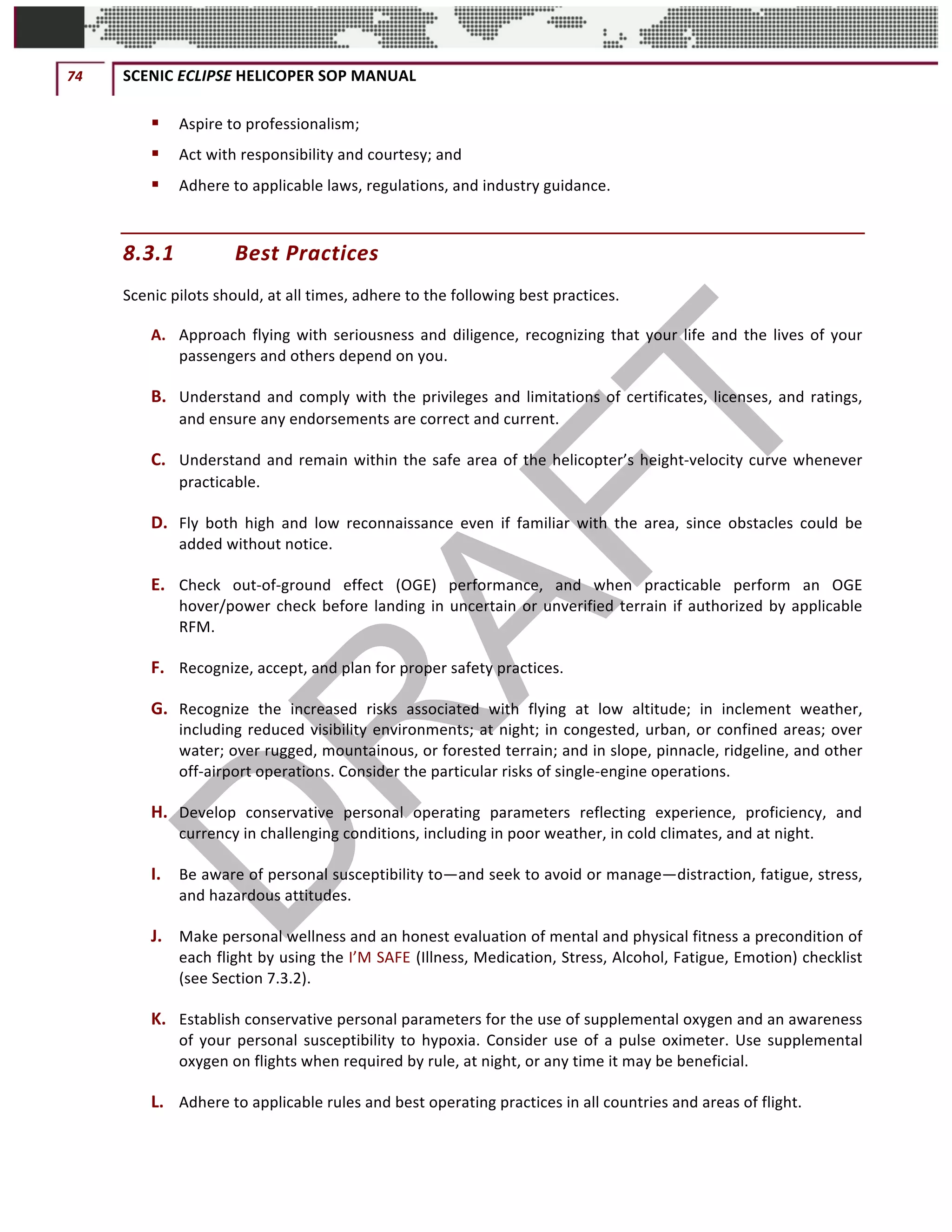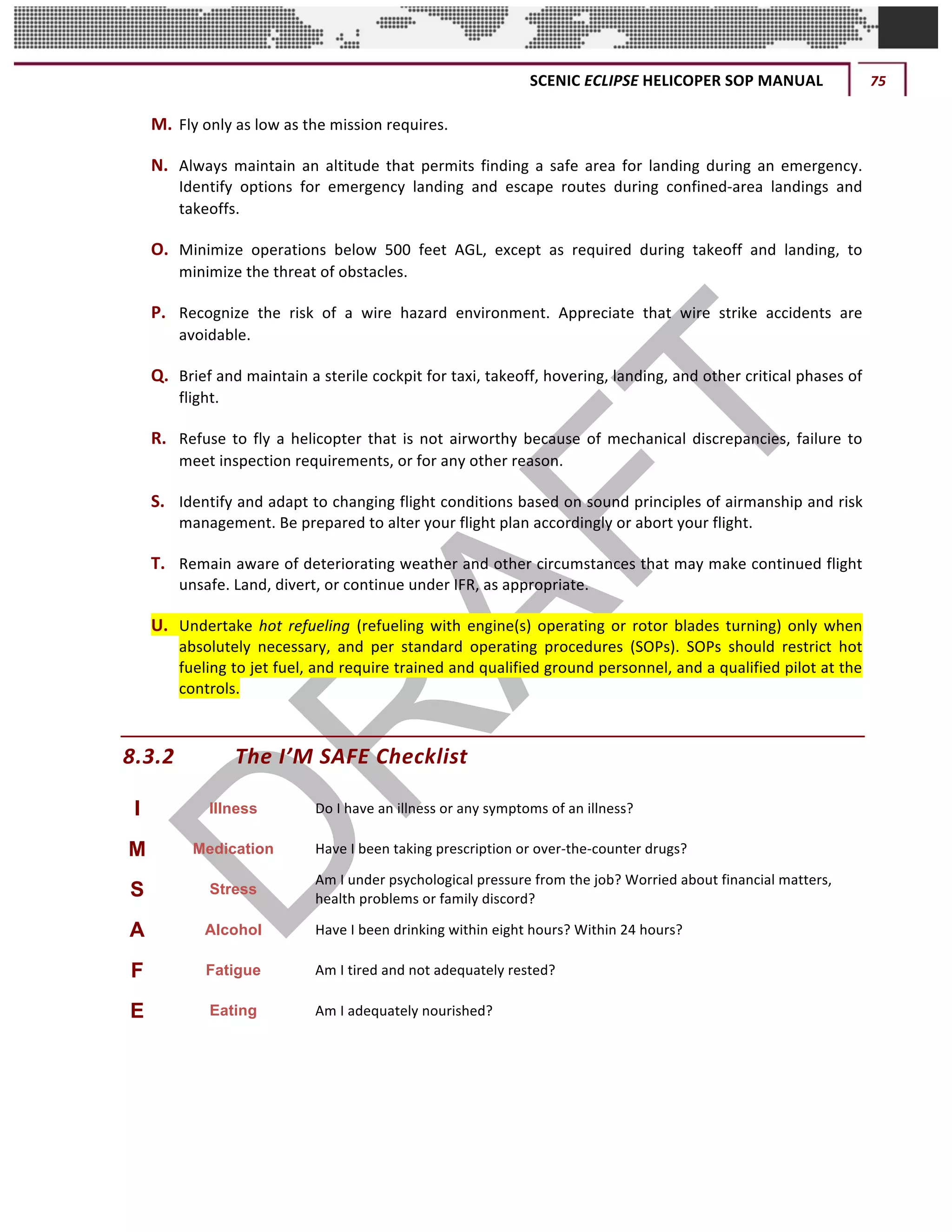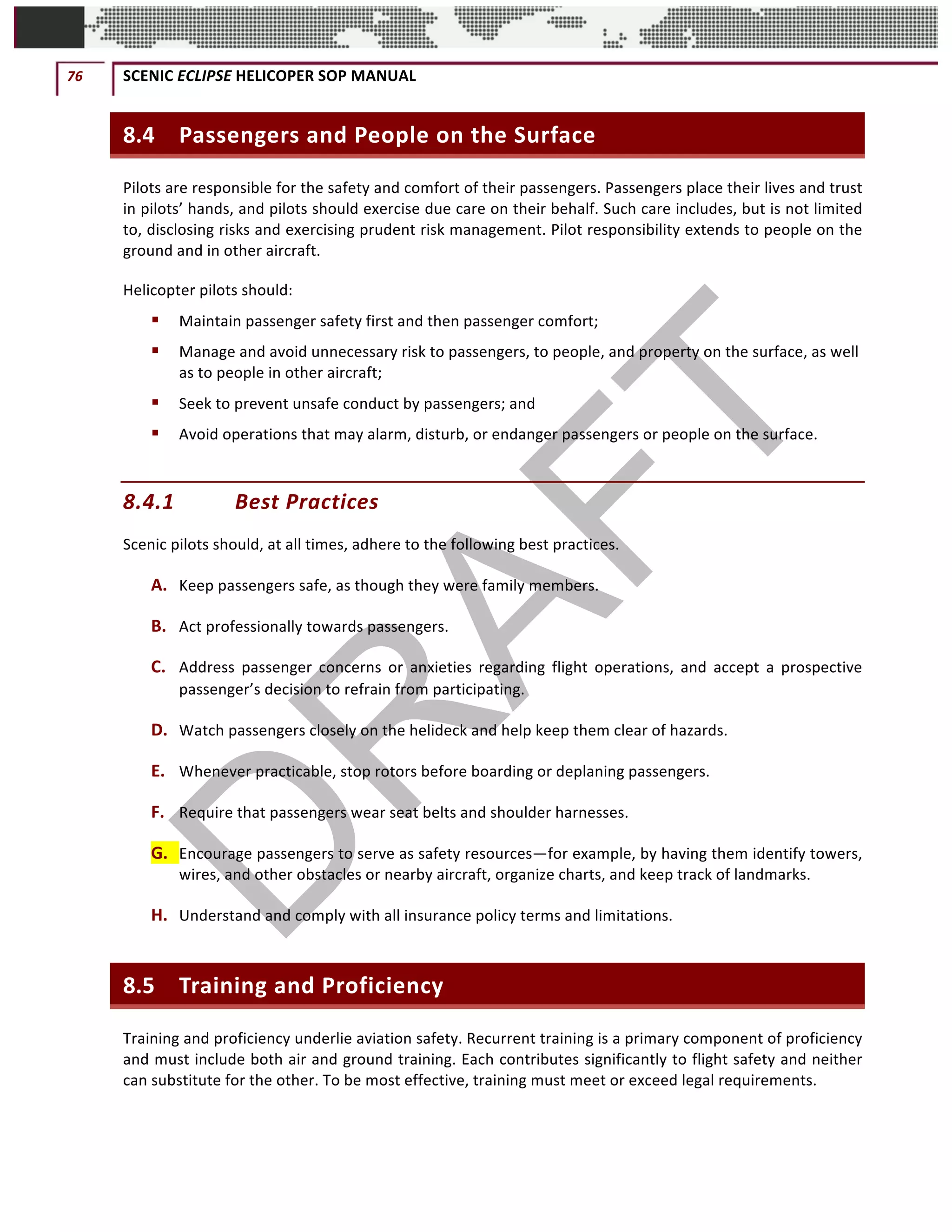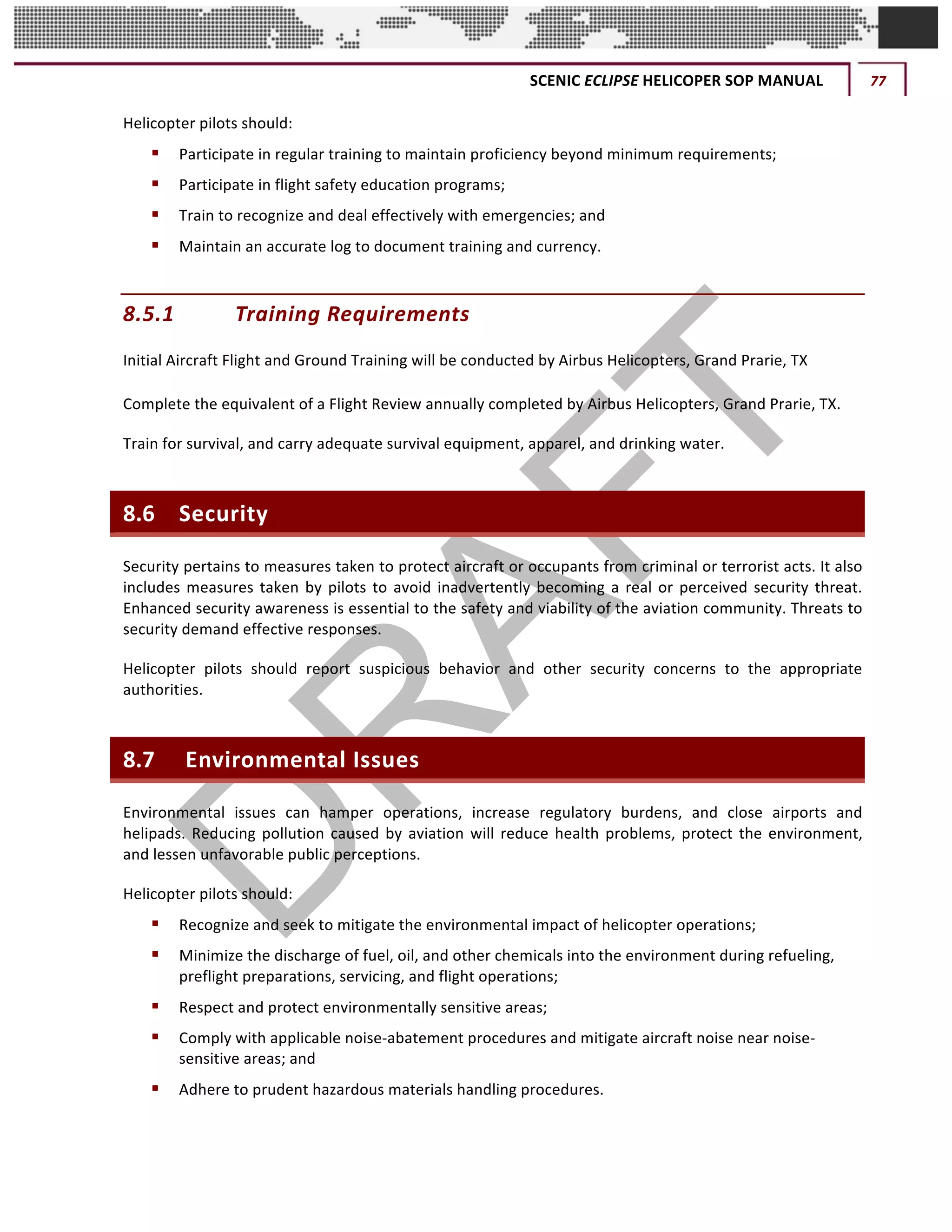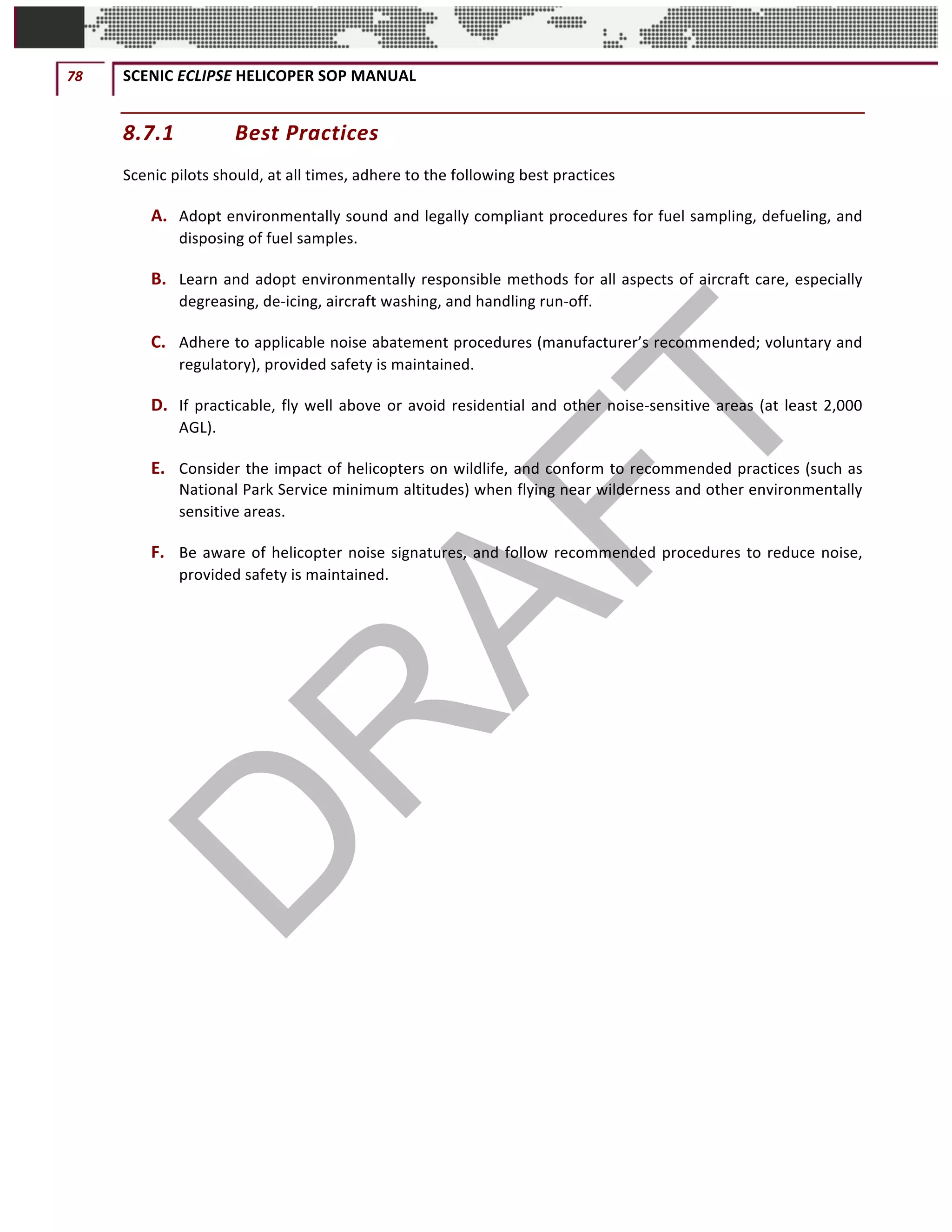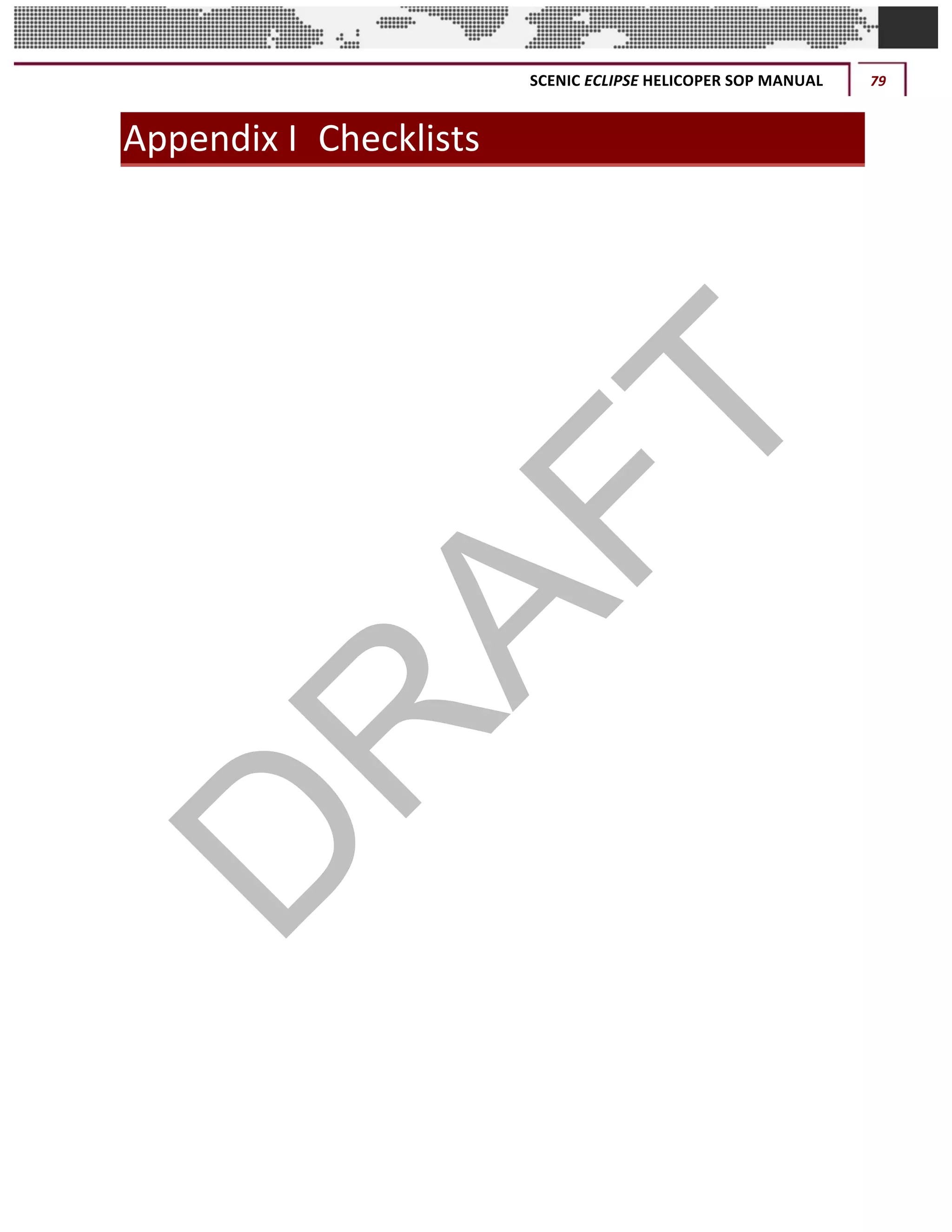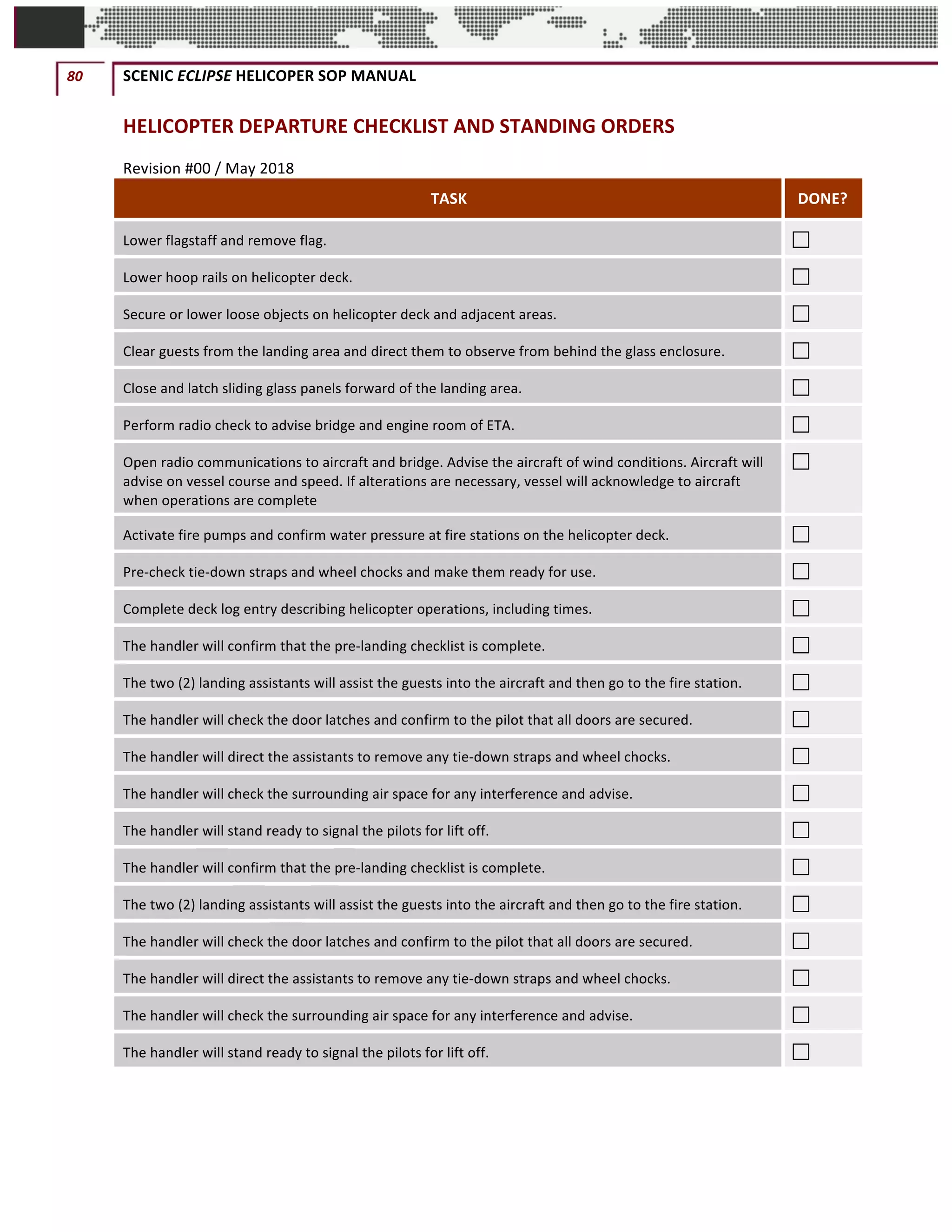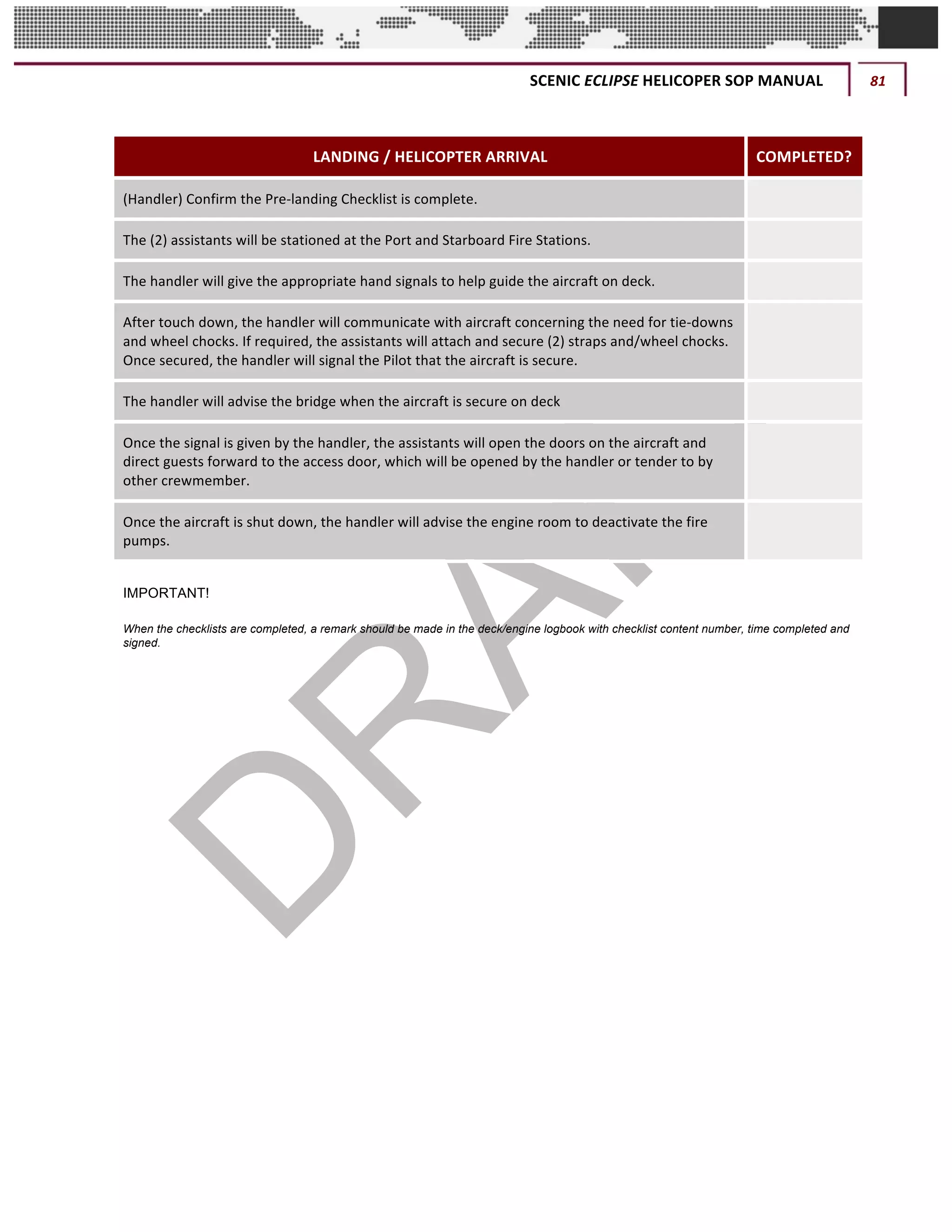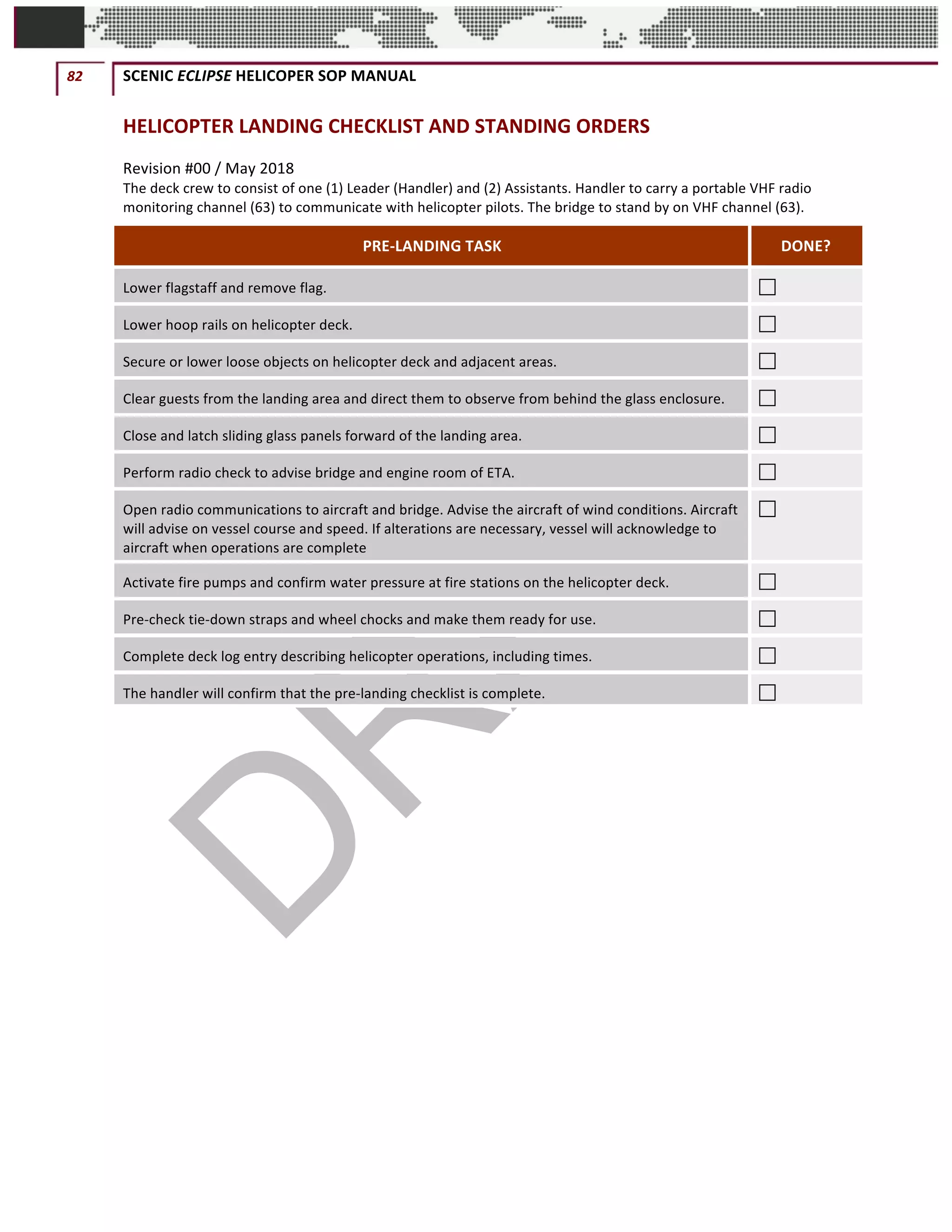The document is a Standard Operating Procedures (SOP) manual for helicopter flight operations for Scenic Luxury Cruises and Tours' vessel, Eclipse, intended to ensure safe and efficient operations according to federal aviation regulations. It outlines organizational structure, operational guidelines, and emergency protocols for aviation and ground personnel involved in rotary wing aircraft operations. The manual is designed to be a live document, ensuring it reflects current best practices and operational requirements.
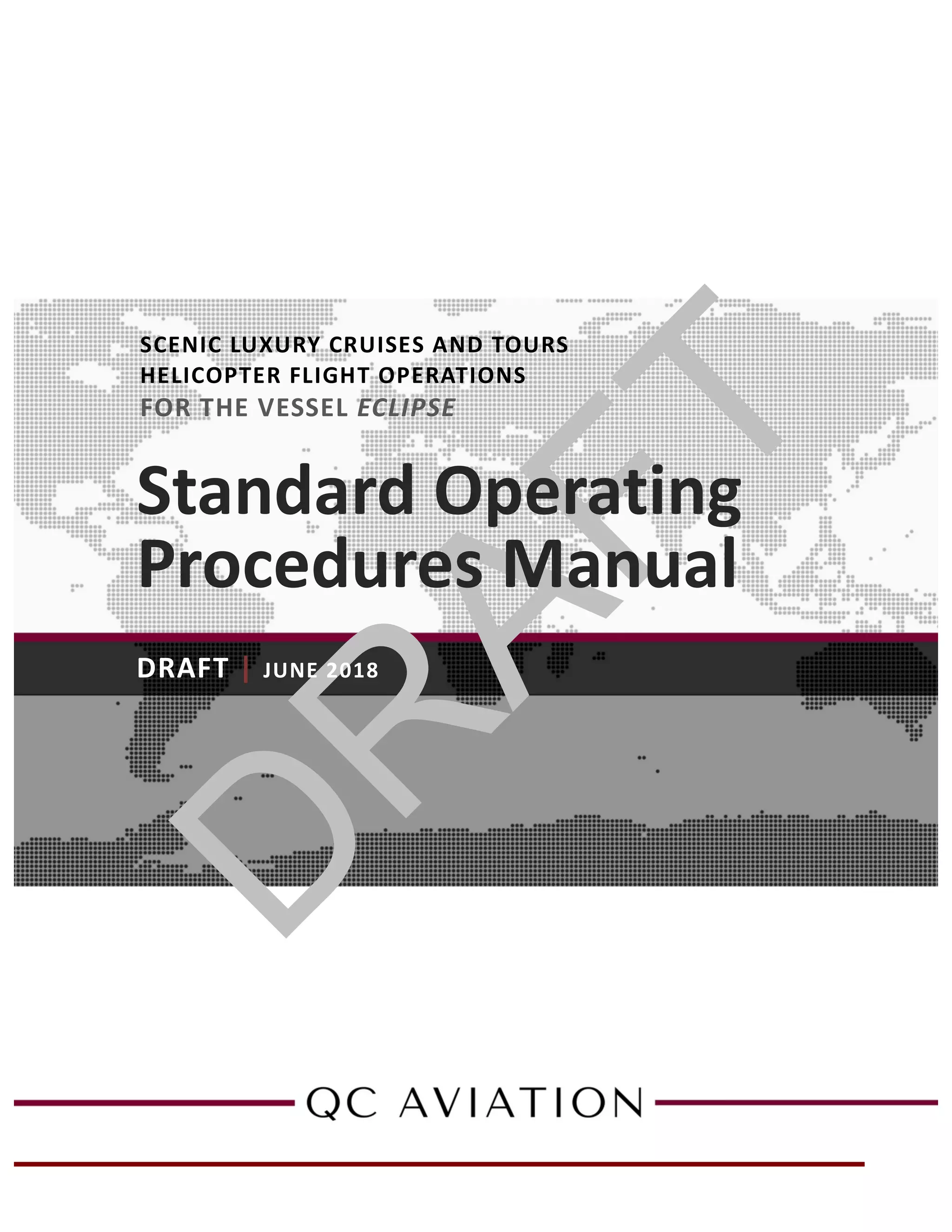
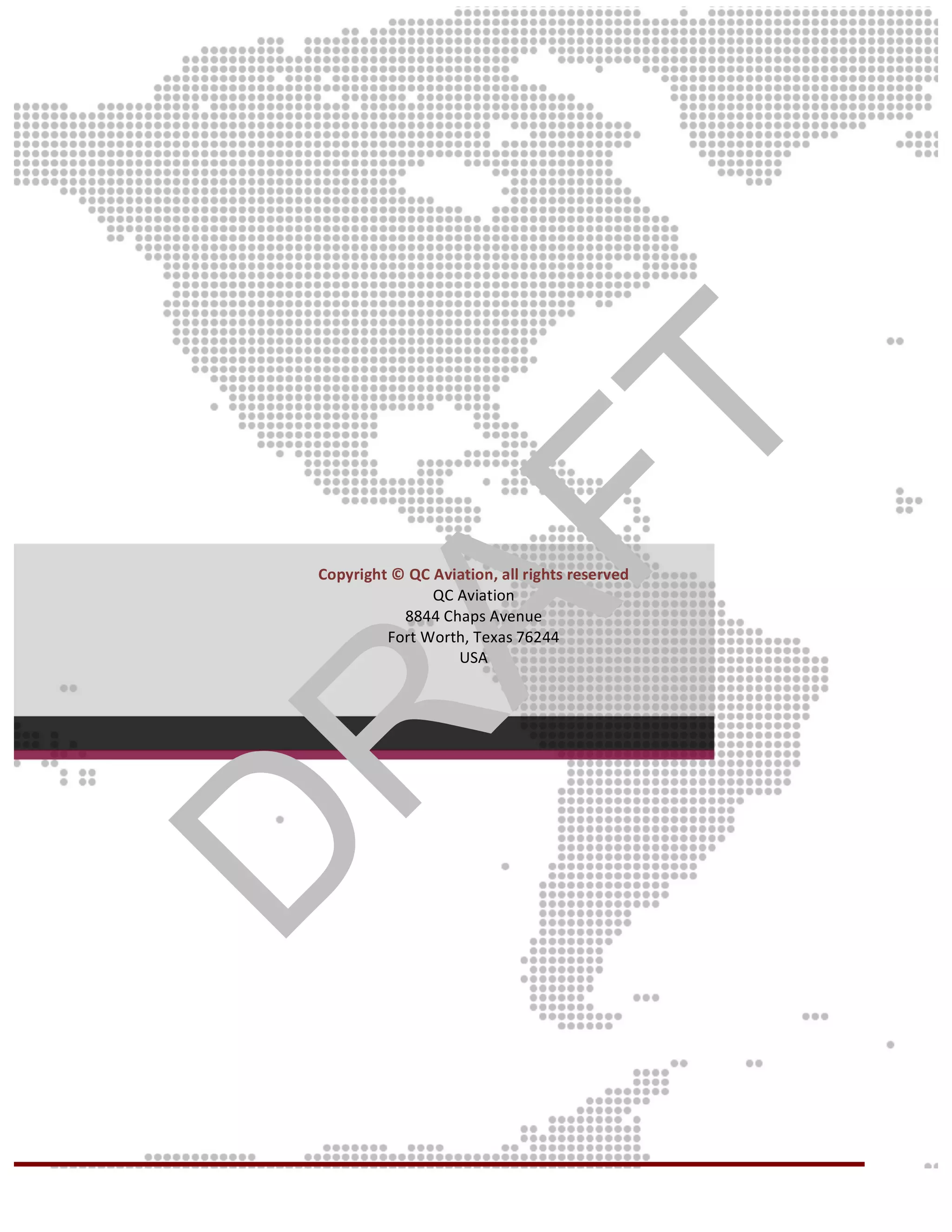
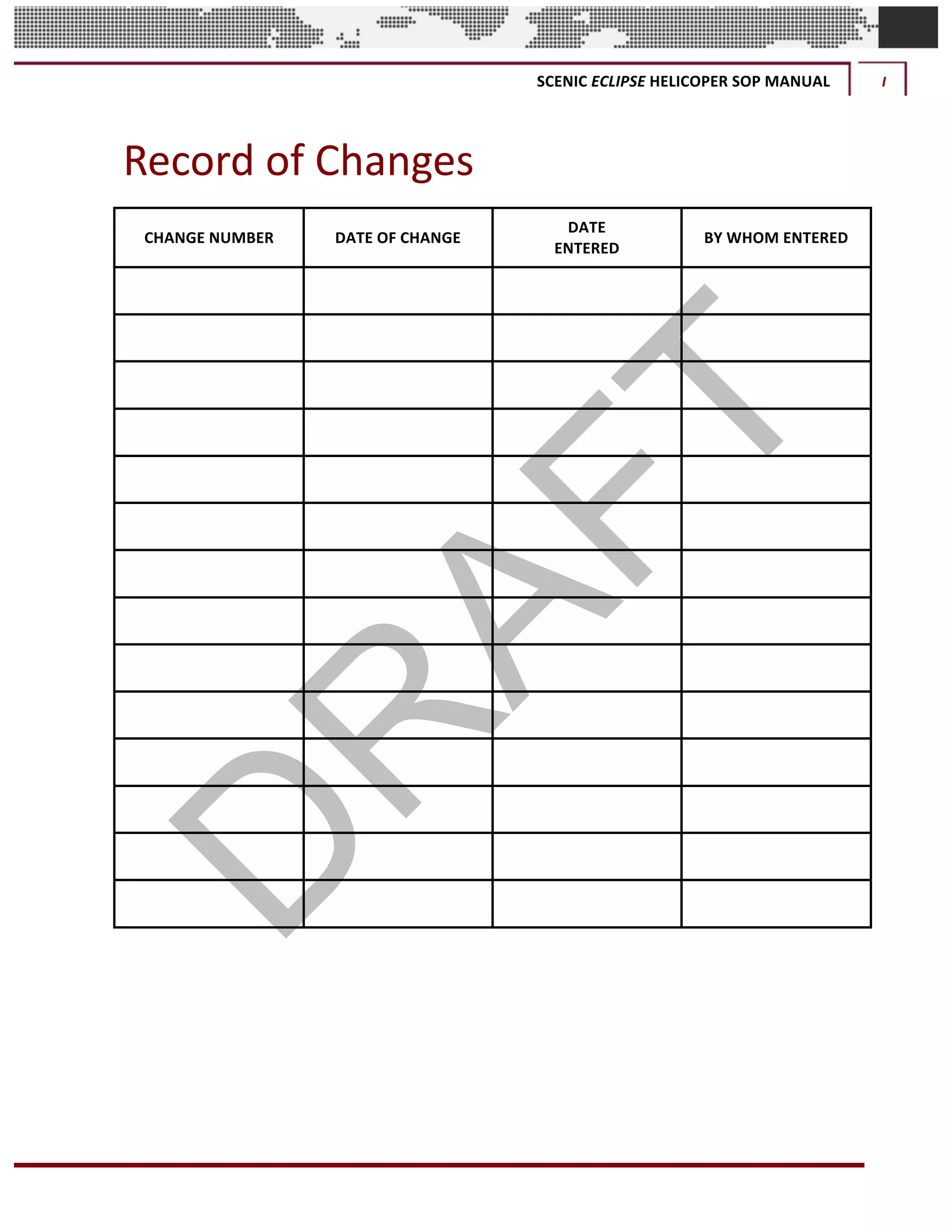
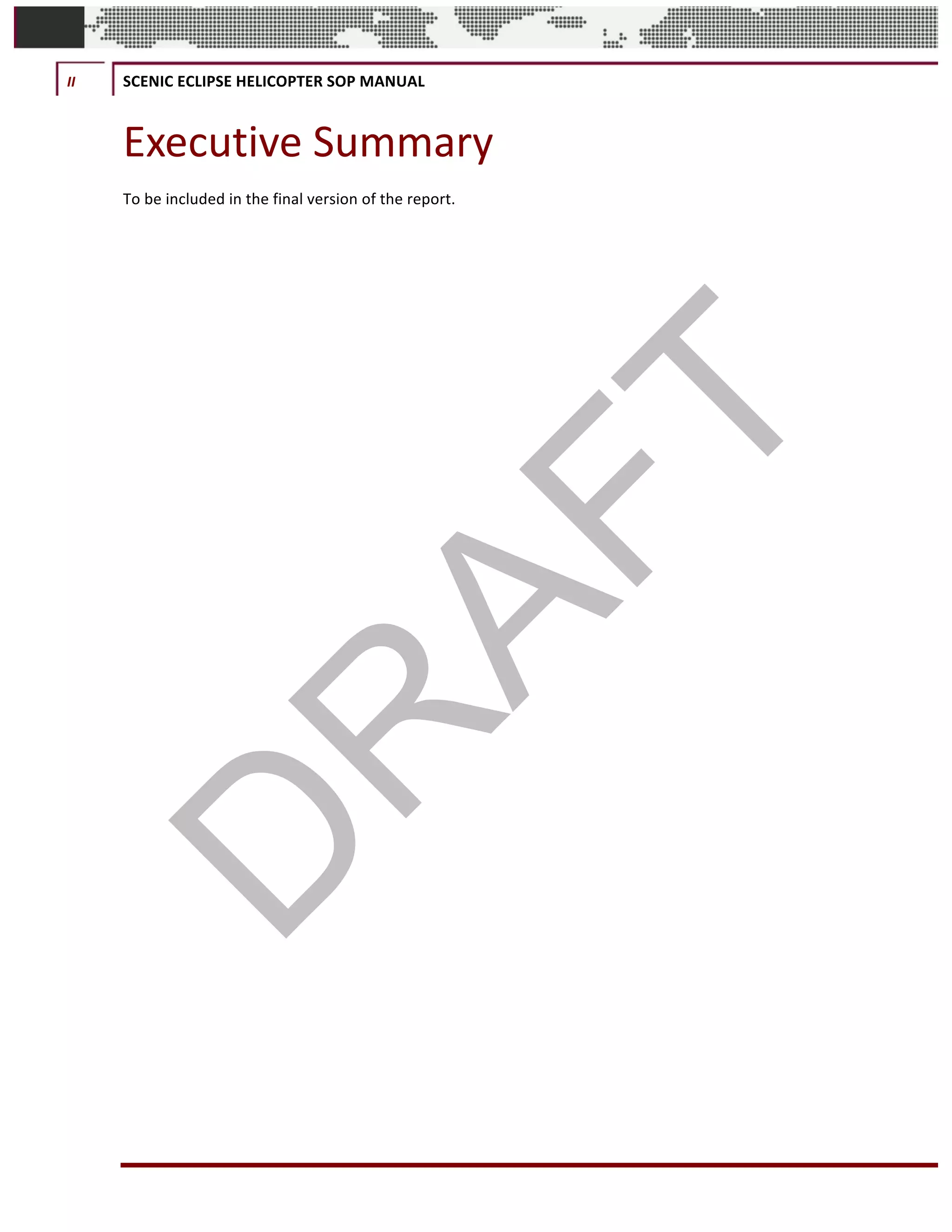

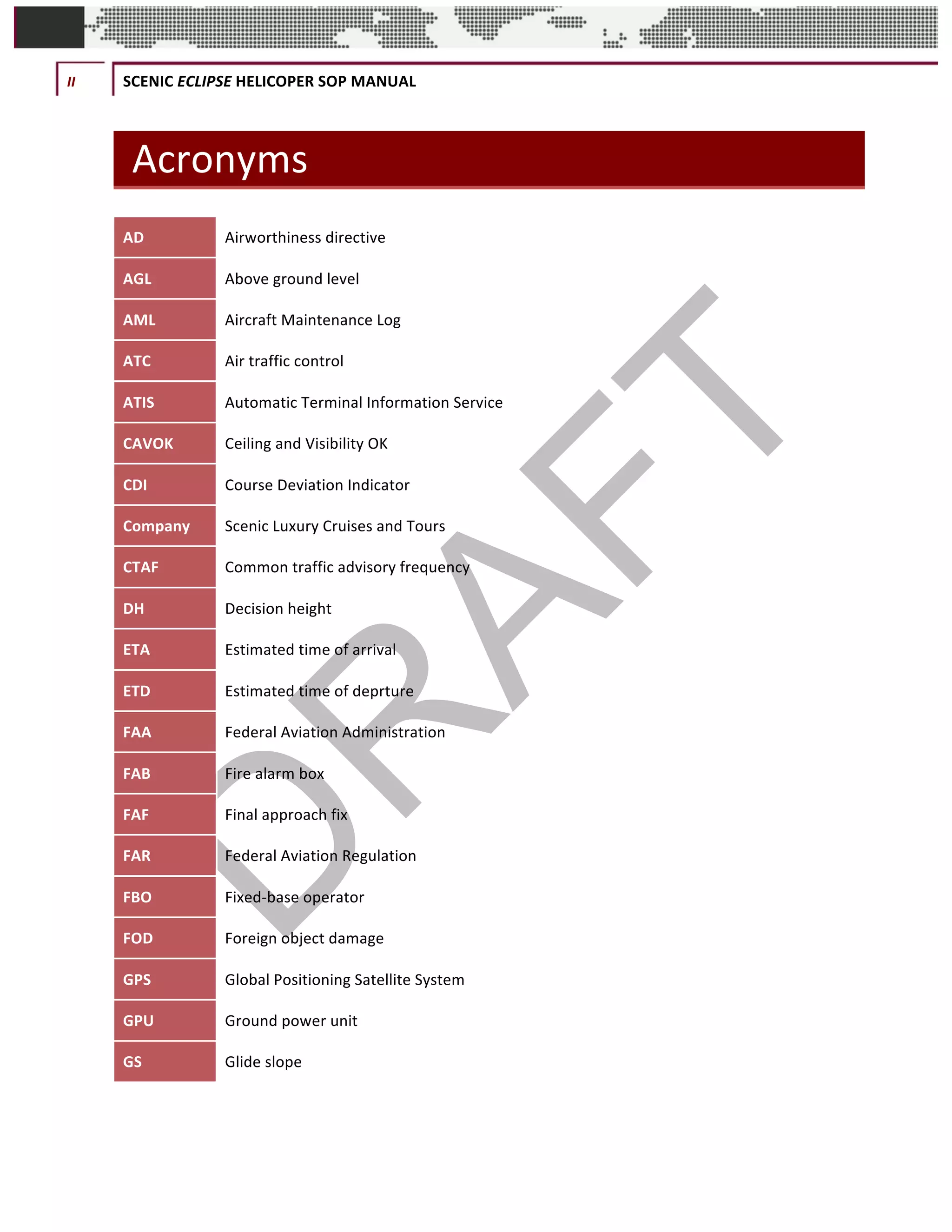
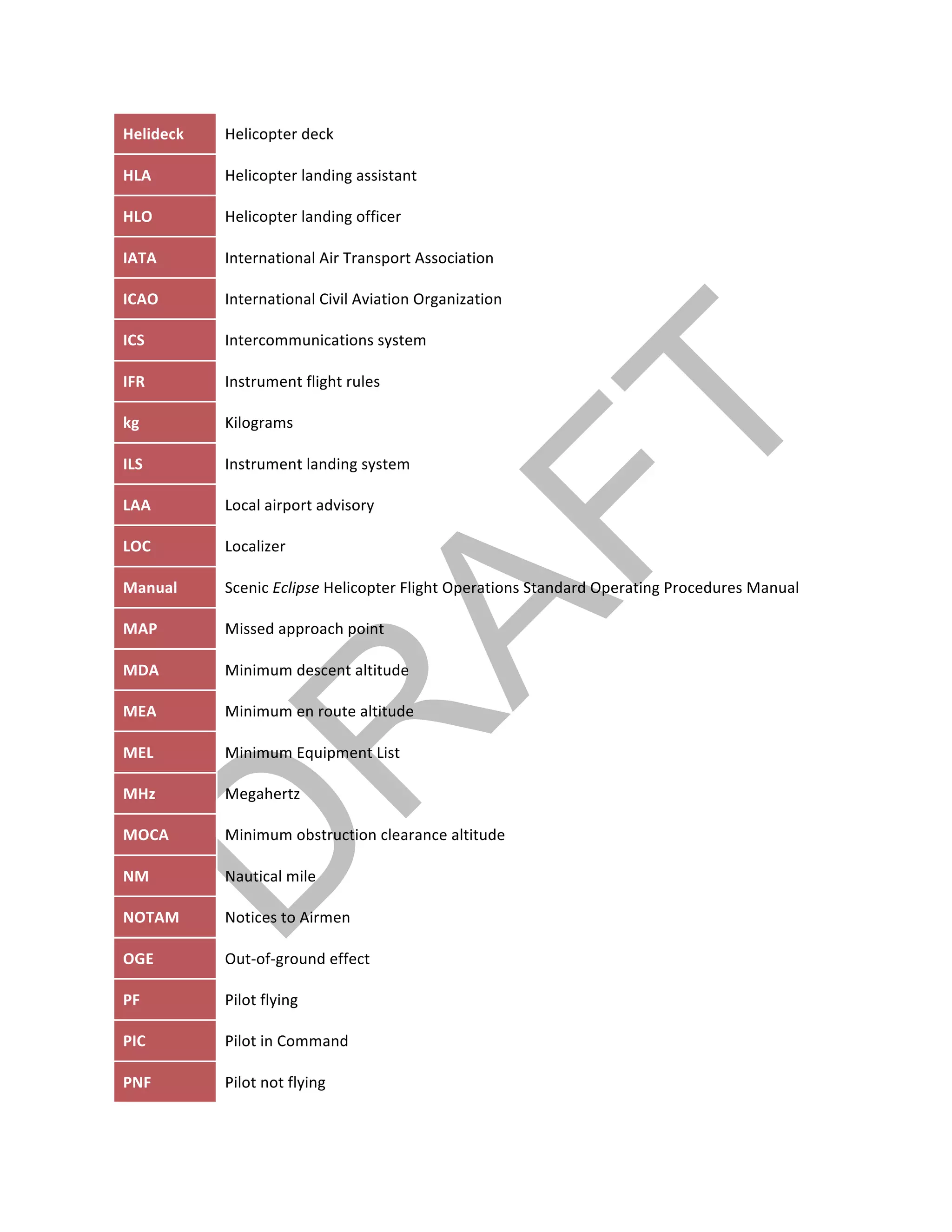
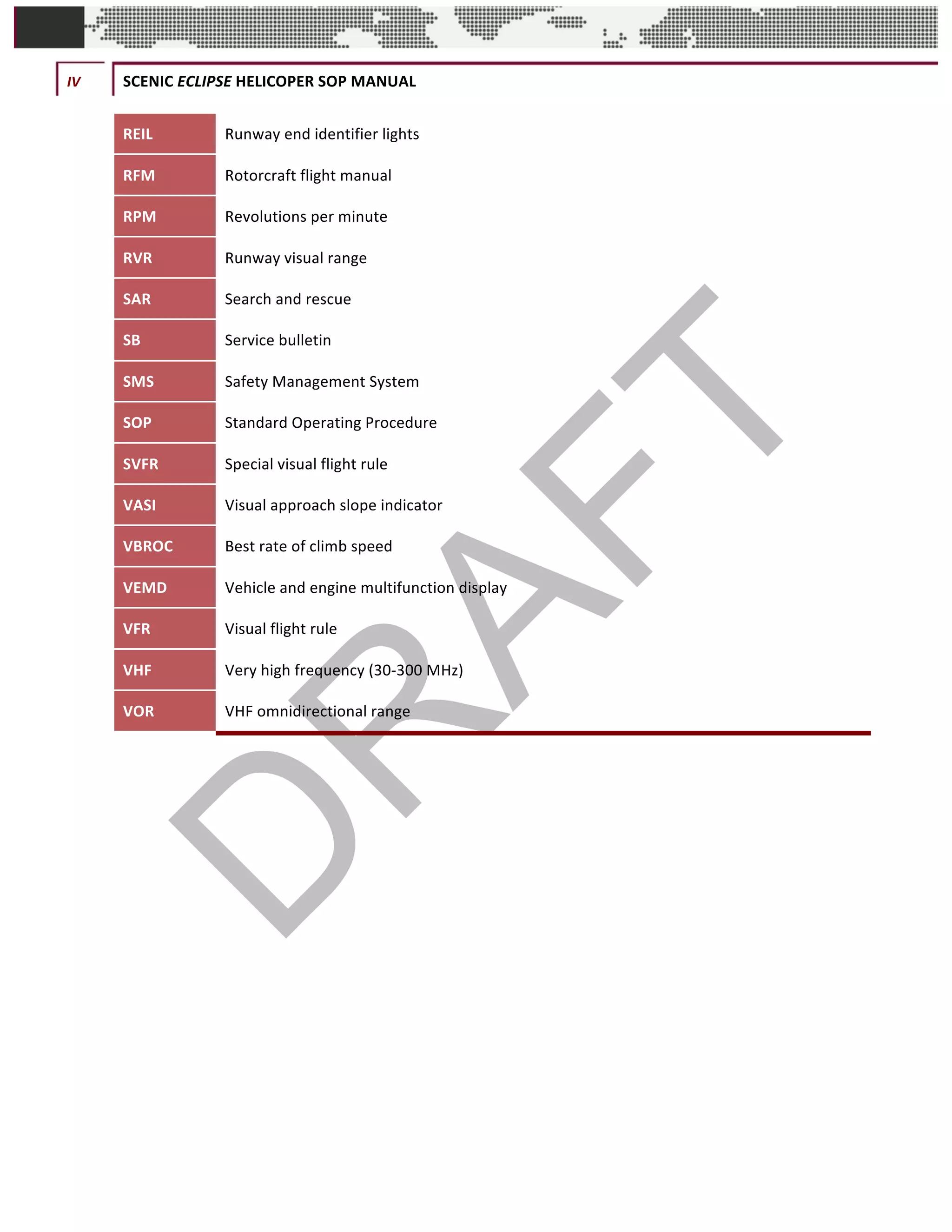
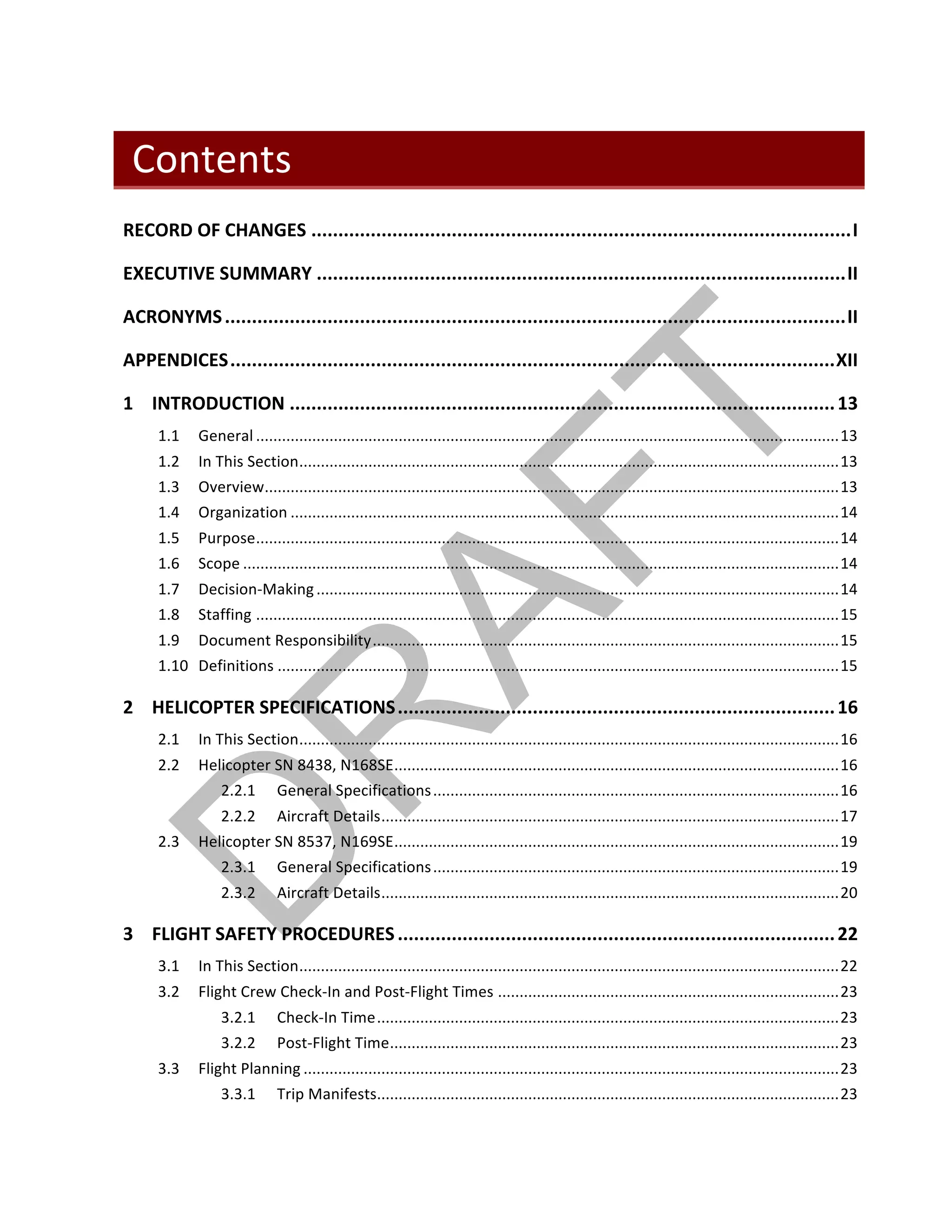
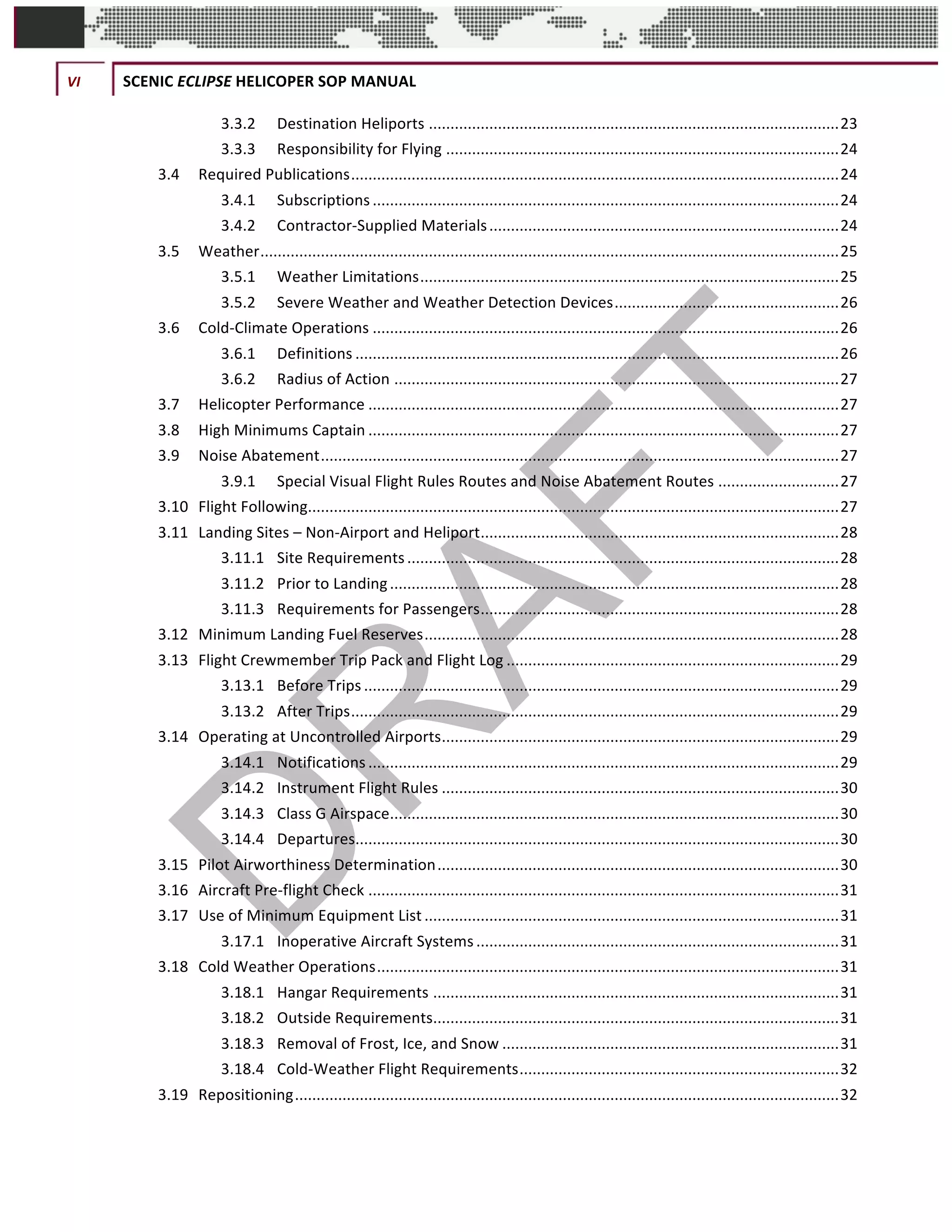
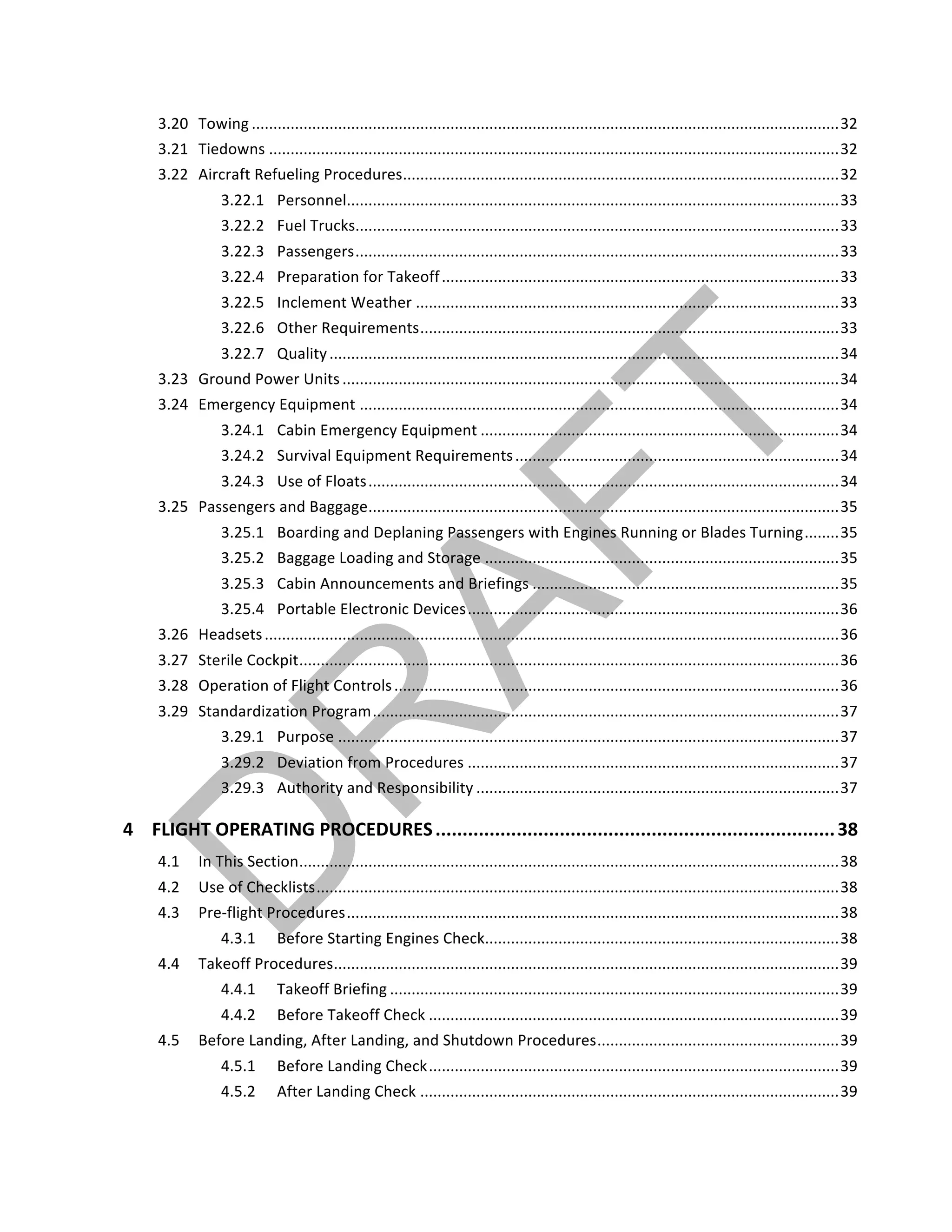

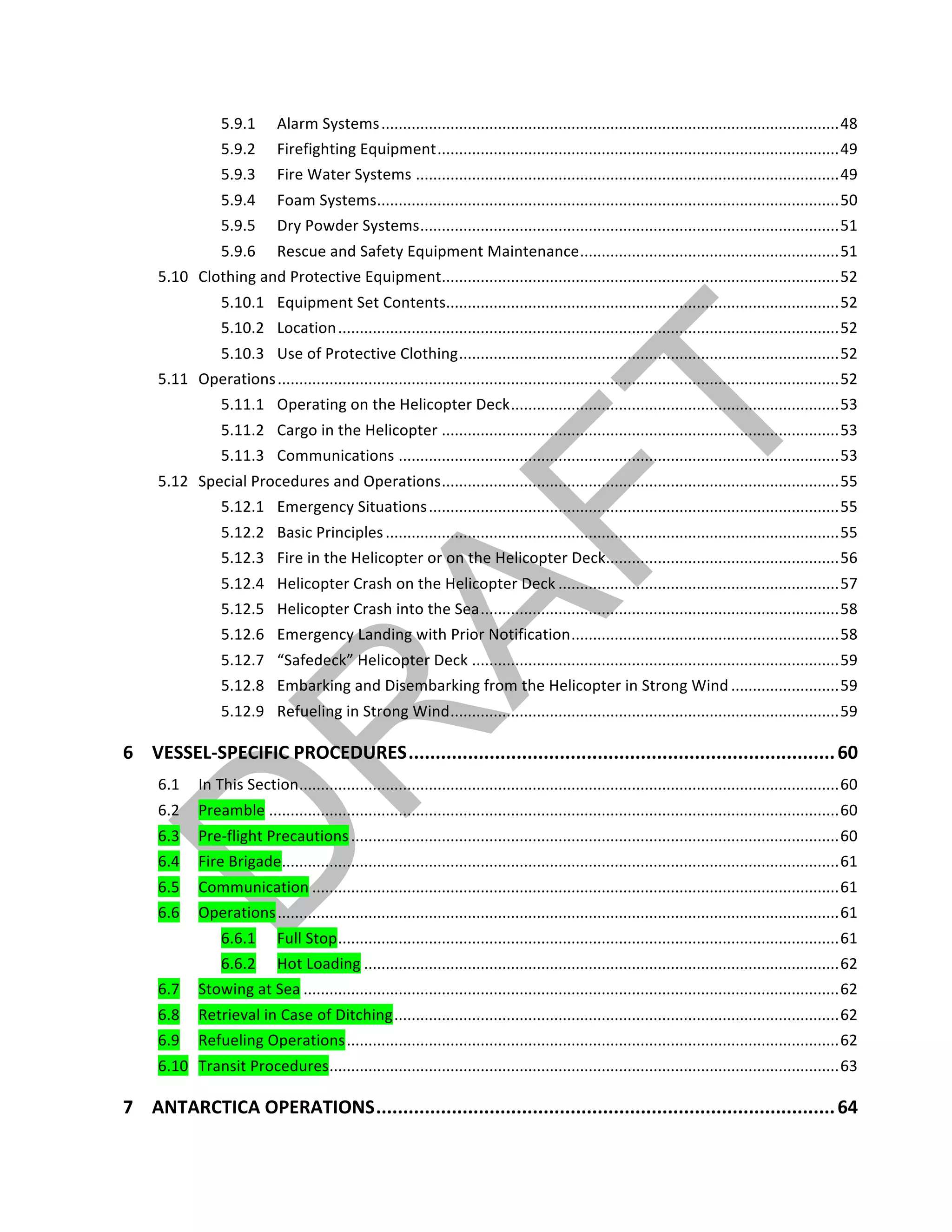
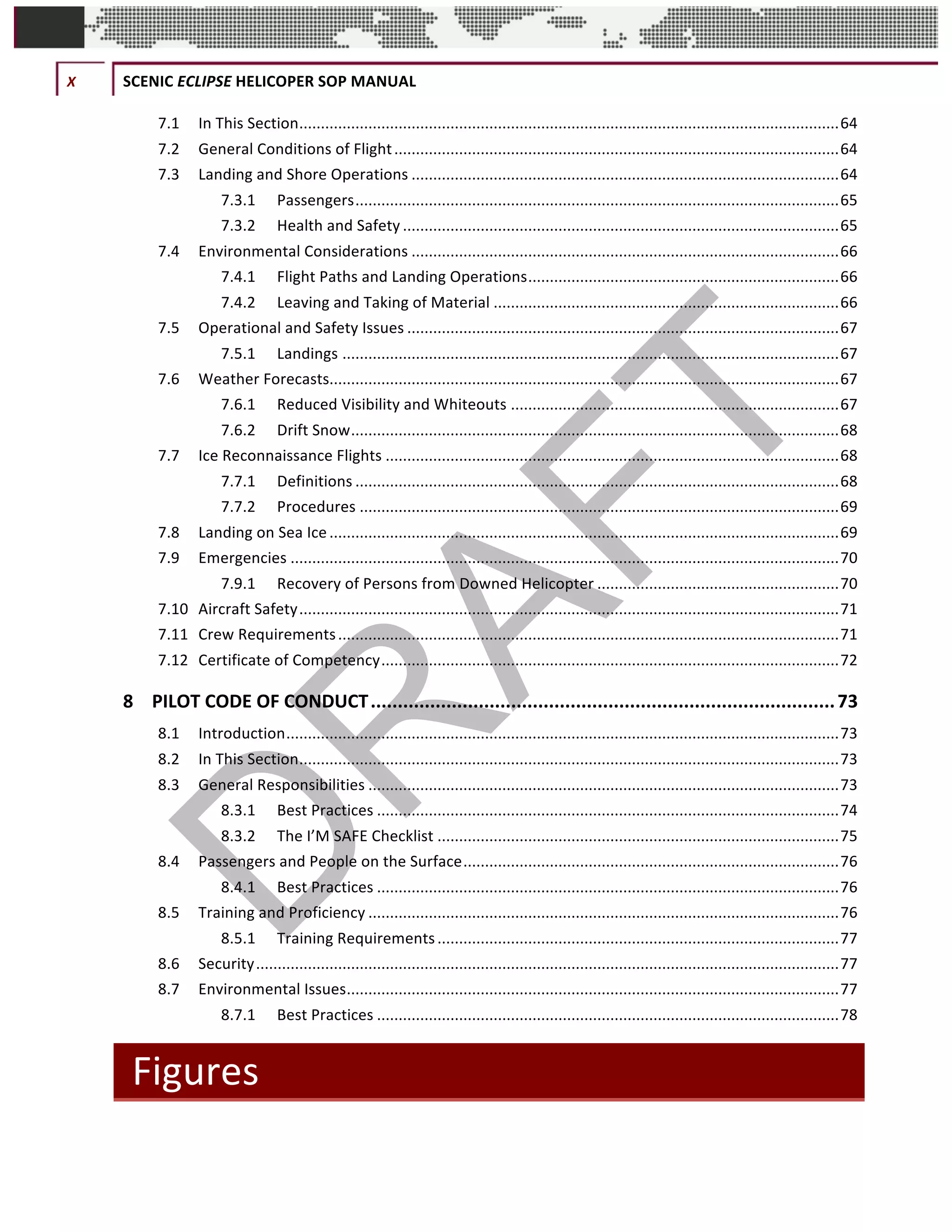

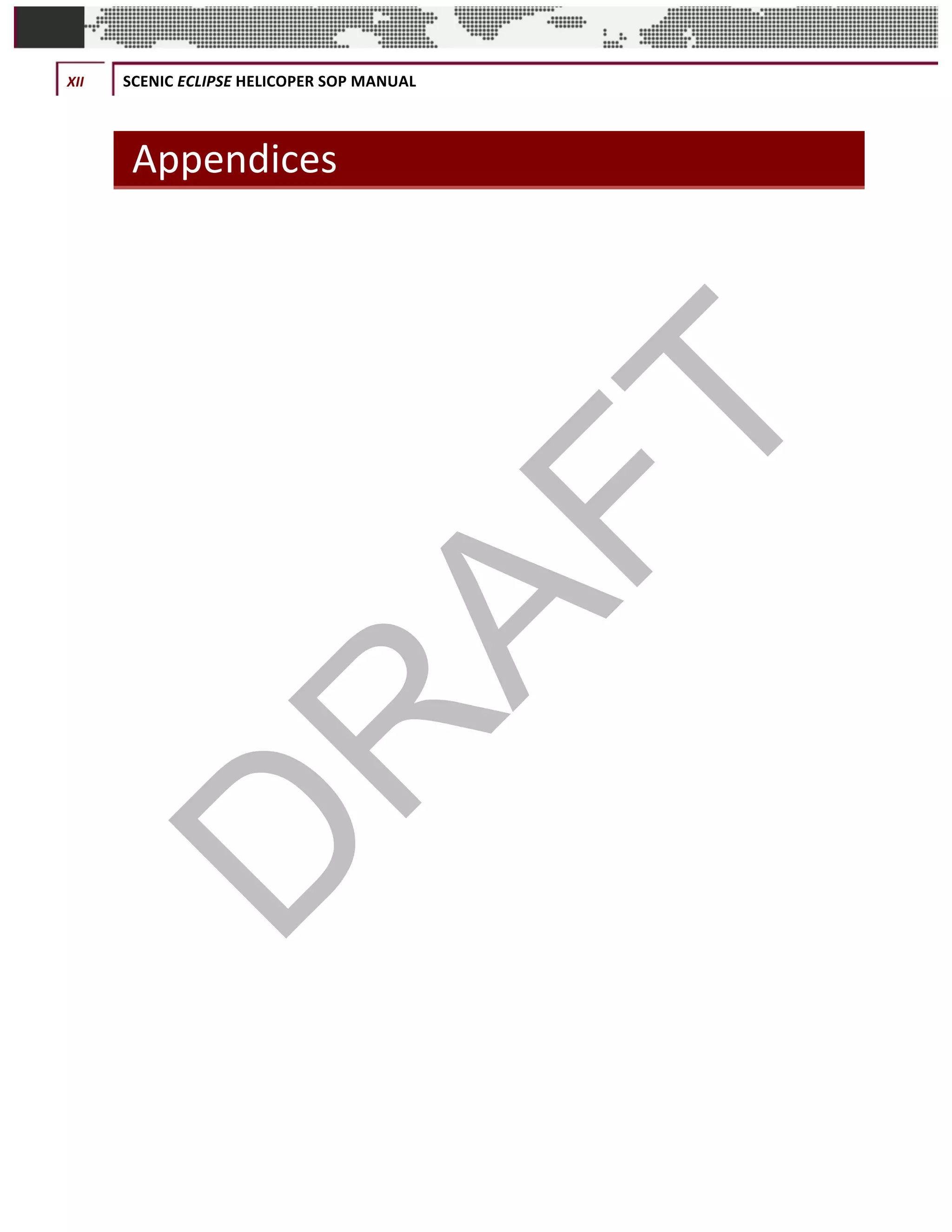


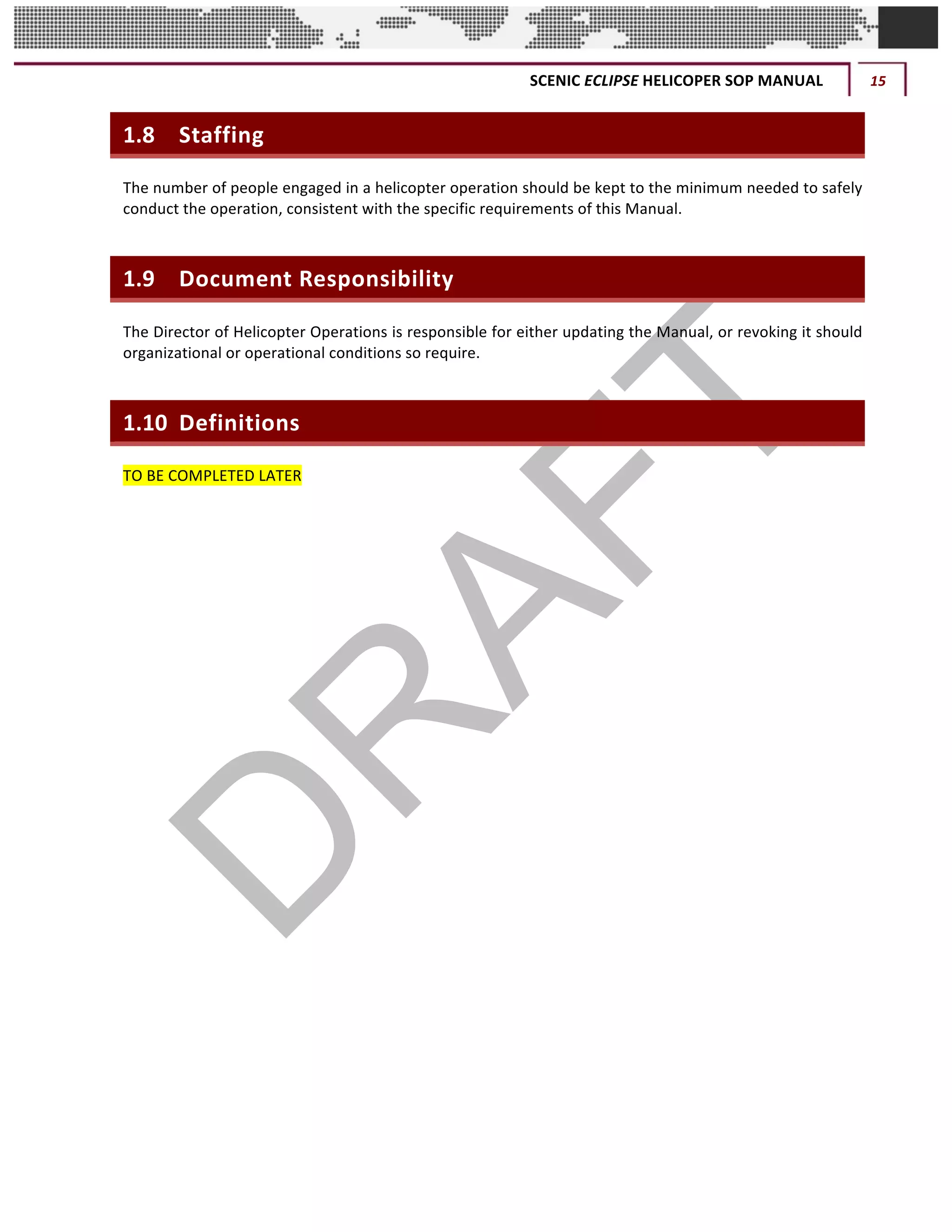
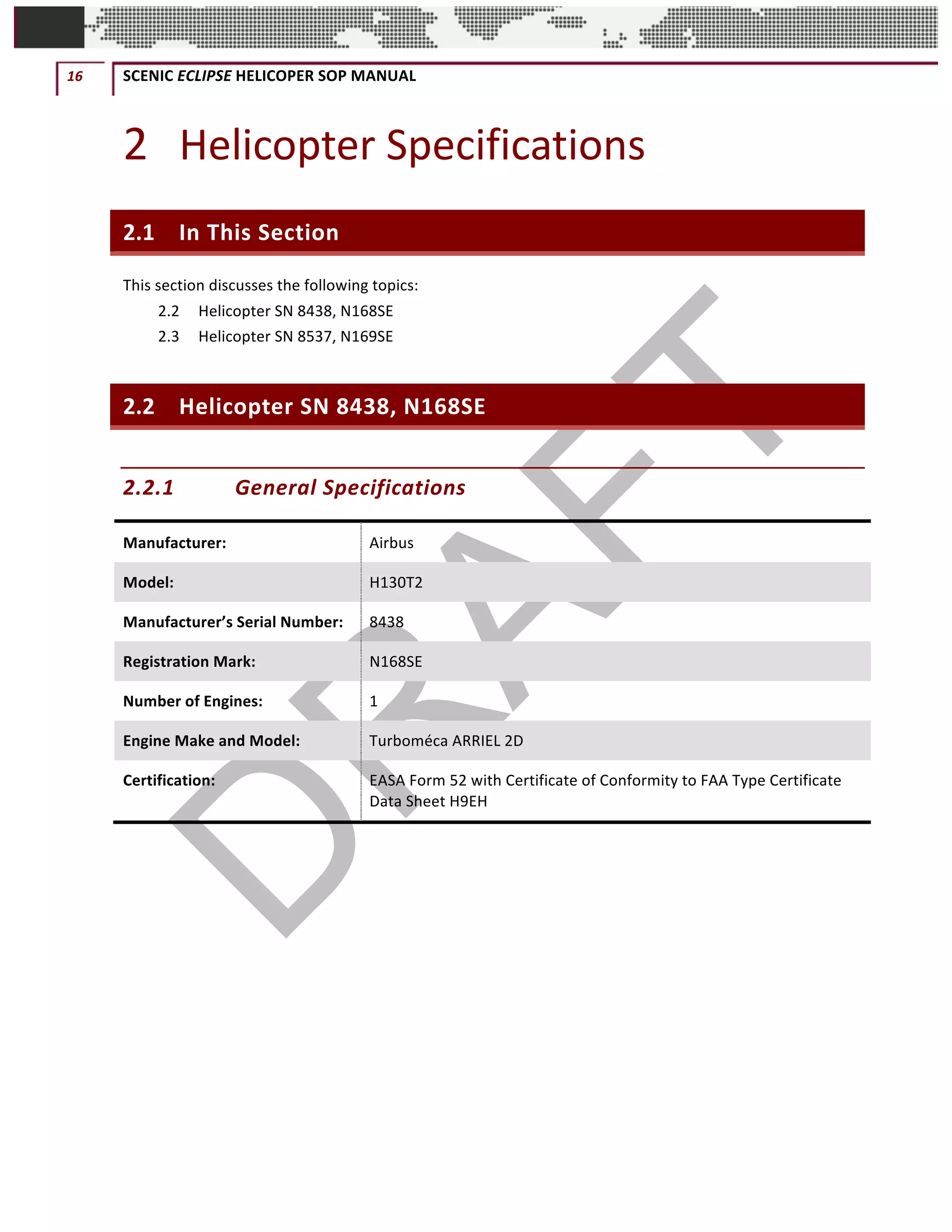
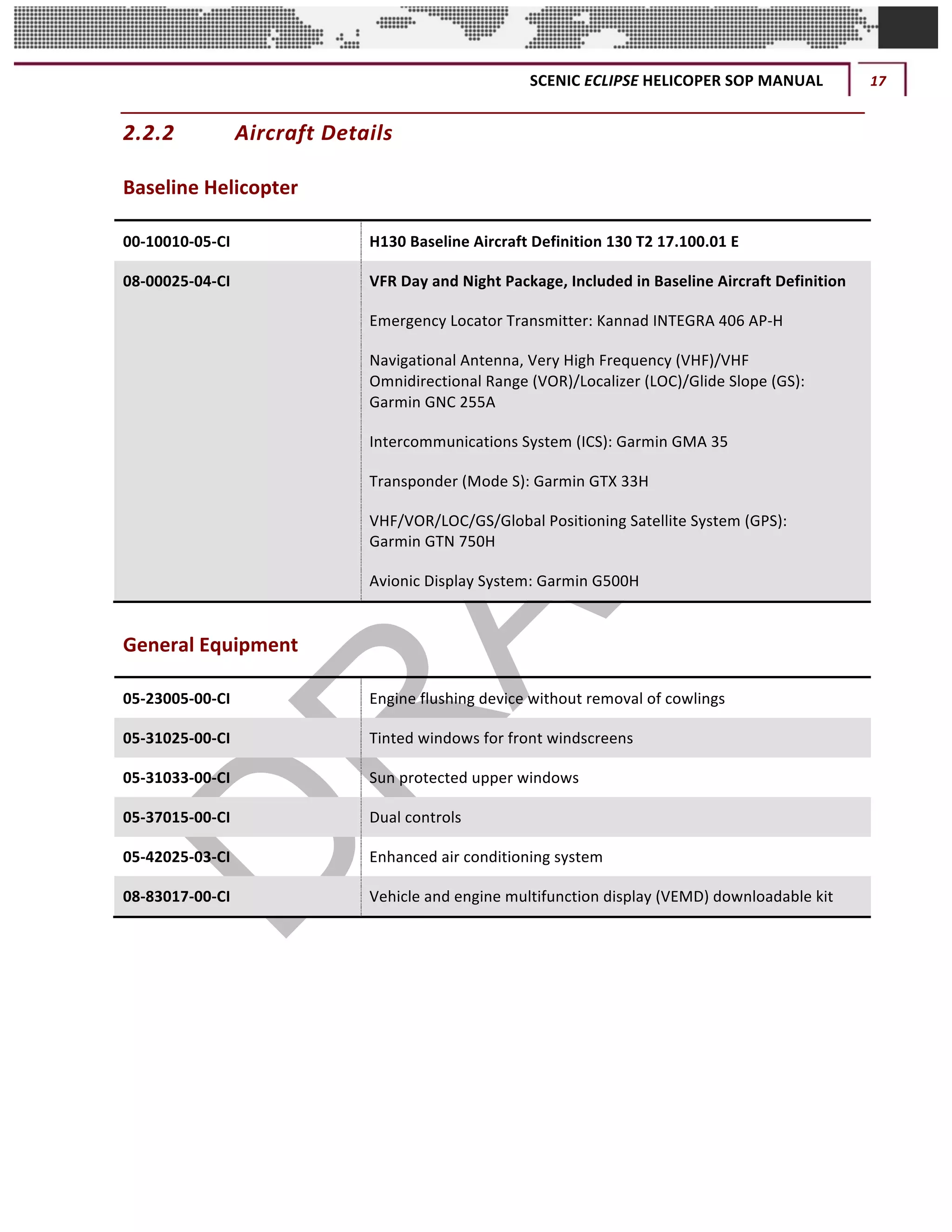
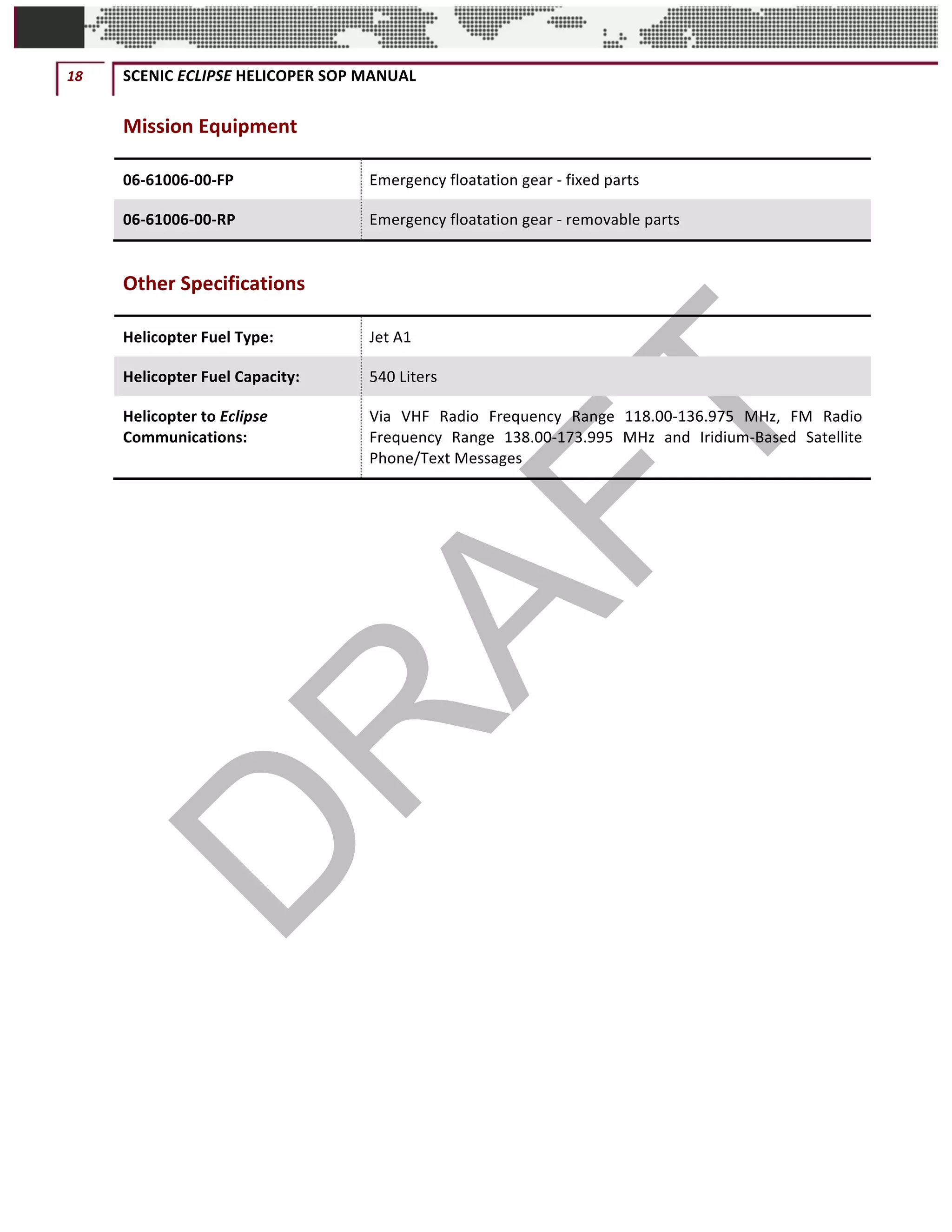


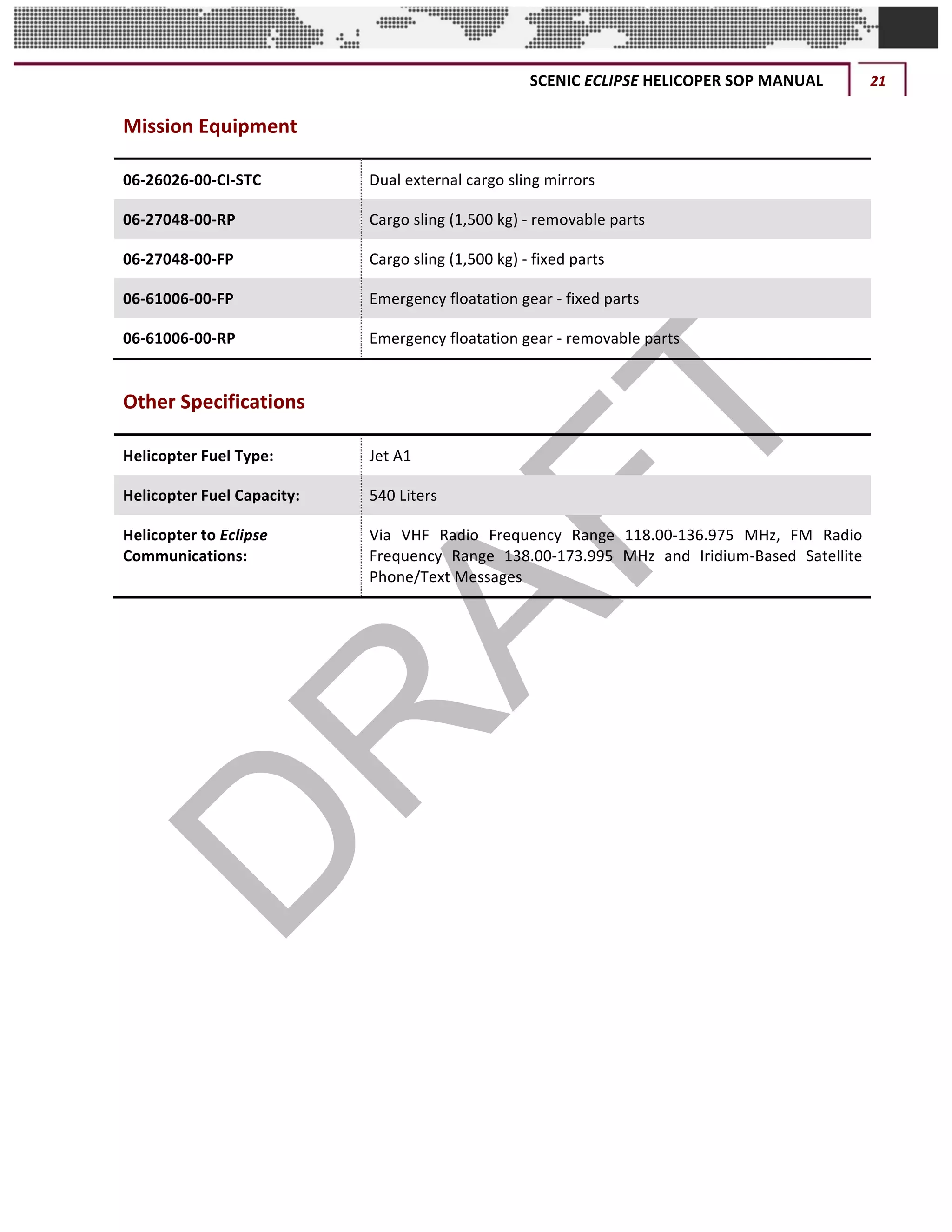
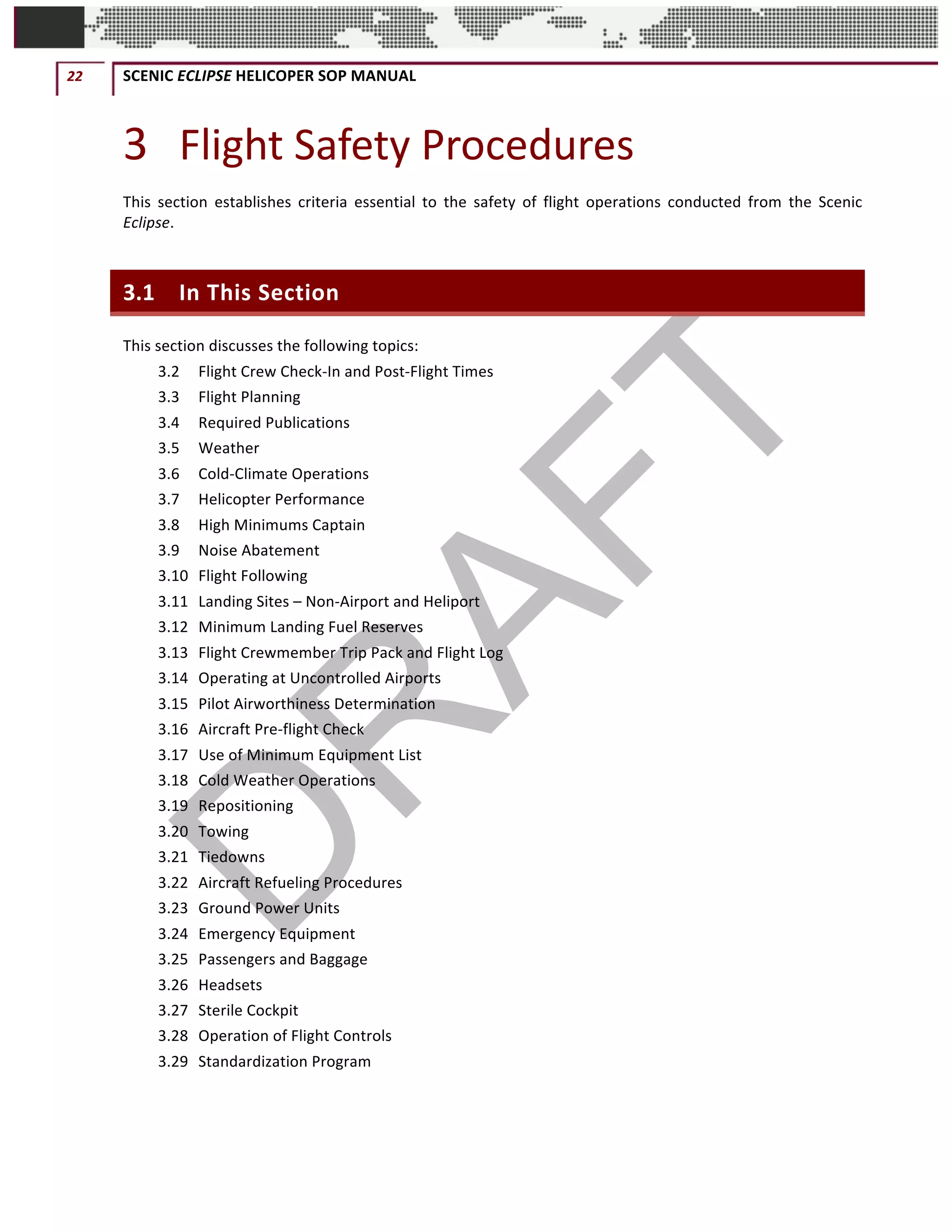

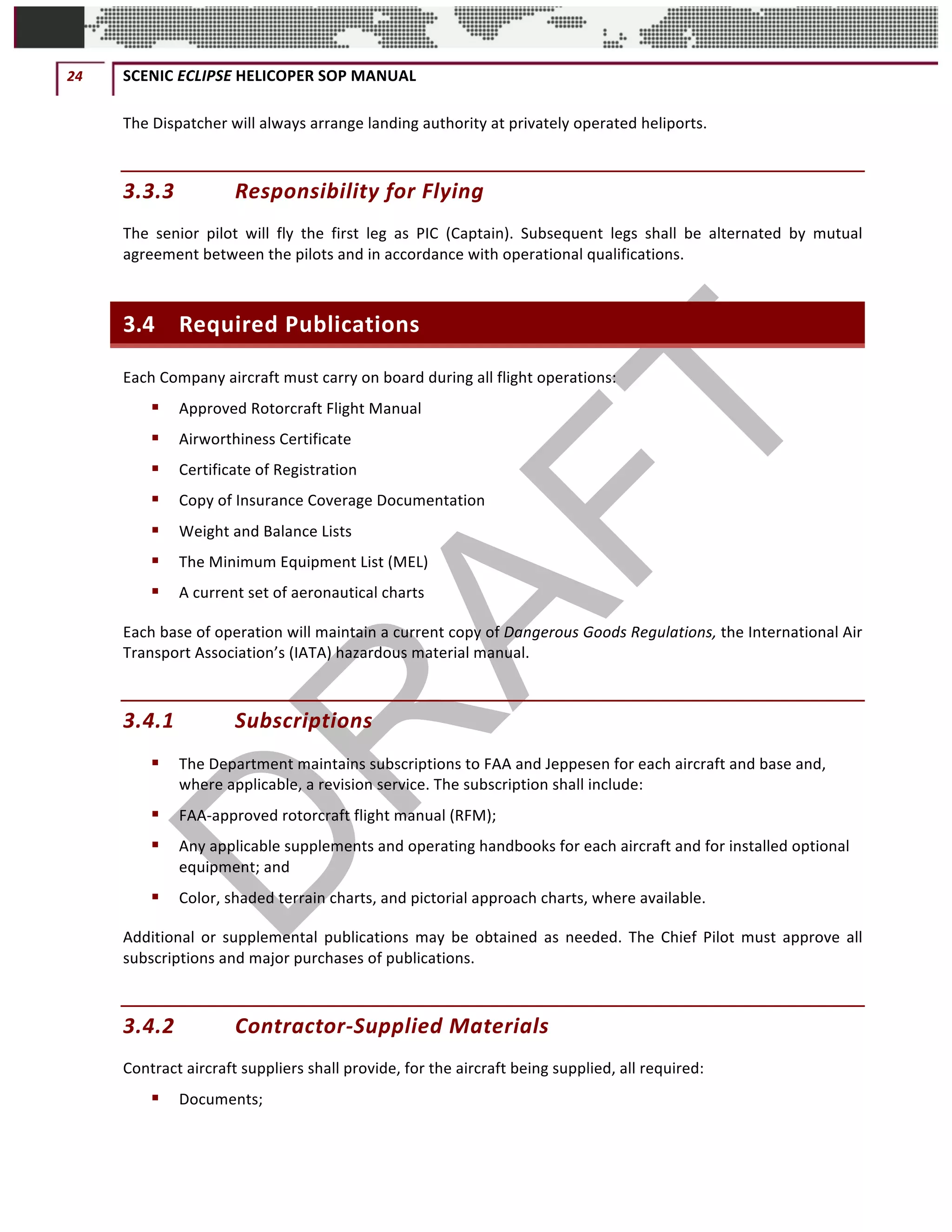
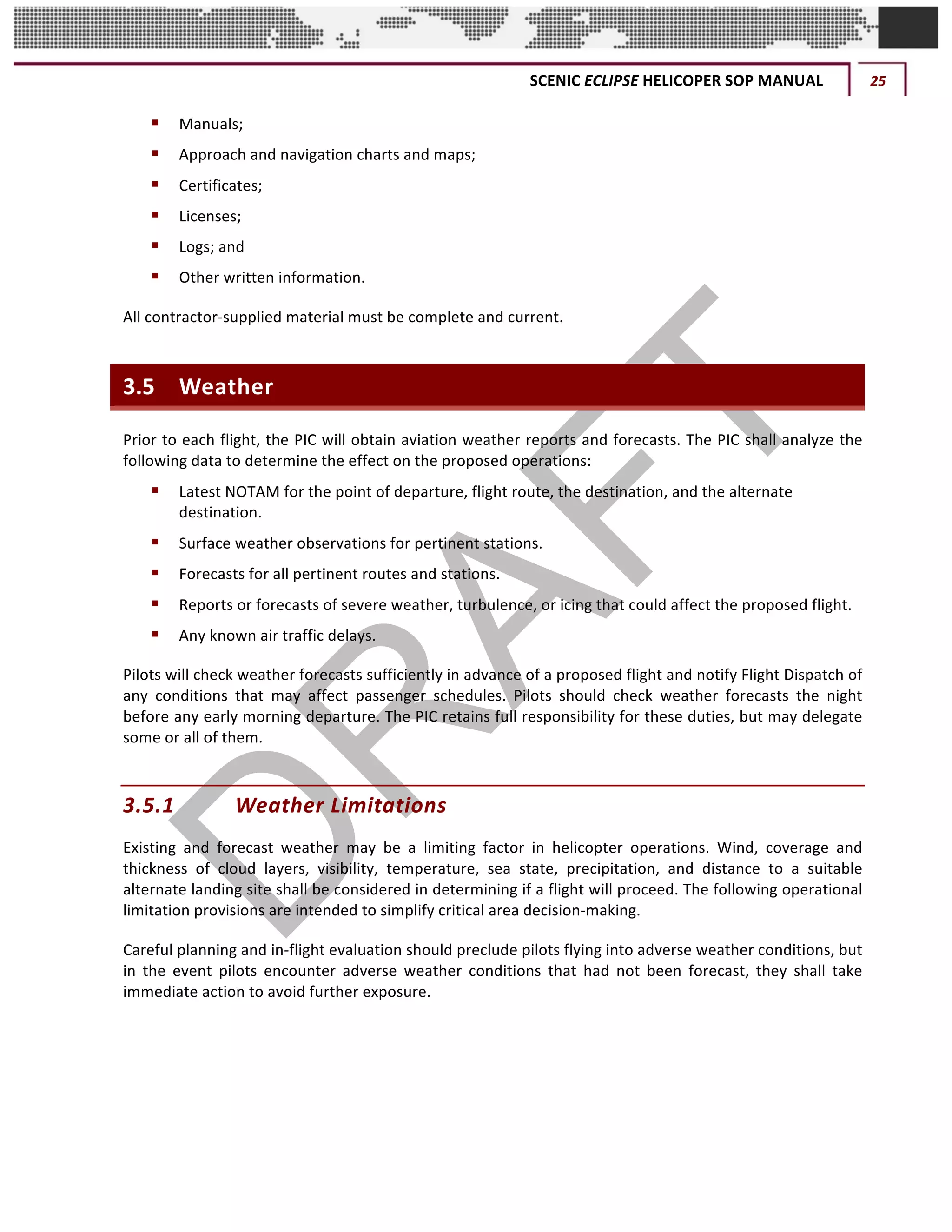
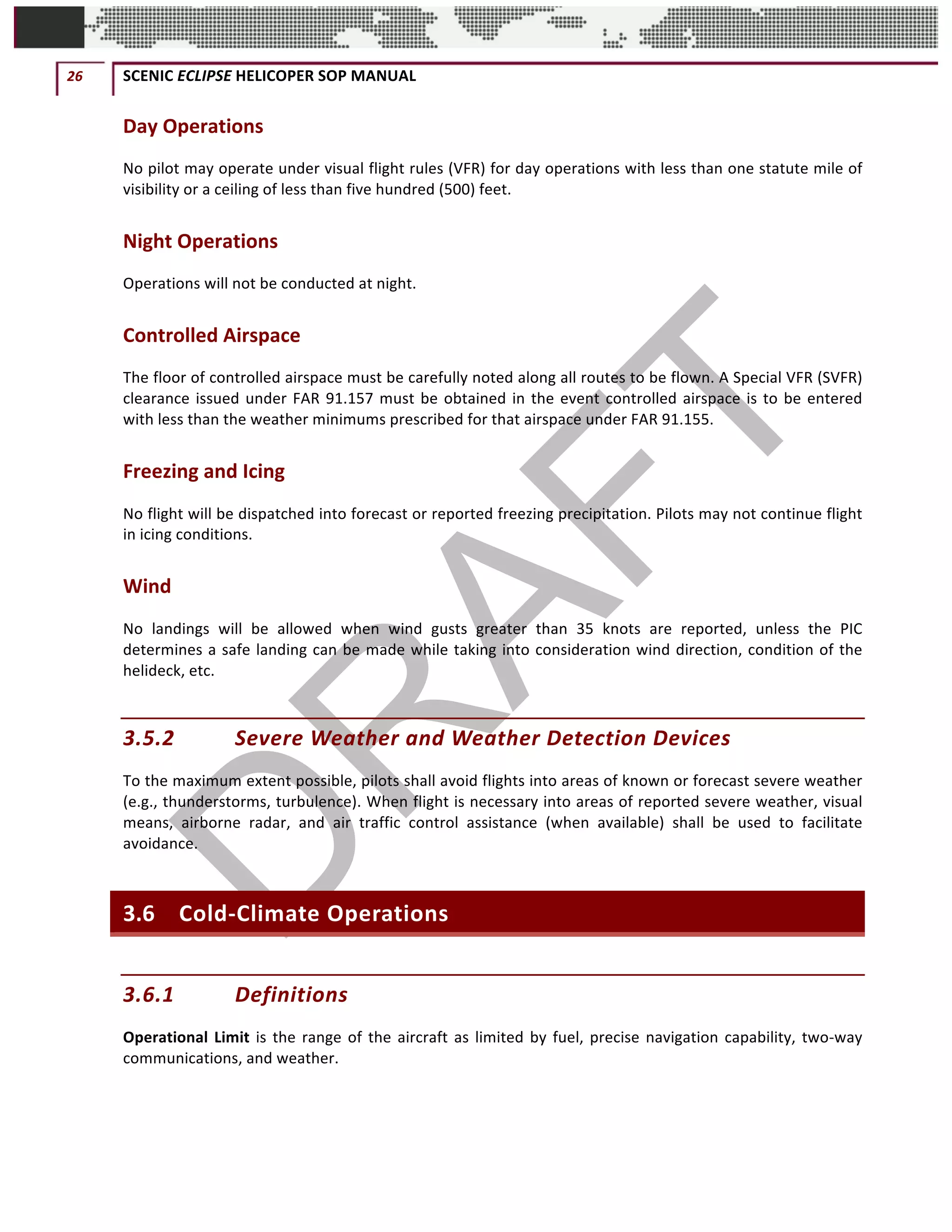
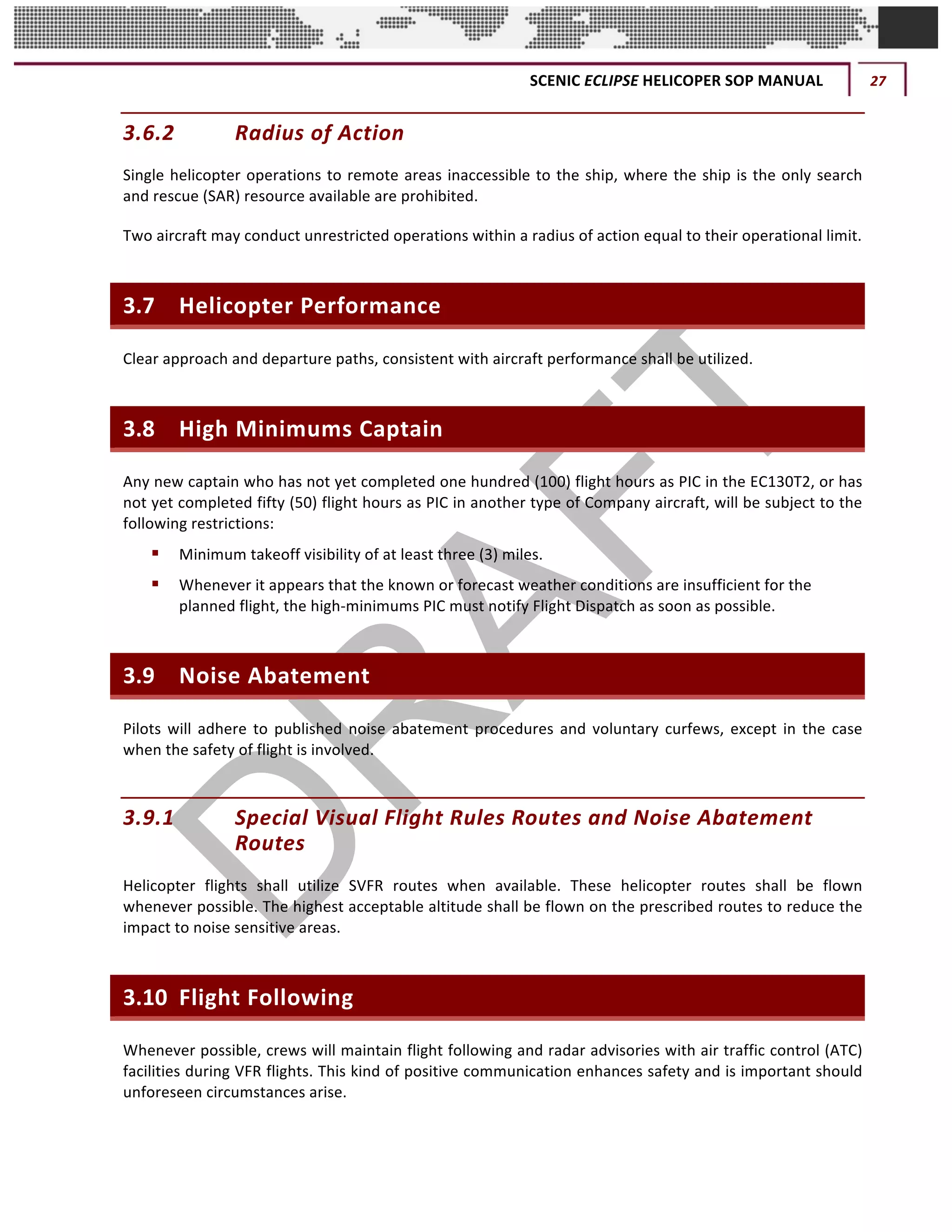
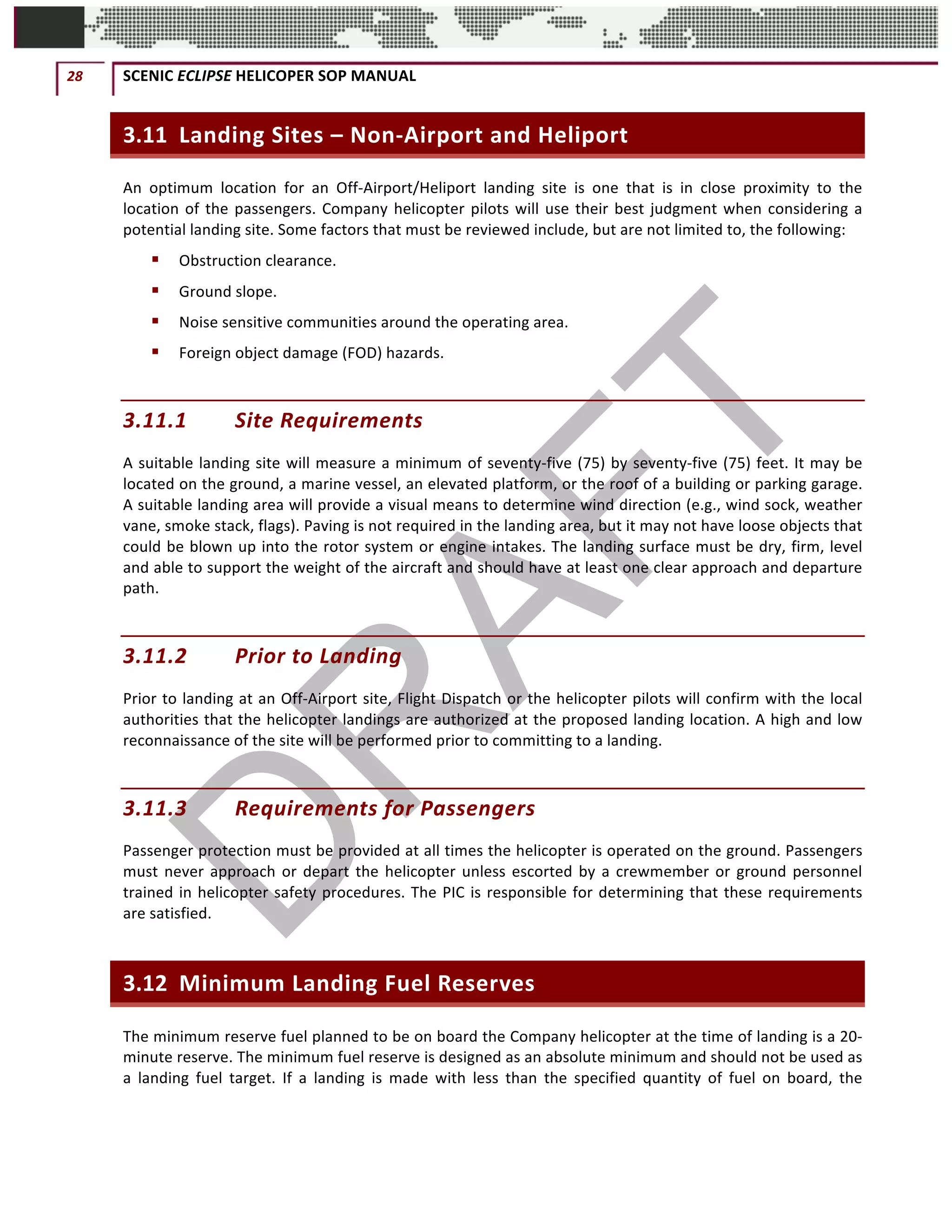
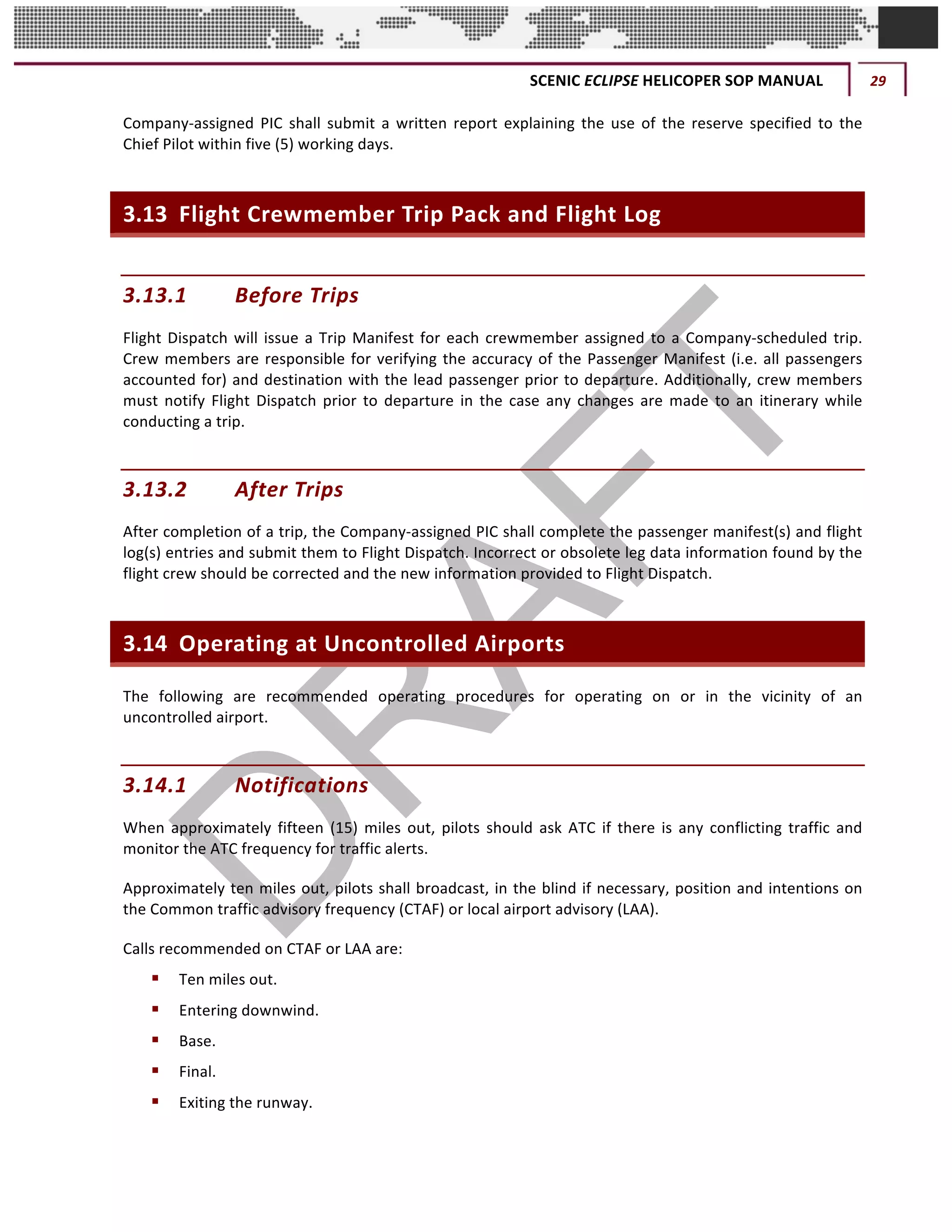
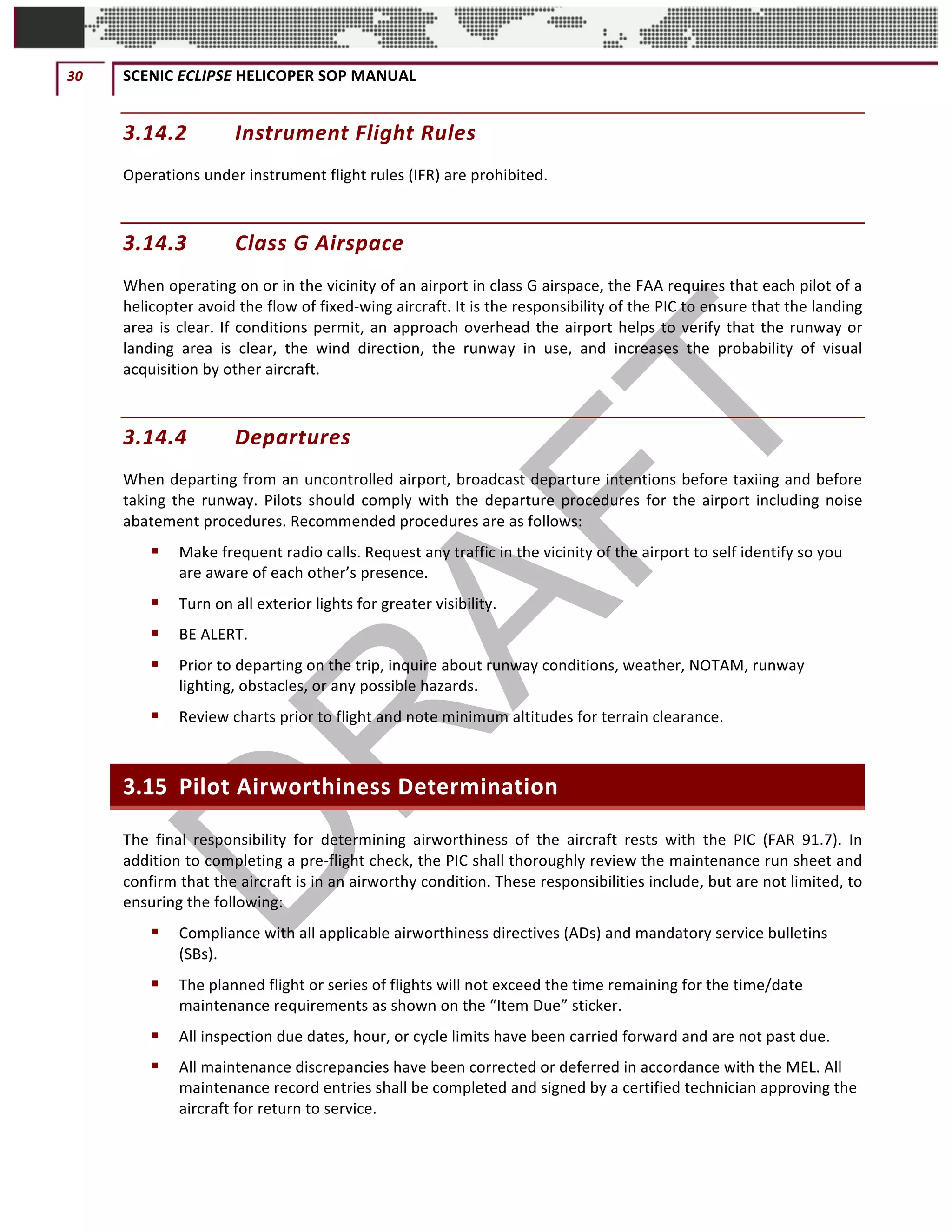

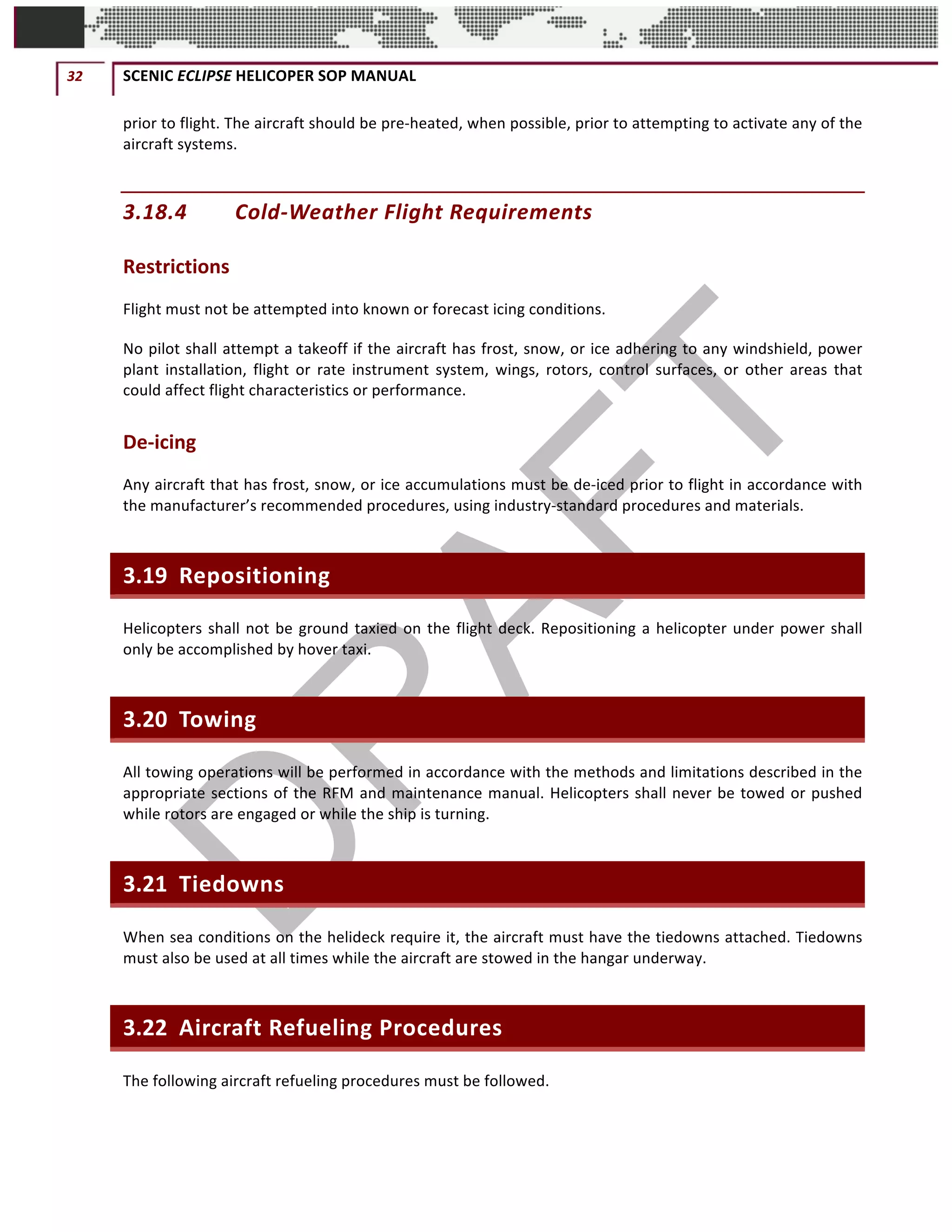
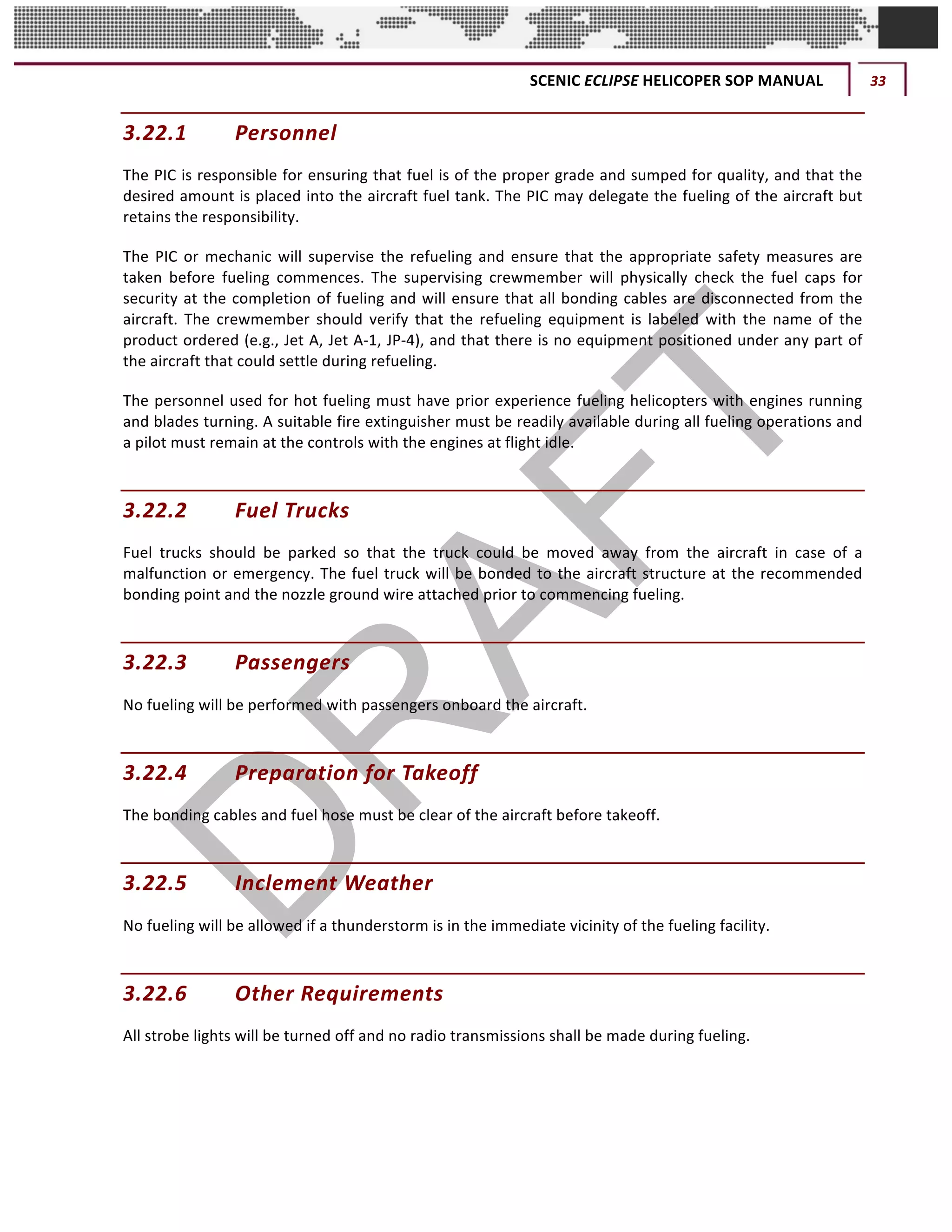
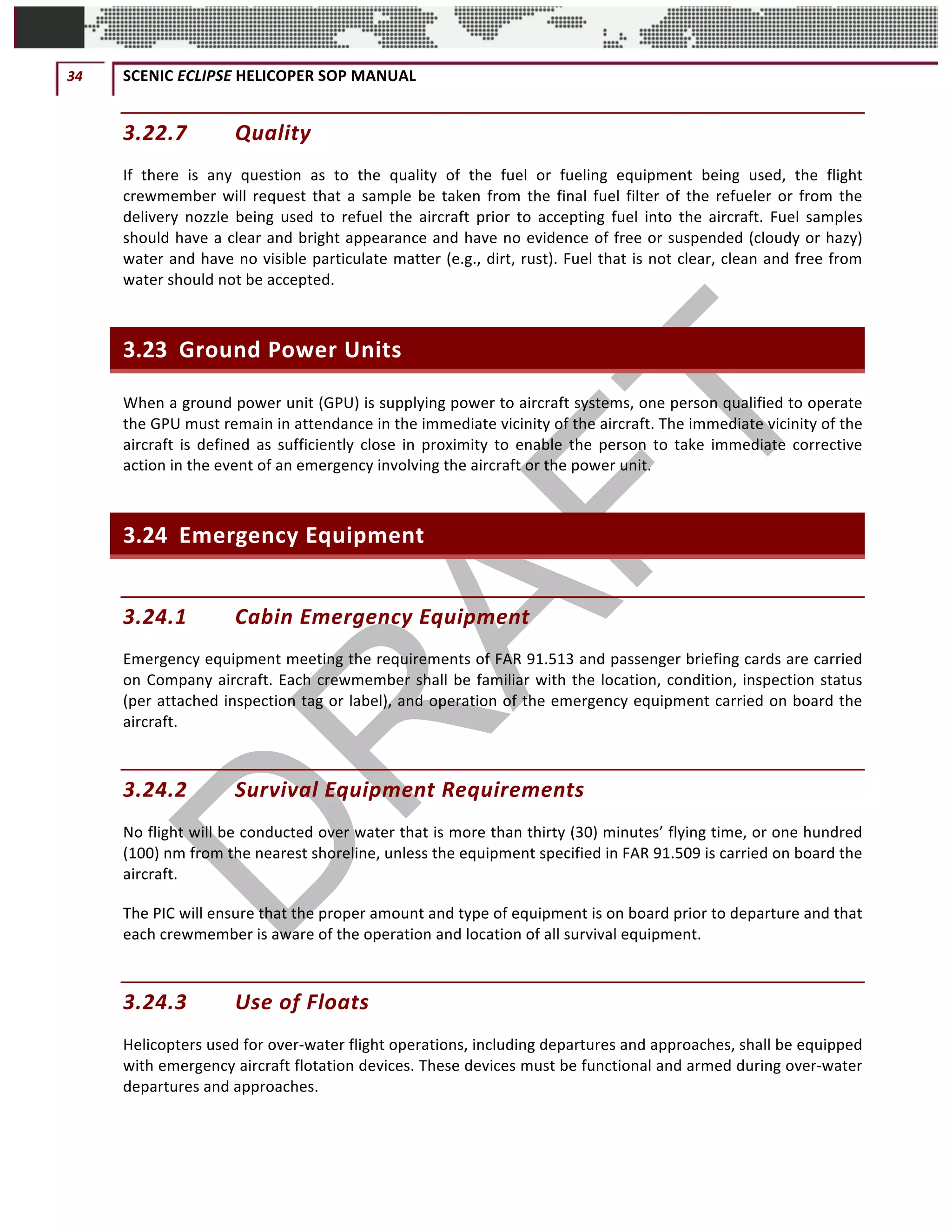
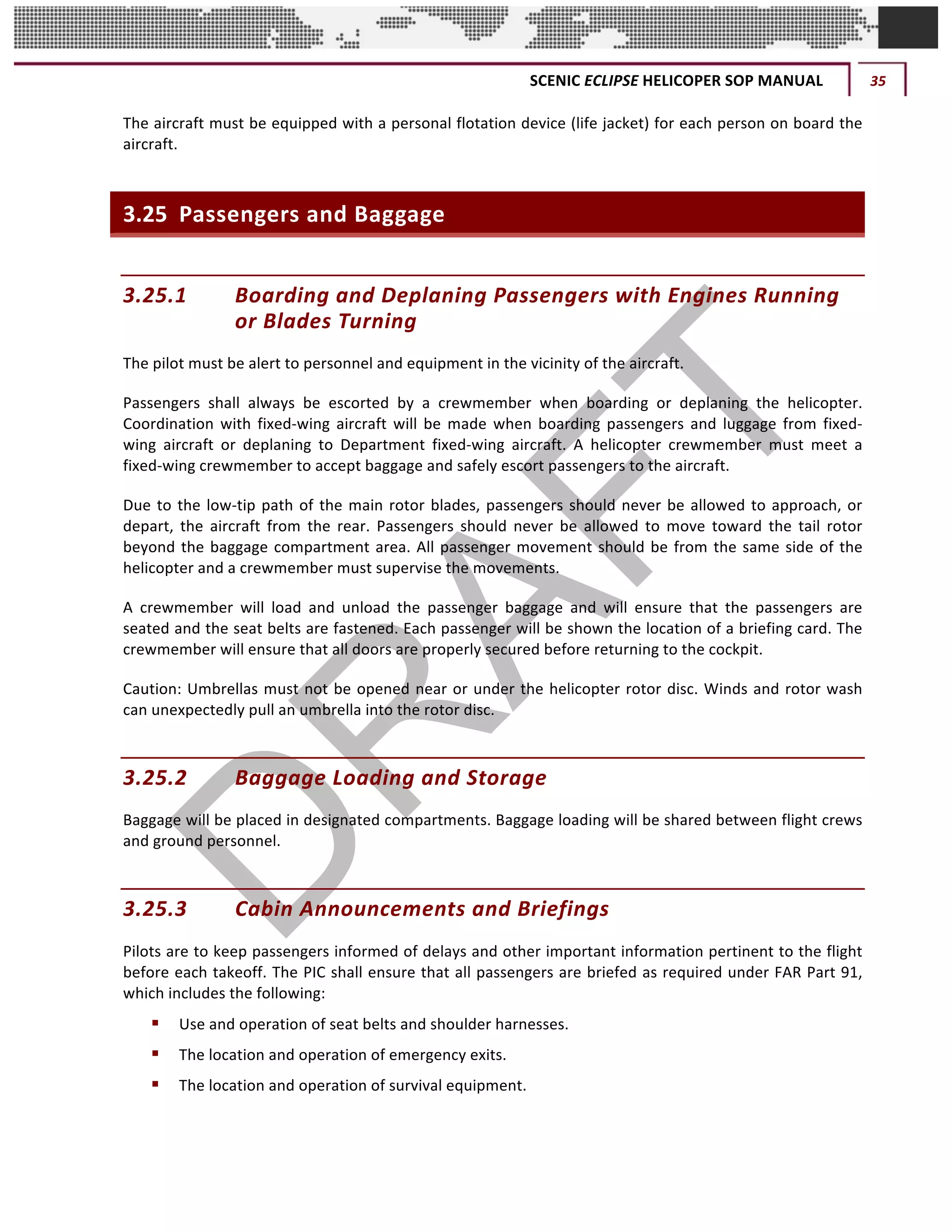
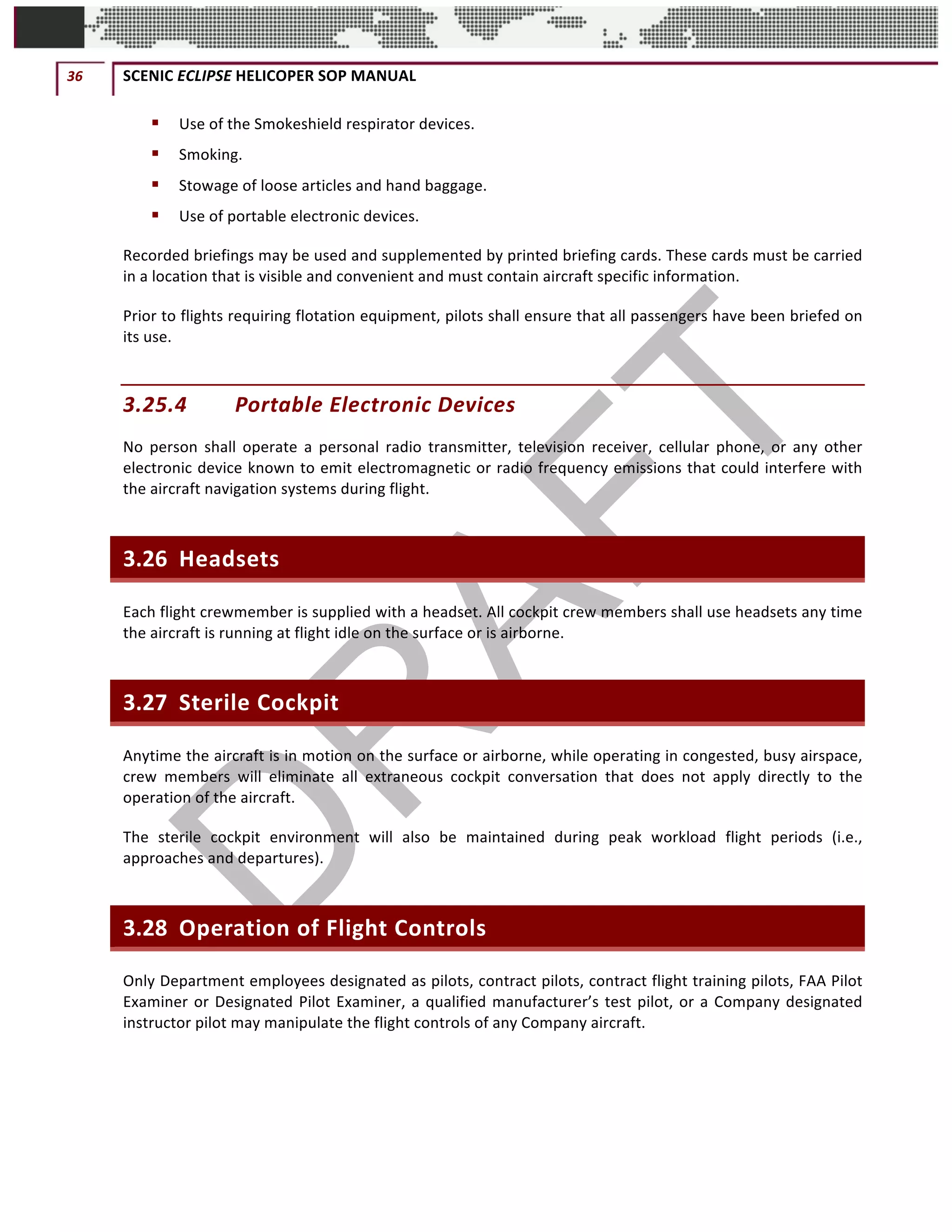
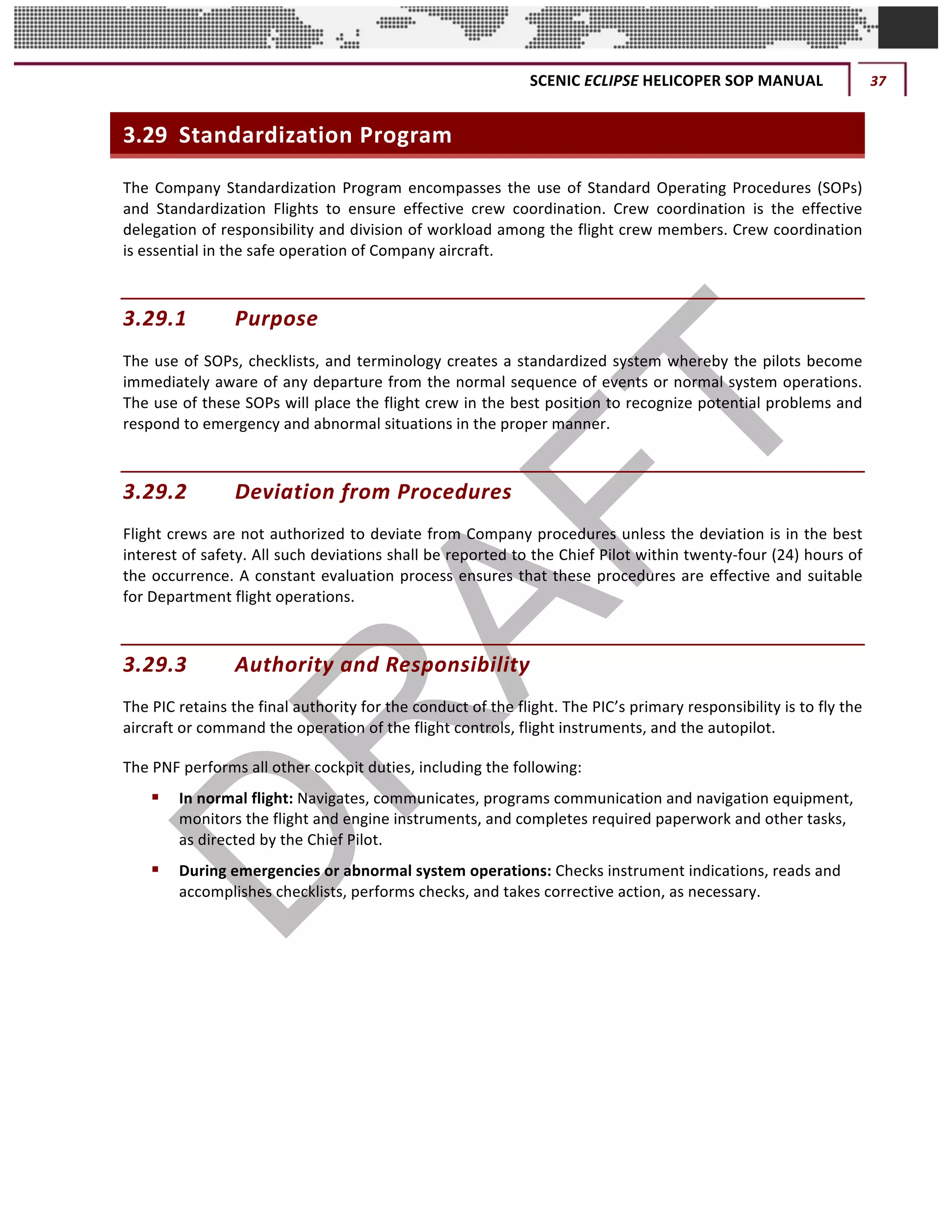
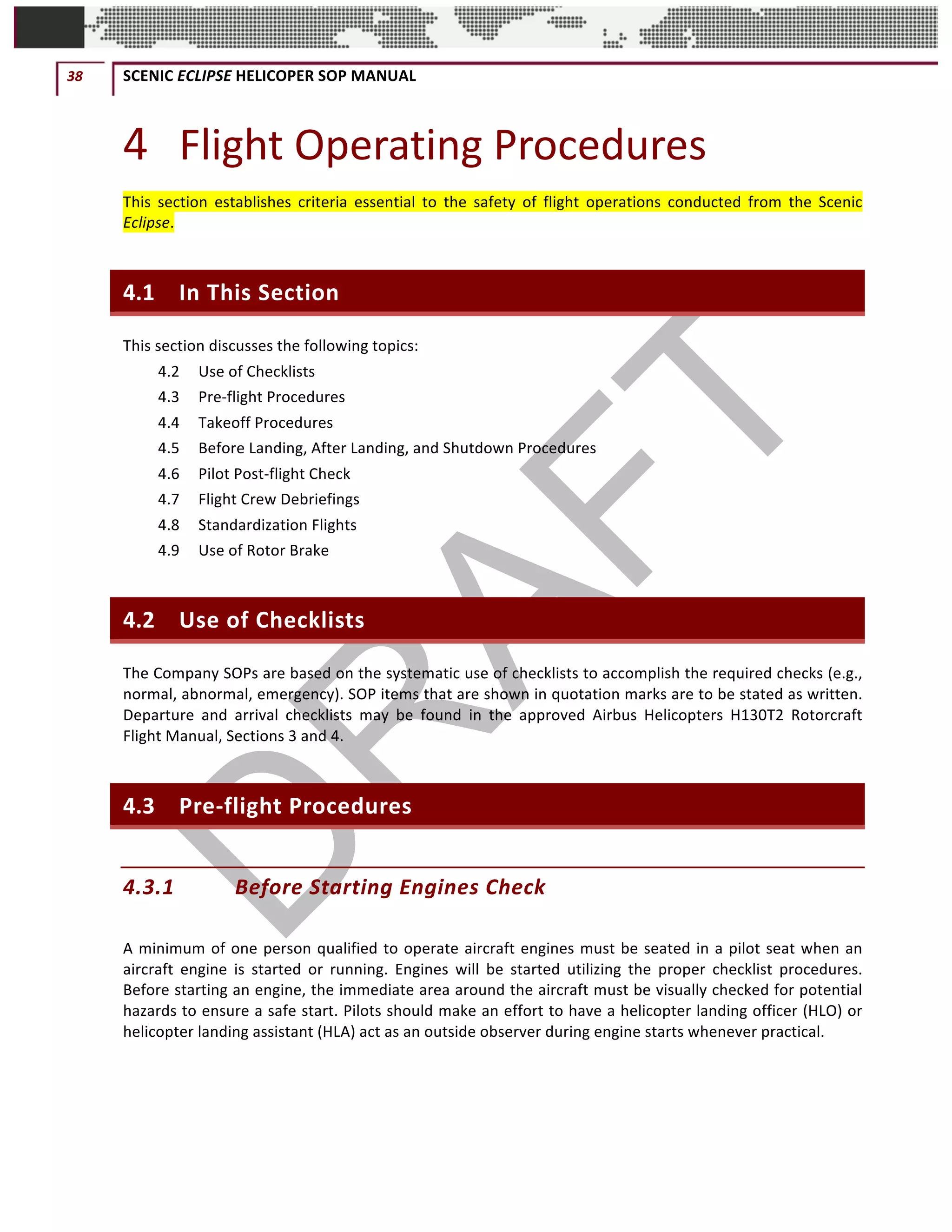

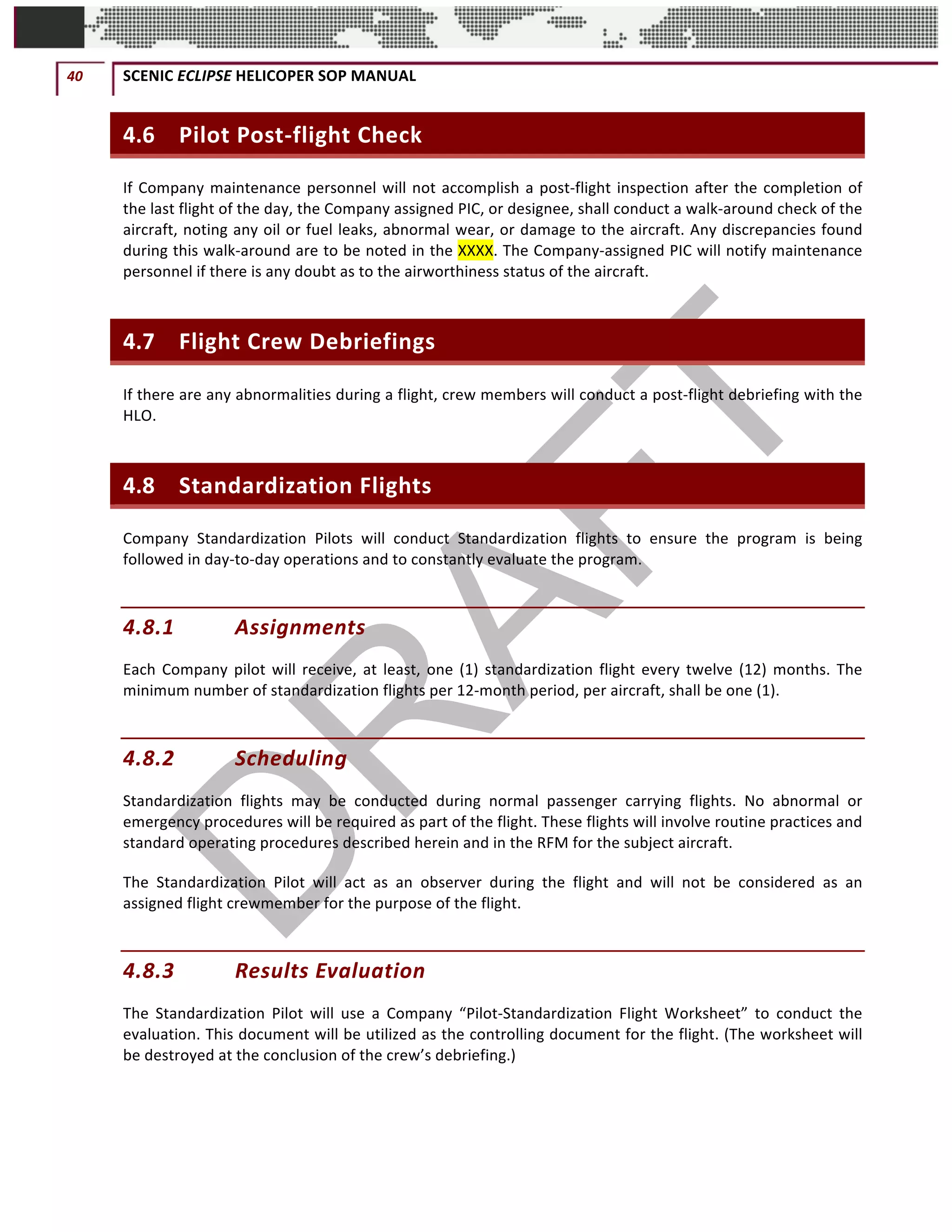
![SCENIC ECLIPSE HELICOPER SOP MANUAL 41
© QC AVIATION
4.8.4 Resolution of Deficiencies
Crew members found to be deficient will be advised of the specific deficiencies during post-flight
debriefing unless, in the opinion of the Standardization Pilot, the deficiency directly affects the
operational safety of the flight. If this is deemed to be the case, the Standardization Pilot will advise the
flight crew of the deficiency immediately upon discovery.
In the unlikely case that the pilot(s) are unwilling or unable to perform their duties in accordance with the
FAR, the RFM, the Department SOPs, or this Manual, they will be advised of this. If the situation cannot be
resolved at the local level to the Standardization Pilot’s satisfaction, the flight will not depart, or if already
airborne, it will not proceed beyond the next point of landing.
In this event, the Standardization Pilot will contact the [Position Title] as soon as is practical to resolve the
situation. The [Position Title] will determine the proper course of action to be taken from that point.
Successful completion of a standardization flight will be recorded for each individual. These forms will be
forwarded to the [Position Title] for review, to be retained in each employee’s training file.
4.9 Use of Rotor Brake
The rotor brake will be used in accordance with the limitations set forth in the RFM. It is recommended
that pilots apply the rotor brake at, or less than, 100 revolutions per minute (RPM).](https://image.slidesharecdn.com/qcaviationsceniceclipsestandardoperatingproceduresmanualmasterdraftcopy8augcopy-200301115248/75/Standard-Operating-Procedures-Manual-45-2048.jpg)
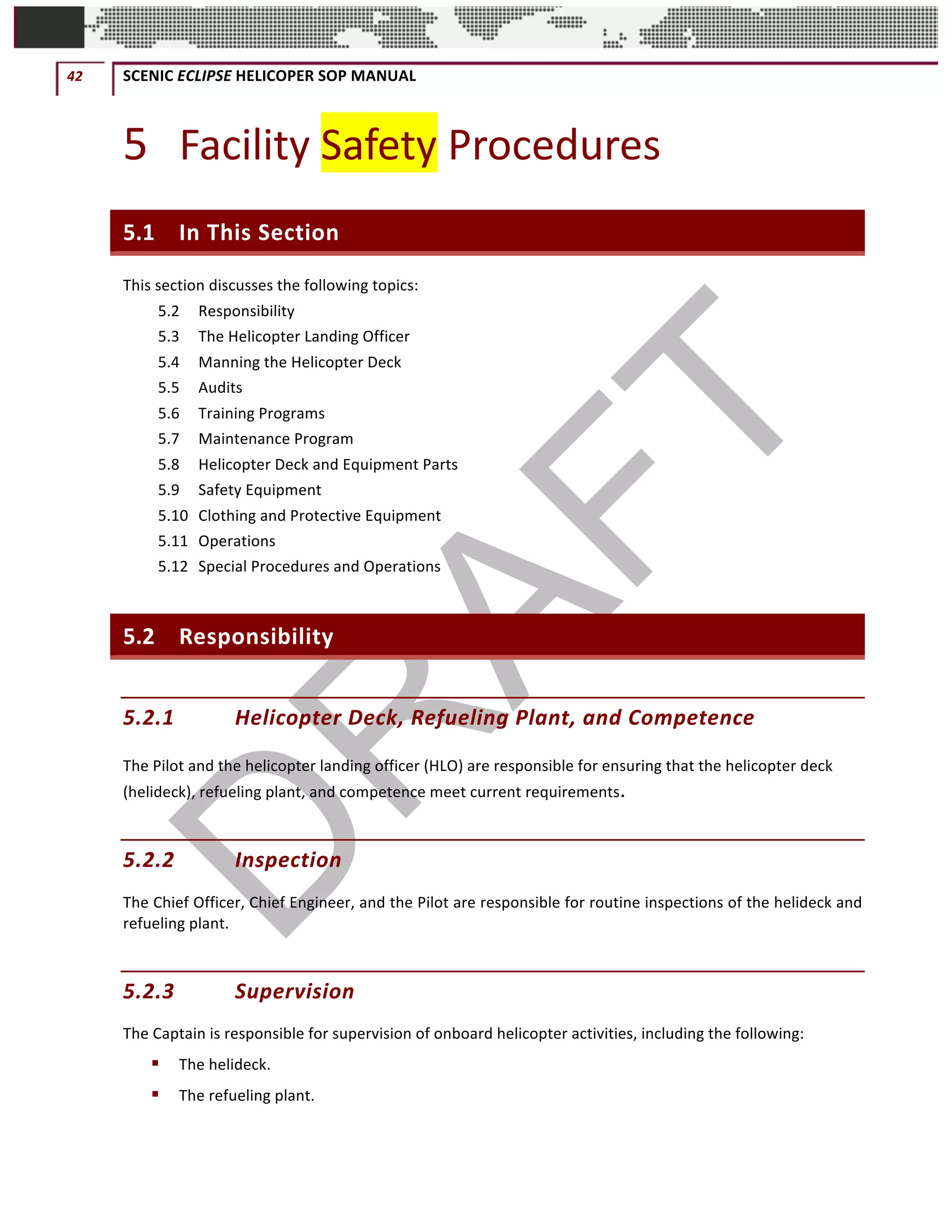

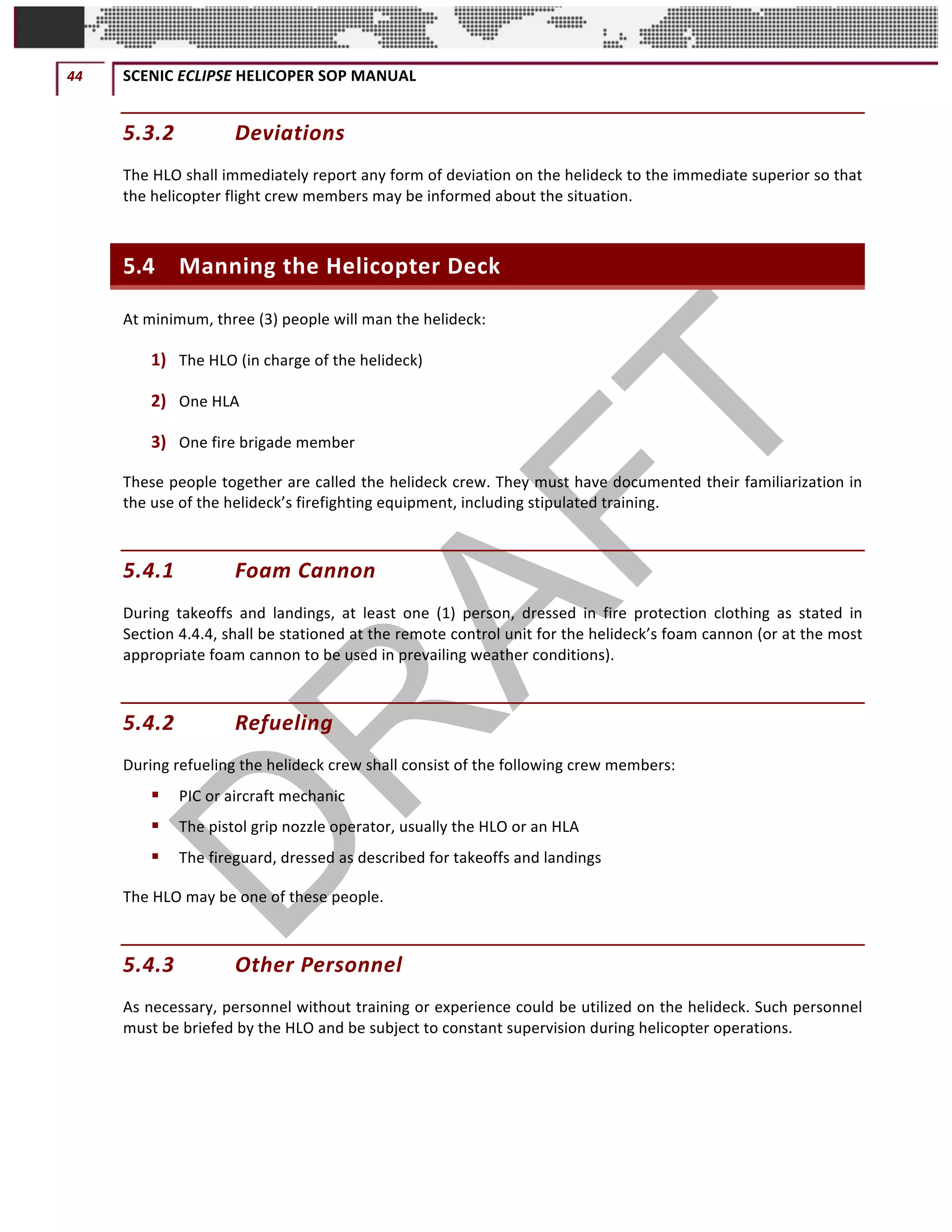
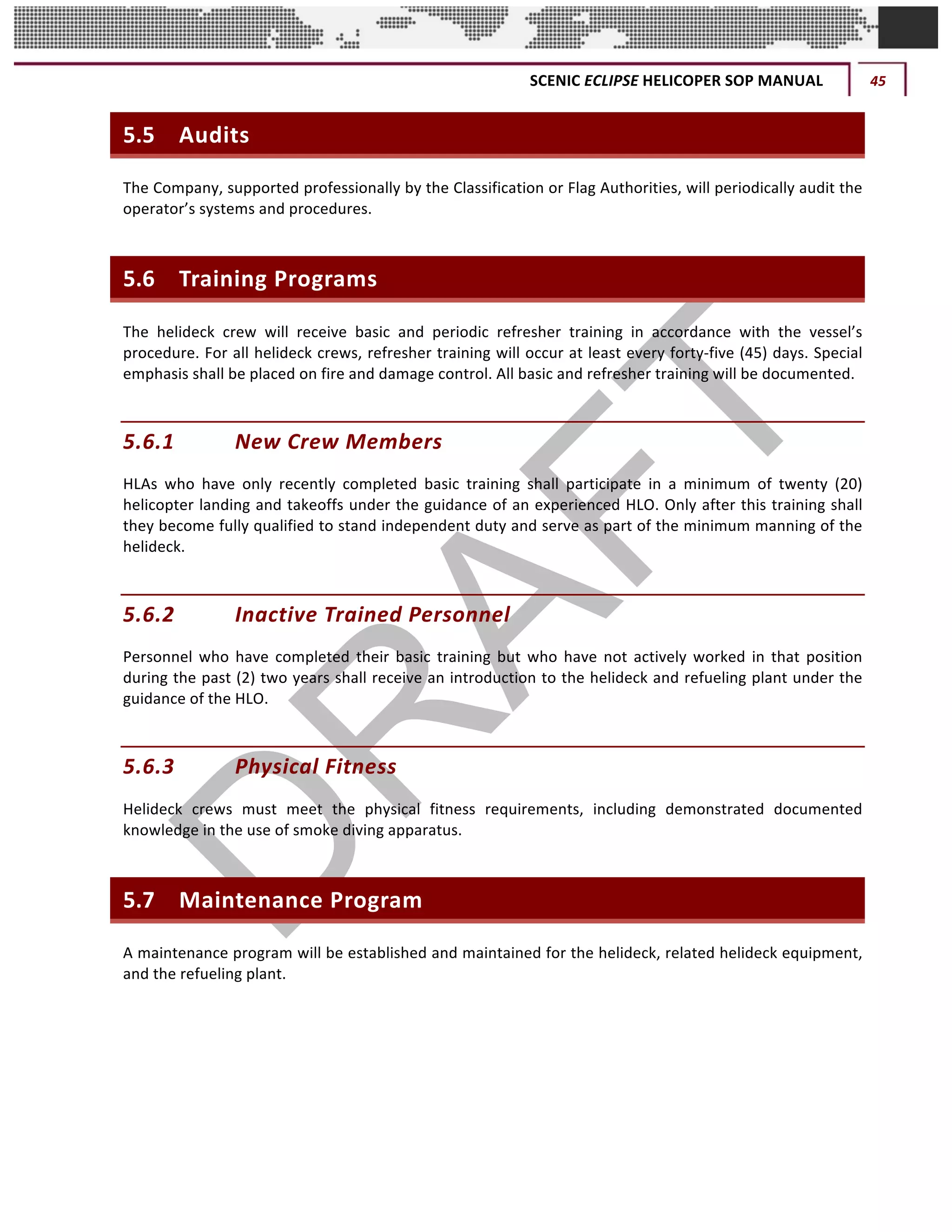
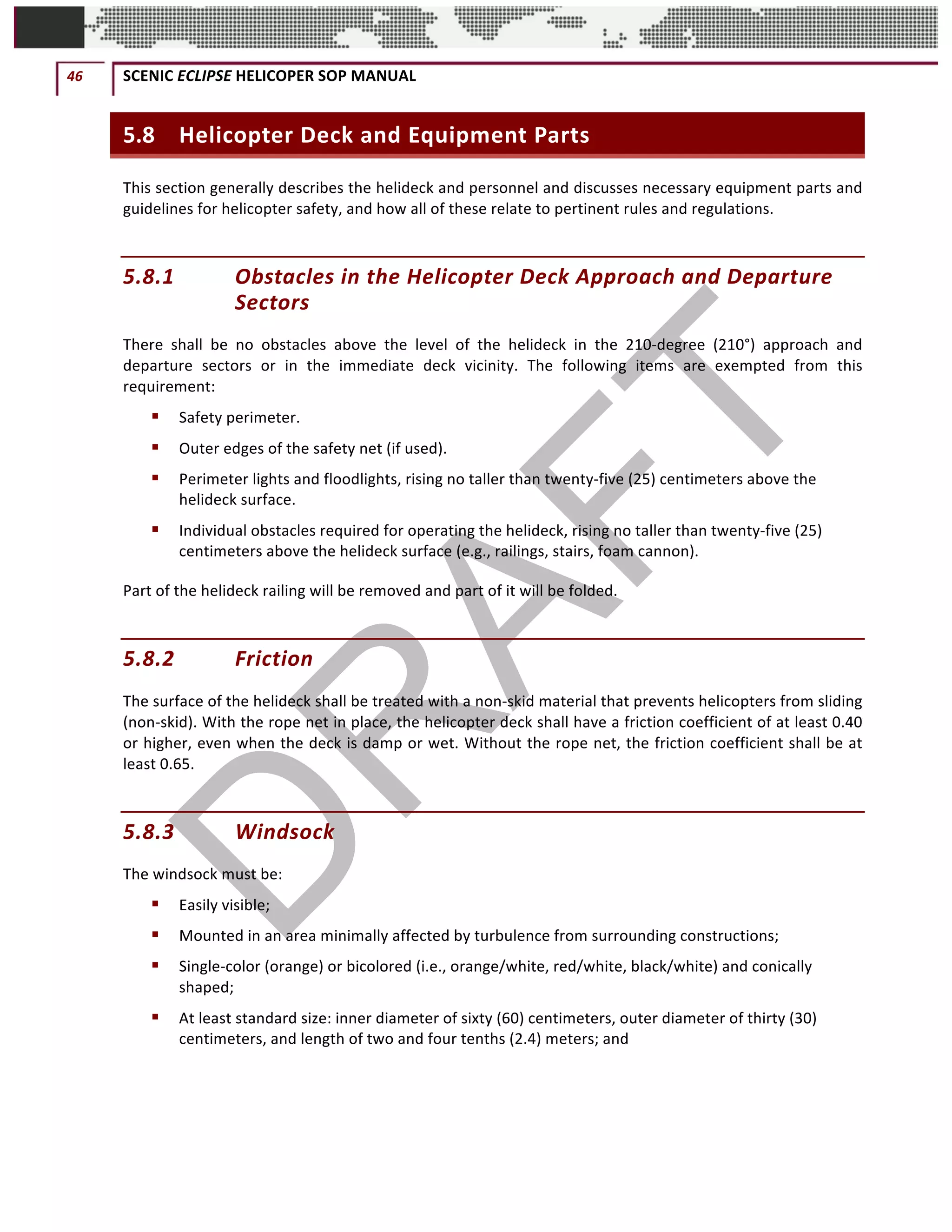
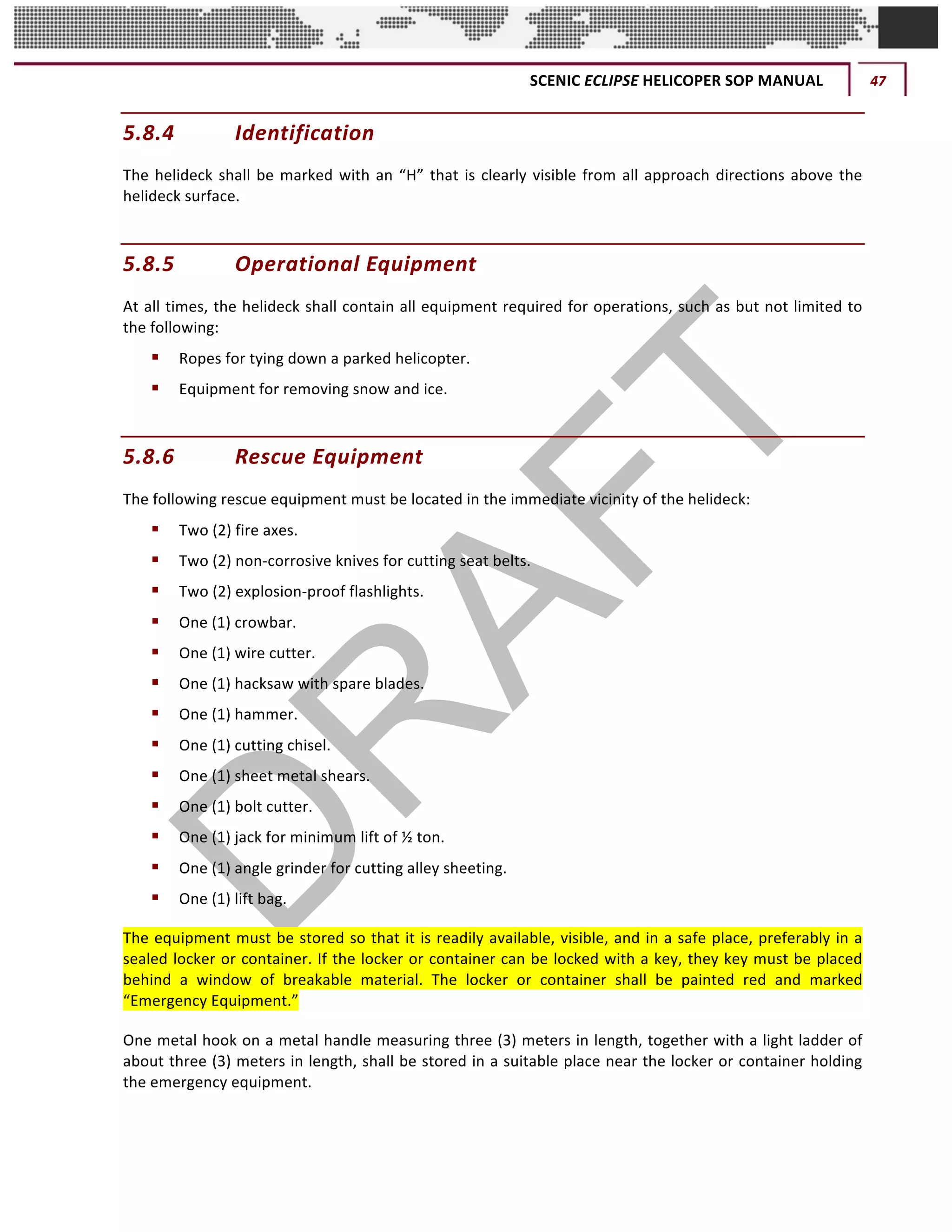
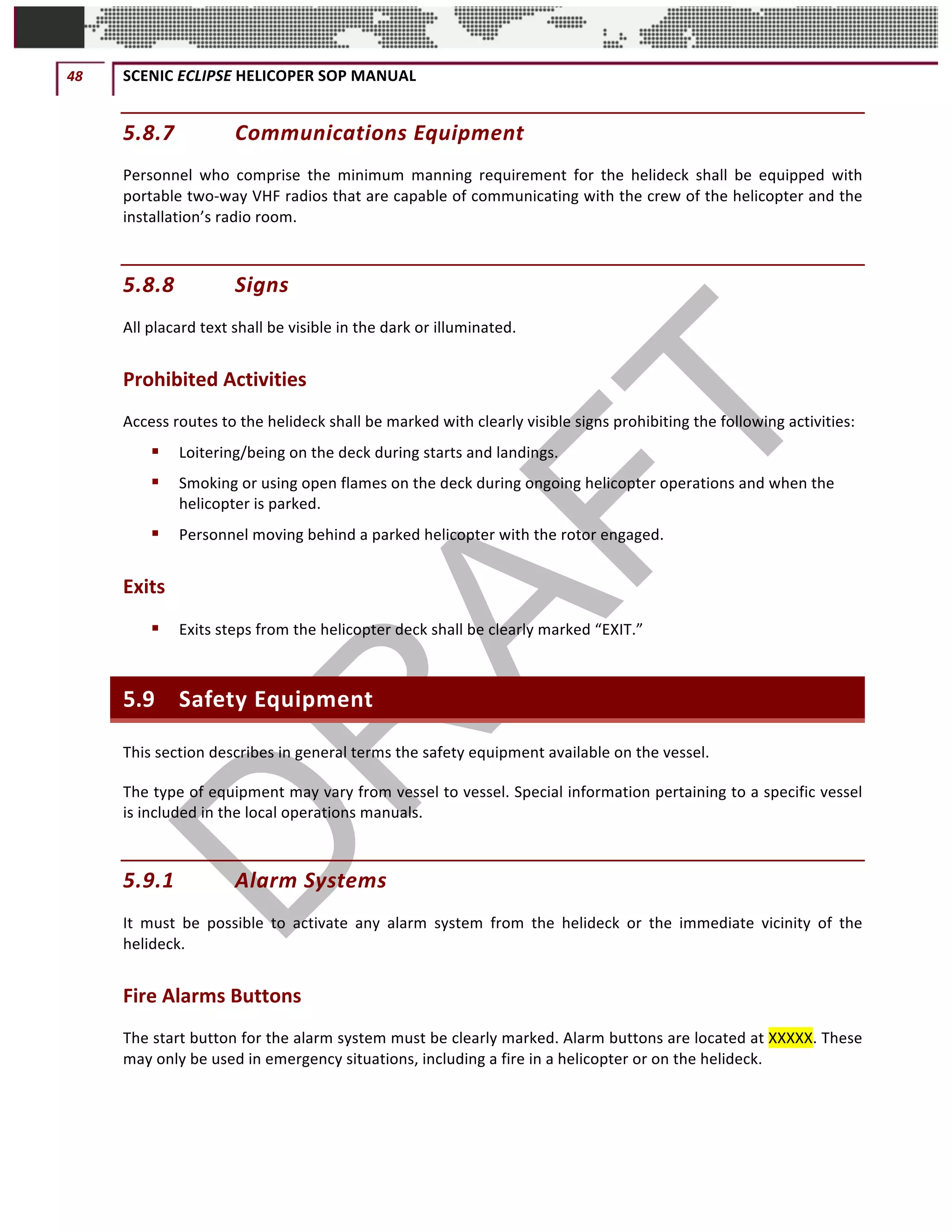
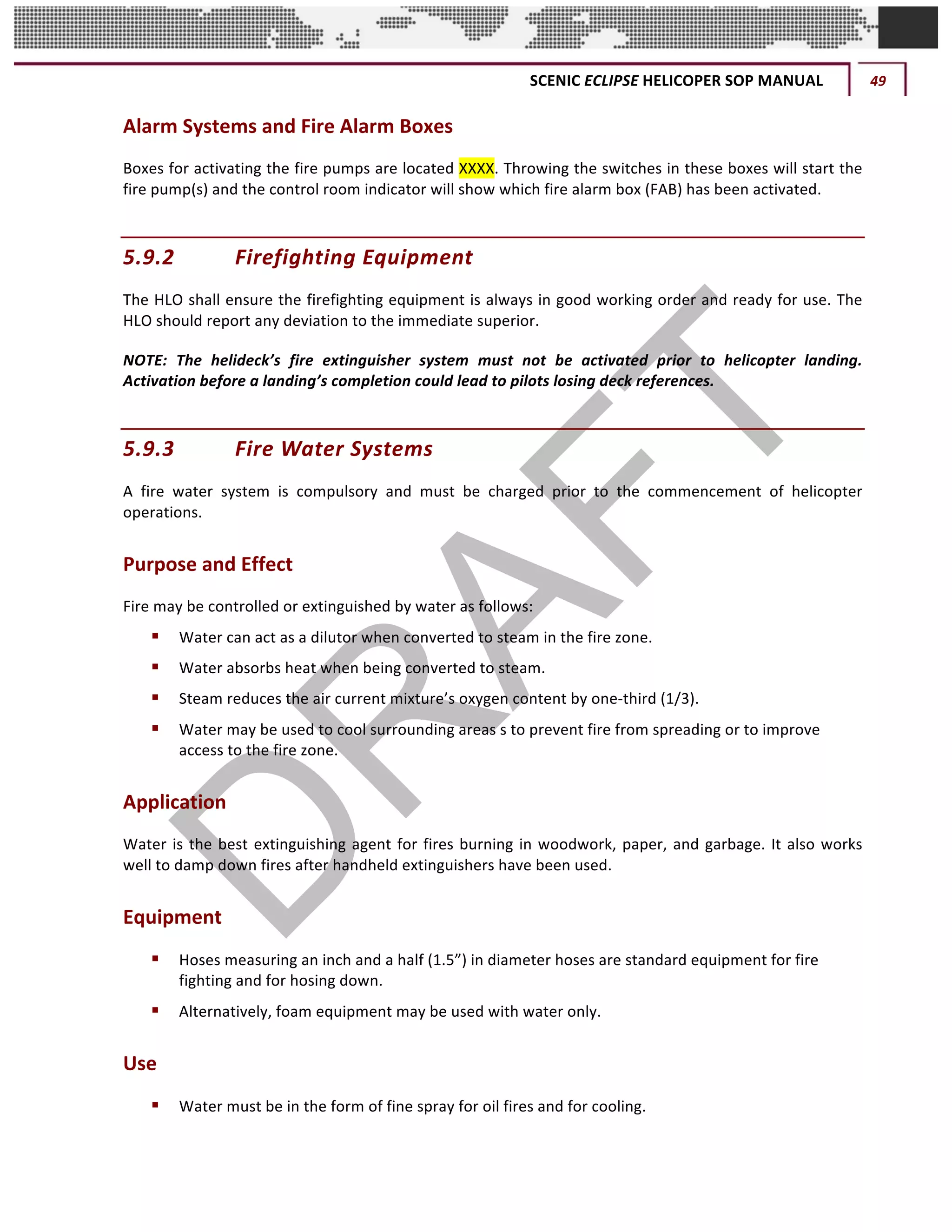
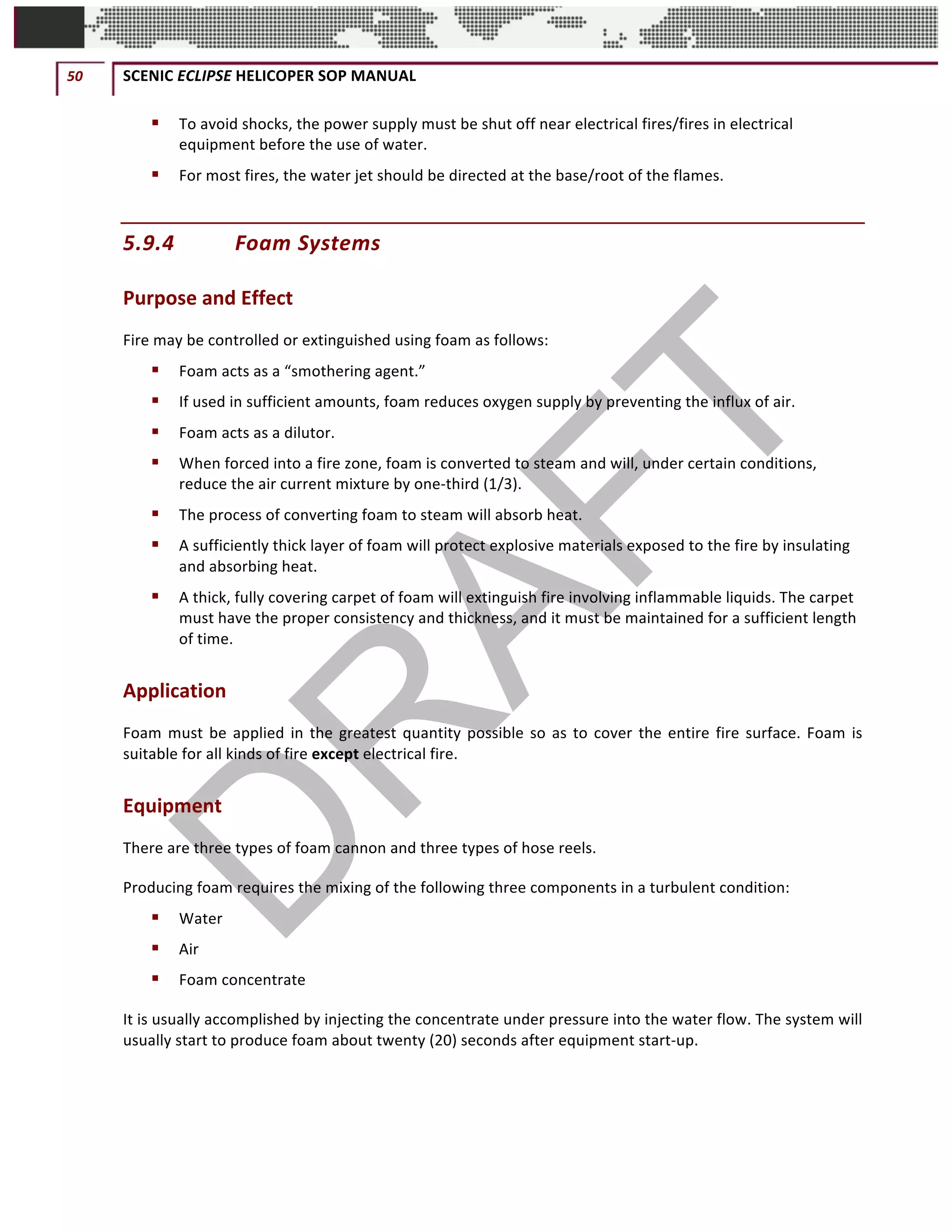

![52 SCENIC ECLIPSE HELICOPER SOP MANUAL
© QC AVIATION
5.10 Clothing and Protective Equipment
5.10.1 Equipment Set Contents
During takeoff and landing, each member of the helideck crew must have immediate access to one set of
equipment, consisting of the following:
§ Protective firefighting clothing.
§ Protective firefighting gloves.
§ Helmets for firefighting.
§ Safety shoes for occupational use.
§ Smoke diving equipment (a minimum of two [2] sets for distribution).
5.10.2 Location
When not in use, the equipment shall be stored in a separate locker, ready for rapid donning, in the
immediate vicinity of the helideck. The locker must be marked: “Fire Protection”
In addition to the required fire protection equipment, the locker must also contain the following items:
§ At least two lifelines with a minimum length of fifteen (15) meters.
§ Two (2) fire inhibiting blankets.
§ Bolt cutters.
§ Cutting wheel (angle grinder).
5.10.3 Use of Protective Clothing
§ The member of the helideck crew stationed at the foam cannon shall, in addition to wearing the
smoke diving equipment, be dressed in all the fire protection clothing described above.
§ When there is reason to believe that a hazardous situation may arise on the helideck during
takeoffs and landings, all helideck crew members must wear fire protection gear.
§ Coveralls used for work on the helideck must be sufficiently rated for fire safety.
5.11 Operations
This section describes the helideck crew’s limitations and routine tasks during helicopter operations.](https://image.slidesharecdn.com/qcaviationsceniceclipsestandardoperatingproceduresmanualmasterdraftcopy8augcopy-200301115248/75/Standard-Operating-Procedures-Manual-56-2048.jpg)
